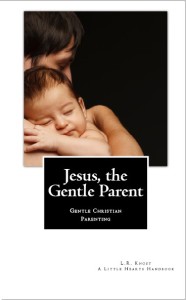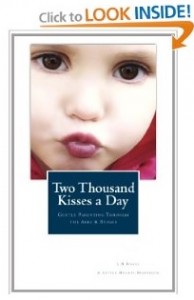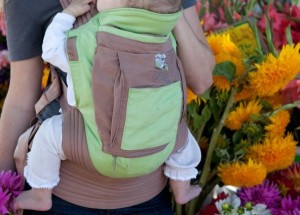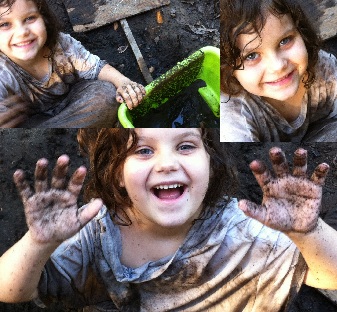‘Myths and Facts About Night Wakings’ by Tracy Cassels, Ph.D. Candidate in Developmental Psychology – Friends of L.R.Knost Rock the Guest Posts while She Battles Cancer
When you hear of most people talk of night-wakings in infancy, there seems to be a fear that somehow if they aren’t stopped (usually by a parent), one will be looking at long-term problems that will follow your infant into childhood and beyond. It’s really rather dramatic, especially for something that is so biologically normal for infants. After all, they biologically expect to breastfeed and the fat content of our human milk is much lower than in other mammals, meaning our babies need to feed frequently to simply stay alive and grow. (This is why scheduled feeds with hours between are linked with a ‘failure to thrive’ condition in the short-term[1] and lower intelligence in the long-term[2].)
But what is the situation with respect to night wakings across infancy, toddlerhood, and childhood? At what point do frequent night wakings pose a problem that will follow a child long-term? Or is it simply a state like any other state?
 Myth: Your baby should be sleeping through by 3 months of age.
Myth: Your baby should be sleeping through by 3 months of age.
Fact: Night waking is normal for babies and toddlers.
I think we first need to be clear that night waking itself isn’t really the “problem”. The “problem” is that when younger children wake, they often require parental help to fall back asleep, and so parents view night wakings as a problem[3] despite them being biologically normal and not contrary to healthy development. We must also be clear that when people believe their baby or child “sleeps through the night”, they can only refer to the fact that they do not wake when or if their child wakes. Babies and children can wake and fall asleep on their own again (though not all will) and so parents simply have no idea how often (if at all) these babies are rousing during the night.
How normal is night waking? Well, in a longitudinal study looking at night wakings between birth and 3 years of age, the percentage of infants/children who did not signal their parents at night from 6 months to 3 years only rose from 29.58% to 37.94%[4]. At 3 years of age, 25.6% of toddlers were waking and signaling their parents 3 or more nights per week. And notably, none of these children suffered any clinical problems or sleep disorders.
Myth: If your baby wakes regularly into the night, they will continue to wake in the night until you stop it.
Fact: Early night waking does not predict later night wakings.
 What do I mean? Well, I mean that night waking in infancy does not predict night waking at later ages, at least based on a very comprehensive, longitudinal study out of Switzerland[5] and there are no studies I have found that counter this finding. In this particular study, which examined 493 children and their families, night wakings from 3 months of age onward actually rose consistently until age 4, when over half of the children were waking at least once per week and 22% were waking every night. These numbers then declined slightly until age 10, but even at age 10, over 20% of children were waking at least once per week and around 4% were waking nightly. Notably, night waking in infancy (< 1-2 years) was not predictive of night waking later, but later (> 1-2 years) night waking was associated with further night wakings. Now, what the authors do not measure, and acknowledge as a limitation, is how long the child wakes, the reason for waking, does the child require parental help, breastfeeding, etc.
What do I mean? Well, I mean that night waking in infancy does not predict night waking at later ages, at least based on a very comprehensive, longitudinal study out of Switzerland[5] and there are no studies I have found that counter this finding. In this particular study, which examined 493 children and their families, night wakings from 3 months of age onward actually rose consistently until age 4, when over half of the children were waking at least once per week and 22% were waking every night. These numbers then declined slightly until age 10, but even at age 10, over 20% of children were waking at least once per week and around 4% were waking nightly. Notably, night waking in infancy (< 1-2 years) was not predictive of night waking later, but later (> 1-2 years) night waking was associated with further night wakings. Now, what the authors do not measure, and acknowledge as a limitation, is how long the child wakes, the reason for waking, does the child require parental help, breastfeeding, etc.
Notably, night wakings were not associated with other sleep disturbances, such as bedtime resistance and sleep-onset problems (i.e., the ability to fall asleep relatively efficiently). This implies that they are distinct from other sleep behaviours that parents find problematic. Though only my opinion, my take is that these other behaviours reflect social or emotional issues (e.g., anxiety around sleep, stress) while night wakings are more physiological or biological in nature.
[Somewhat off topic but fascinatingly, they found that increases in bedsharing in the toddler years was associated with less bedtime resistance or sleep-onset problems, suggesting that children are yearning for contact and experiencing separation anxiety which bedsharing provides a “fix” to. The authors propose this as well as cohort effects found that children raised in an earlier time did not have the bedsharing rates later groups did and had much greater reported problems associated with bedtime resistance and sleep-onset problems.]
Myth: Night waking is a sign that something is wrong and you have to do something to fix it.
Fact: Night waking often reflects developmentally appropriate behaviour across all ages.
One of the highlights of the Swiss research mentioned above was the acknowledgement that night wakings may not be negative at all, but rather reflect the individual developmental stage of any child. As they so wonderfully put it,
[N]ight wakings must be understood in the context of cognitive, emotional, and physical changes that occur at different developmental stages. Some children may need parental proximity during the night as during the day depending on their developmental level, individual characteristics, and attachment behavior.[5]
In the toddler years, night wakings are often associated with children coming into bed with the parents as many toddlers are first put to sleep in their own room or bed. The degree of separation anxiety that toddlers feel can be great and they require the proximity to parents to help feel safe again[6], leading to night wakings and moving sleep locations. This same feeling of anxiety or security can come at all ages throughout childhood, though, and a child that still demonstrates this at 8 or 9 years of age is still in the developmentally normal range. There is also the issue of nighttime fears and nightmares which increase with age through childhood until a peak (often early childhood) then start to decrease again; these fears are considered cognitively, socially, and emotionally normal[7], but do result in night wakings that often require parental involvement. Then of course there are the reasons we all tend to wake at night (adults included): Going to the bathroom, too much on our mind, stress, etc. These things can affect children as well, especially school-age children who have to cope with school, evolving relationships with friends, possible stress in the household, and more.
***
Lots of people today worry that night wakings reflect a “problem” and that they need to deal with it or else they will face long-term sleep problems. Well, first let’s be clear that night wakings in infancy have no predictive power over later night wakings. So you can put that little myth to rest. Second, you can be sure that night wakings are entirely normal through toddlerhood and are not associated with any ill effects for your child. Not all children will experience them, but those that do are not experiencing anything problematic. And finally, many of the children who continue to wake do so for very normal, developmentally appropriate reasons; just as adults often wake at night too. There may be times when parents need to seek help about their child’s sleep, but these will often be due to more than just night wakings. Clusters of problems are what parents should be concerned with, not night wakings alone.
So the next time someone – anyone – tells you that you need to stop your child from waking in the night, you can – at the very least – smile, nod, and go ahead and do absolutely nothing. Without worry.
Tracy Cassels is the founder and primary writer for Evolutionary Parenting. She obtained her B.A. in Cognitive Science from the University of California, Berkeley and an M.A. in Clinical Psychology from the University of British Columbia. She is currently a Ph.D. Candidate in Developmental Psychology, also at the University of British Columbia, where she is studying how certain evolutionary factors affect children’s empathic behavior. She can also be found on Facebook here.
Related posts:
Parenting Through Cancer: Coping with Emotions
My Cancer Story, Part 1: The Diagnosis
September 30, 2014 | Categories: anxiety, attachment parenting, breastfeeding, cosleeping, gentle parenting, natural parenting, positive parenting, preschooler, sleep issues, soothing, toddler | Tags: infants, parenting, preschoolers, sleep, toddlers | Leave A Comment »  Award-winnning author, L.R.Knost, is the founder and director of the children's rights advocacy and family consulting group, Little Hearts/Gentle Parenting Resources, and Editor-in-Chief of Holistic Parenting Magazine. Books by L.R.Knost include Whispers Through Time: Communication Through the Ages and Stages of Childhood ; Two Thousand Kisses a Day: Gentle Parenting Through the Ages and Stages ; The Gentle Parent: Positive, Practical, Effective Discipline ; and Jesus, the Gentle Parent: Gentle Christian Parenting the first four books in the Little Hearts Handbook gentle parenting series, and children’s picture books Petey’s Listening Ears and the soon-to-be-released Grumpykins series.
Award-winnning author, L.R.Knost, is the founder and director of the children's rights advocacy and family consulting group, Little Hearts/Gentle Parenting Resources, and Editor-in-Chief of Holistic Parenting Magazine. Books by L.R.Knost include Whispers Through Time: Communication Through the Ages and Stages of Childhood ; Two Thousand Kisses a Day: Gentle Parenting Through the Ages and Stages ; The Gentle Parent: Positive, Practical, Effective Discipline ; and Jesus, the Gentle Parent: Gentle Christian Parenting the first four books in the Little Hearts Handbook gentle parenting series, and children’s picture books Petey’s Listening Ears and the soon-to-be-released Grumpykins series.
Parenting Through Cancer: Coping with Emotions
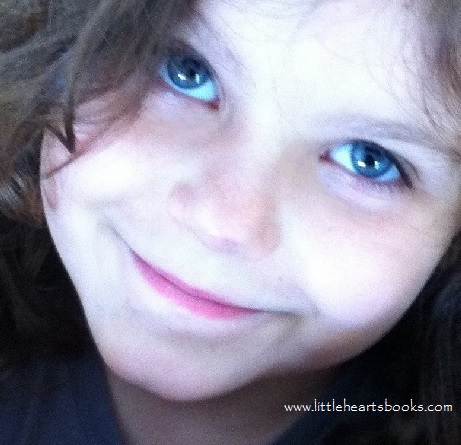 “Bedtime. Go grab your toothbrush from the suitcase, okay?”
“Bedtime. Go grab your toothbrush from the suitcase, okay?”
“Why?” my eight-year-old asks.
“It’s late, and we all need to sleep. Please go brush your teeth and get ready for bed,” I reply, distracted as I pack the last few things for my extended hospital stay after my surgery in the morning.
“Why?” her determined voice questions.
“We need to get ready for bed, sweetie,” I answer, still not glancing in her direction as I mentally go through my checklist to make sure I’ve packed everything I’ll need.
“Why?” she persists, her volume rising.
My attention is finally caught by her challenging tone, and I turn to look at her.
Belligerent eyes stare me down.
I take a deep breath to get through my first knee-jerk, stress reaction, then consciously slow my breathing, quiet my thoughts, and focus fully on my strong-spirited little girl who is clearly in contrary mode.
I wait.
She shifts, uncomfortable, then shoots, “Why?”
I soften my gaze and offer a slight smile.
I wait.
“Why?” she snaps again, a bit more quietly.
I hold her gaze calmly, knowing she needs space and time to work through her feelings before she’ll be able to share them.
I wait.
She turns away, her small shoulders stiff as she sits on the side of the bed, her back to me.
I wait.
A minute passes, then two. Then, in a soft voice, “I don’t want you to go.”
“I know,” I say quietly.
I wait again.
Moments pass in silence, then she whispers, “I’m scared.”
“I know, baby. I am, too,” I reply, struggling to hold back my own tears as I hear hers start.
And I wait.
Soon a small body crashes into me and my girl wraps her arms around me tightly. I hold her close, my heart breaking at the pain and fear I wish she never had to feel. After a few moments she slips away and brushes her teeth, then settles quietly into bed.
I lay awake throughout the night, listening to the even breathing of my sleeping eight-year-old nearby and cuddling my tiny cosleeper close and praying desperately for all of my children as I head into the unknown.
Hours later, I slip out of bed and kiss each sleeping child, then leave for an early hospital check-in. My heart stays behind with my feisty sweet girl and my little cosleeper and each one of my six incredibly unique and wonderfully kind-hearted children. This is so hard. Cancer sucks.
Related posts:
My Cancer Story, Part 1: The Diagnosis
The Gift of a Strong-Willed Child
Backtalk is Communication…LISTEN
Bridge Over Troubled Waters~Parenting a ‘Problem’ Child
Spare the Rod: The Heart of the Matter
Toxic Parenting: Spanking, Shaming, Threatening, Manipulating
September 28, 2014 | Categories: anxiety, attachment parenting, communication, cosleeping, defiance, discipline, fear, gentle discipline, gentle parenting, middle childhood, motherhood, my story, positive discipline, positive parenting, rebellion, stress | Tags: backtalk, defiance, gentle parenting, neuroendocrine cancer, peaceful parenting | 20 Comments »  Award-winnning author, L.R.Knost, is the founder and director of the children's rights advocacy and family consulting group, Little Hearts/Gentle Parenting Resources, and Editor-in-Chief of Holistic Parenting Magazine. Books by L.R.Knost include Whispers Through Time: Communication Through the Ages and Stages of Childhood ; Two Thousand Kisses a Day: Gentle Parenting Through the Ages and Stages ; The Gentle Parent: Positive, Practical, Effective Discipline ; and Jesus, the Gentle Parent: Gentle Christian Parenting the first four books in the Little Hearts Handbook gentle parenting series, and children’s picture books Petey’s Listening Ears and the soon-to-be-released Grumpykins series.
Award-winnning author, L.R.Knost, is the founder and director of the children's rights advocacy and family consulting group, Little Hearts/Gentle Parenting Resources, and Editor-in-Chief of Holistic Parenting Magazine. Books by L.R.Knost include Whispers Through Time: Communication Through the Ages and Stages of Childhood ; Two Thousand Kisses a Day: Gentle Parenting Through the Ages and Stages ; The Gentle Parent: Positive, Practical, Effective Discipline ; and Jesus, the Gentle Parent: Gentle Christian Parenting the first four books in the Little Hearts Handbook gentle parenting series, and children’s picture books Petey’s Listening Ears and the soon-to-be-released Grumpykins series.
‘Patience Doesn’t Feel Patient’ by Sarah Sprague – Friends of L.R.Knost Rock the Guest Posts while She Battles Cancer
 They say that bravery doesn’t feel brave or fearless because if you’re not afraid it is something other than bravery. I guess that patience is one of those things, as well.
They say that bravery doesn’t feel brave or fearless because if you’re not afraid it is something other than bravery. I guess that patience is one of those things, as well.
From the outside it looks like calm and peace but from the inside it can feel more like the tested limits of self control.
Learning to be patient is learning how to separate what we feel from how we act. It is learning to accept our feelings while choosing to not act on them. It is learning to say to ourselves:
I can be angry without acting angry.
I can be impatient without acting impatient.
I can be upset without acting upset.
I can be hurt without acting hurt.
I can feel without acting on my feelings.
I can feel without reacting to what I feel.
When I choose to act patient I slow down. I speak more slowly than I normally would. I lower my volume and I pace my words so that they won’t rush together in an explosion of words that no one will understand and that will act as a precursor to yelling. There’s a rhythm to this patience that doesn’t feel patient. A slow rhythm. A careful spacing of words. A slowness to how my body moves as I make sure that no part of me will gain a momentum that will feel like hitting or grabbing or being anything other than soft and gentle.
- When my toddler hits again.
- When my seven year old is upset that he doesn’t understand his homework and is avoiding doing it instead of asking questions.
- When my four year old has snuck his safety scissors into the other room so that he can cut apart a travel pillow to see what is inside, and the entire world feels like it’s covered with tiny Styrofoam pellets.
- When the two-and-a-half gallon water dispenser has been opened by someone curious and it has flooded the kitchen.
- When my three year old fed the fish every container of fish food all at once and the twenty nine gallon aquarium needed to have all of its water cleaned and replaced at bedtime.
I slow down to try and run in quicksand. I go slow-motion like walking through an empty room with a strobe light. I try and move my body through a thickened air. And I try to slow every word down so that it comes with a peace and gentleness that doesn’t show any of the frustration that I feel.
I grasp at all of the excuses that my child doesn’t yet have the words to offer. I try and see what positive or curious motivations they might have, or what stresses may be driving them to this place. I try to wrap every part of my heart and brain around empathy and love.
He sits at the table fiddling with his pencil. Nothing has been done on his worksheet, not even his name. He has gotten up to do half a dozen things. I have to make dinner. I have to sweep the floors. I have to do all the things on my to-do list.
“Issac.. Can you please do your homework?” I ask.
“Okay.” He says. And he picks up his pencil and stares off into space.
I am feeling anything but patient. My daughter has not napped today and she claws at my knees to be picked up, asks to draw on his homework with his pencil, and wants no substitutes for this thing that she cannot have. So now I’m being screamed at. I tap at his worksheet and he tells me to help Keenie calm down. So I walk away to find her some playdoh so that we can work on his homework together.
I come back. Nothing’s been done.
Breathe. Slow down. Find the reasons. Seven hour days at school with fifteen minute recesses. Not nearly enough time to decompress after school. He’s having a hard time reconnecting to what he’s trying to do.
I move slowly, lay my hand on his shoulder as softly and gently as I can. On contact my own tense muscles relax. This is my child. My son. He is seven and I love him dearly.
I plant a kiss on his head, and sniff his hair the way I used to when he was tiny, when he was a toddler. It smells just like him.
My other hand comes down to his worksheet. I’m standing behind him, my body enveloping his. Supporting and soft and patient, not angry and looming. My finger pointing to where he needs to write his name. Slow voice. Quiet voice. “Isaac, what does this say?” I ask. Trying to get him to look at the worksheet long enough to begin writing.
He writes his name.
“Now what’s the next question?” I ask. Soft. Slow. Clear. Strong.
He doesn’t answer. He doesn’t move.
I tap the paper. His eyes move to where I’m pointing.
“Can you read this for me?” I ask. He reads the question out loud.
“Do you understand what the question is asking?” I ask.
The dam breaks. He doesn’t understand. He screeches frustration and tells me that he didn’t understand in class.
My frustration is gone. I understand now. We go over what he can do if he doesn’t understand something in class. I ask him if he wants me to help him figure out how he can answer the questions or if he wants me to write a note on the top so that his teachers will know he needs more help with this topic. He chooses to have me try and show him how to work out the answers.
I sit down next to him. He’s fully engaged now.
Patience did not feel patient at first. But then. At the end of it, when I’ve responded well? When the crisis is past. When the messes have been cleaned up? When I’ve helped my seven year old slow down to re-focus and understand what he refuses to understand? When I’ve had self control and when I have acted patient?
That is when patience feels patient. When we’re past the thing that has me pulling my hair out. When we’re past the thing that has me wanting to move faster and raise my voice. When we’re past the thing that has me wanting to throw a tantrum all of my own.
That.. Is when I feel patient. Radiant. Powerful.
And it takes my breath away.
Sarah Sprague, creator of the ‘Wait-It-Out’ gentle sleep learning method (WIO), writes at Nurshable: Joy in Gentle Parenting and can be found on Facebook at Nurshable.
Related posts:
My Cancer Story, Part 1: The Diagnosis
September 26, 2014 | Categories: attachment parenting, baby led weaning, babywearing, breastfeeding, communication, cosleeping, gentle parenting, newborn, nursing, positive parenting, sleep issues, soothing, toddler | Tags: gentle parenting, infant, newborn, sleep issues, toddler, wait it out | 3 Comments »  Award-winnning author, L.R.Knost, is the founder and director of the children's rights advocacy and family consulting group, Little Hearts/Gentle Parenting Resources, and Editor-in-Chief of Holistic Parenting Magazine. Books by L.R.Knost include Whispers Through Time: Communication Through the Ages and Stages of Childhood ; Two Thousand Kisses a Day: Gentle Parenting Through the Ages and Stages ; The Gentle Parent: Positive, Practical, Effective Discipline ; and Jesus, the Gentle Parent: Gentle Christian Parenting the first four books in the Little Hearts Handbook gentle parenting series, and children’s picture books Petey’s Listening Ears and the soon-to-be-released Grumpykins series.
Award-winnning author, L.R.Knost, is the founder and director of the children's rights advocacy and family consulting group, Little Hearts/Gentle Parenting Resources, and Editor-in-Chief of Holistic Parenting Magazine. Books by L.R.Knost include Whispers Through Time: Communication Through the Ages and Stages of Childhood ; Two Thousand Kisses a Day: Gentle Parenting Through the Ages and Stages ; The Gentle Parent: Positive, Practical, Effective Discipline ; and Jesus, the Gentle Parent: Gentle Christian Parenting the first four books in the Little Hearts Handbook gentle parenting series, and children’s picture books Petey’s Listening Ears and the soon-to-be-released Grumpykins series.
‘The Myth of Baby Sleep Regressions: What’s Really Happening to Your Baby’s Sleep?’ by Pinky McKay – Friends of L.R.Knost Rock the Guest Posts While She Battles Cancer
 The 4 month sleep regression, the 12 month sleep regression, the 18 month sleep regression – what is happening?
The 4 month sleep regression, the 12 month sleep regression, the 18 month sleep regression – what is happening?
Of course, any time your baby’s sleep suddenly seems to go pear shaped , you wonder what am I doing wrong? Having a neat little term like ‘sleep regression’ gets you off the hook – it’s not you, it’s your baby. It’s a sleep regression. It’s normal and common and it will pass.
The term ‘sleep regression’ sounds more helpful than the patronising label ‘accidental parenting’ which implies you have done something to create your wakeful baby but you are such a half-wit you didn’t even realize you were doing something ‘wrong’. It sounds much smarter too and even a little bit intellectual, as though you have done your homework about infant sleep.
But here’s the thing: your baby isn’t having a ‘regression’. Sleep isn’t a milestone – even though it certainly feels like an achievement when your baby starts snoozing for several hours at a stretch. By the way, ‘all night’ in infant sleep studies means five hours sleep in a row –not eight hours like an adult or twelve hours like some baby books will tell you. The real, measurable, important milestones that signal your baby’s actual development can influence your baby’s sleep, or lack of it. So, when your baby, who has been sleeping in peaceful blocks, suddenly starts waking more frequently, it usually means he is approaching a real developmental milestone – he is not ‘regressing’, he is ‘progressing.’
Developmental milestones can be physical (rolling, crawling, cruising, walking), emotional (separation anxiety) and neurological. Neurological milestones are outlined in ‘The Wonder Weeks’ , a book by Dutch researchers, psychologists Franz Plooij and Hetty Van Der Rit , who observed many children in their homes over a number of years. They describe the ‘wonder weeks’ as critical periods of development that change the baby’s perception of his world. For instance, at 26 weeks, babies start to perceive distance. This means that as you walk away, your baby is now more aware of the distance that separates you and he will yell at you because the increasing distance between you and him is confusing and a bit scary.
As babies approach any new developmental phase, their perception of the world changes so, although this can be just a blip on the radar for some babies, more sensitive babies will need extra reassurance and can become quite clingy or generally unsettled at these times.
Because babies process information during their sleep – circulation to the brain almost doubles during REM sleep – it’s perfectly normal for them to wake more often as they are approaching new milestones. For instance, at around four months (the four month sleep ‘regression’ that everyone is talking about), babies are becoming much more aware of the world – they are babbling (this is the beginning of language acquisition), exploring things with their mouth (soon that will include their feet too as they suck their toes), they are recognizing familiar people (and becoming anxious around strangers – separation anxiety is kicking in), many babies are starting to roll over so they wake because they have unintentionally rolled onto their belly and this has woken them. They are confused and upset because they really wanted to be sleeping but that tiny brain processing information has resulted in some extra ‘practice’ of their new skill. All of this adds up to a very busy little brain that finds it difficult to switch off. And, as well as often having difficulty getting to sleep in the first place or resettling after being woken by their busy brains and bodies, when he wakes, confused, your baby will call for help from the most important person in his world – you.
Of course at any time if your baby suddenly becomes unsettled or wakeful, it’s important to check that there isn’t a medical reason for this or an impending illness such as sore ears or a urinary tract infection (babies generally wake when they wee if they have a UTI because it hurts), or if your baby has recently started family foods she isn’t upset by food sensitivities.
Once you have ruled out illness as a reason for sudden changes in your baby’s sleep patterns, consider your baby’s development: what new skills is your baby learning? Is she a bit more clingy during her awake times? Does she seem more sensitive right now? And try to see her wakefulness as a positive – she is not regressing, she is progressing. She is learning and developing in leaps and bounds. She isn’t waking because you have done anything wrong. You aren’t encouraging ‘bad habits’ you are helping your baby feel secure as she grows through these intense developmental stages. You don’t have to justify your baby’s behavior with fancy labels or reasons for her waking (except perhaps, to yourself if it makes you feel better).
The good news is that, as your baby masters each new milestone, there will be spells of sound sleep again – until the next developmental leap!
Pinky McKay is an International Board Certified Lactation Consultant and best selling author of Sleeping Like a Baby, 100 Ways to Calm the Crying, Parenting By Heart and Toddler Tactics. For more baby sleep tips, check out her bundle – Sleeping Like a Baby plus the recording package of interviews by leading international sleep researchers ‘The Truth About Infant Sleep – Science, Wisdom and Gentle Solutions’
Related posts:
My Cancer Story, Part 1: The Diagnosis
September 23, 2014 | Categories: attachment parenting, breastfeeding, cosleeping, gentle parenting, motherhood, natural parenting, newborn, nursing, sleep issues, soothing, toddler, Uncategorized | Tags: attachment parenting, cosleeping, gentle parenting, night waking, sleep issues | Leave A Comment »  Award-winnning author, L.R.Knost, is the founder and director of the children's rights advocacy and family consulting group, Little Hearts/Gentle Parenting Resources, and Editor-in-Chief of Holistic Parenting Magazine. Books by L.R.Knost include Whispers Through Time: Communication Through the Ages and Stages of Childhood ; Two Thousand Kisses a Day: Gentle Parenting Through the Ages and Stages ; The Gentle Parent: Positive, Practical, Effective Discipline ; and Jesus, the Gentle Parent: Gentle Christian Parenting the first four books in the Little Hearts Handbook gentle parenting series, and children’s picture books Petey’s Listening Ears and the soon-to-be-released Grumpykins series.
Award-winnning author, L.R.Knost, is the founder and director of the children's rights advocacy and family consulting group, Little Hearts/Gentle Parenting Resources, and Editor-in-Chief of Holistic Parenting Magazine. Books by L.R.Knost include Whispers Through Time: Communication Through the Ages and Stages of Childhood ; Two Thousand Kisses a Day: Gentle Parenting Through the Ages and Stages ; The Gentle Parent: Positive, Practical, Effective Discipline ; and Jesus, the Gentle Parent: Gentle Christian Parenting the first four books in the Little Hearts Handbook gentle parenting series, and children’s picture books Petey’s Listening Ears and the soon-to-be-released Grumpykins series.
Breastfeeding: Manna from God
[Excerpt reprinted from Jesus, the Gentle Parent: Gentle Christian Parenting by L.R.Knost. Two Thousand Kisses a Day: Gentle Parenting Through the Ages and Stages; Whispers Through Time: Communication Through the Ages and Stages of Childhood; and The Gentle Parent: Positive, Practical, Effective Discipline by L.R.Knost also available on Amazon and through other major retailers.]
~~~~~~~~~~~~~~
“But we proved to be gentle among you, as a nursing mother tenderly cares for her own children.”
1 Thessalonians 2:7
 Jesus’ mother, Mary, didn’t practice attachment parenting when raising little Jesus. The Bible does tell us that she breastfed Jesus, “Blessed is the mother who gave you birth and nursed you.” (Luke 11:27). The culture of the time tells us that she likely coslept with him in the small, one or two room house typical of that period and that she wore him close to her heart in the daylight hours in a wrap to keep him safe from the snakes and scorpions and other dangers that populated the region. So it is certain that she was a breastfeeding mama and almost certain that she was a cosleeping and babywearing mama.
Jesus’ mother, Mary, didn’t practice attachment parenting when raising little Jesus. The Bible does tell us that she breastfed Jesus, “Blessed is the mother who gave you birth and nursed you.” (Luke 11:27). The culture of the time tells us that she likely coslept with him in the small, one or two room house typical of that period and that she wore him close to her heart in the daylight hours in a wrap to keep him safe from the snakes and scorpions and other dangers that populated the region. So it is certain that she was a breastfeeding mama and almost certain that she was a cosleeping and babywearing mama.
But Mary didn’t practice attachment parenting as she was growing a tiny Savior. She simply parented Jesus in the naturally instinctive way that mothers have mothered their little ones since time began. Attachment parenting is merely a term coined much later to tie these natural parenting choices and others in with the modern research of psychologists like John Bowlby who found that the healthiest emotional and relational adults tended to have strong early attachments with a parent or primary caregiver.
The Bible reinforces those research findings by not just referring to breastfeeding as providing life-sustaining nutrition, but also as a source of comfort and connection, “For you will nurse and be satisfied at her comforting breasts.” (Isaiah 66:11)
God’s biological design for breastfeeding weaves a developing infant’s needs with a mother’s needs into a delicately synchronized dance, and even daddies get in on the dance! There is an inbuilt, biochemical response to the birth of a baby that affects both sexes in similar, though somewhat different ways. As the birth of a new baby nears, a mother’s oxytocin level, known as the ‘love hormone’ because of its ability to create warm feelings of safety and attachment, increases as part of the preparation for bringing a new life into the world and sustaining that life at her breast. Daddies also experience a rise in oxytocin, as well as an increase in estrogen, which results in their brains being pre-wired to love and protect their mate and offspring. Then, after birth and throughout the breastfeeding relationship, oxytocin levels in mamas and daddies remain elevated, rising and falling in rhythmic peaks and valleys in response to a baby’s ever-changing needs. This is no accident of nature. This is a beautiful biological design.
This lovely and perfect design also reveals itself in the balance of nutrients present in breastmilk. Breastmilk has the perfect composition of calories, nutrients, fats, and other components to ensure the optimal development of a growing infant. The composition of breastmilk shifts to accommodate growth spurts, sicknesses, and other needs throughout a mother and child’s nursing relationship. Interestingly, the ratios of each of the components change throughout the day to offer the most energy during the daylight hours and the highest concentrations of sleep-inducing nucleotides during nighttime feeding, so if a mama is pumping and storing breastmilk, it’s important to label the time of day the milk was pumped to avoid giving the more stimulating daytime milk at night!
Beyond the nutritional and bonding benefits of breastfeeding, there are also amazing health benefits to both mama and baby:
A reduction in the risk of SIDS, asthma, childhood leukemia, diabetes, gastroenteritis, otitis media (ear infections), LRTIs (pneumonia, bronchitis, etc), necrotizing enterocolitis, and obesity are just some of the protective benefits for babies. For mothers, breastfeeding has been correlated with a significant decrease in the risk of diseases such as breast cancer, ovarian cancer, diabetes, and heart disease to name just a few.
Additionally, the Journal of the American Academy of Pediatrics released a study in April of 2010 that concluded, “The United States incurs $13 billion in excess costs annually and suffers 911 preventable deaths per year because our breastfeeding rates fall far below medical recommendations.” Those numbers are only based on breastfeeding benefits for the first six months of life. The World Health Organization, American Academy of Pediatrics, Centers for Disease Control, and others recommend breastfeeding for the first two years of a child’s life. Imagine the tally if the researchers had looked at the lives lost and billions of dollars spent unnecessarily in a two year breastfeeding scenario instead of a six month scenario. (Two Thousand Kisses a Day: Gentle Parenting Through the Ages and Stages)
Some stumbling blocks in the breastfeeding relationship that mamas may encounter include the modern societal view of breasts as solely sexual objects which often leads those in public places, including many churches, to shame mothers into hiding in restrooms or vehicles or at the very least using covers that make breastfeeding far more difficult and clumsy than it needs to be. Biblically speaking, breasts are referred to half as often in reference to sexual relationships as they are in reference to the God-designed breastfeeding relationship between mothers and their little ones. Again, that is no accident!
Breastfeeding is not shameful and should not be hidden. As one of our current world leaders, Pope Francis, said during a 2014 baptism ceremony at the historic Sistine Chapel,
“Today the choir will sing, but the most beautiful choir of all is the choir of the infants who will make a noise. Some will cry because they are not comfortable or because they are hungry,” Francis said, according to Reuters. “If they are hungry, mothers, feed them, without thinking twice. Because they are the most important people here.”
He didn’t tell them to leave or to cover up or to make their babies wait. He tenderly told the young mothers to feed their babies when they’re hungry. End of story.
Another stumbling block to a healthy, full-term breastfeeding relationship is the increasingly prevalent diagnosis of low milk supply:
Even though mothers’ bodies are capable of miraculously growing a human being for nine months and bringing that precious new life into the world, those same life-giving bodies seem to be failing in ever-increasing numbers to provide life-giving nutrition to those precious babies because of issues with low milk supply.
Why is this happening? For some, it is certainly just pediatricians using formula-fed babies’ growth charts instead of breastfed babies’ charts or family and friends who believe that all babies should be chubby and content that lead new mothers to believe they have low supply, but there does appear to be an increasing number of babies legitimately labeled as failure-to-thrive with low milk supply determined to be the cause. (Two Thousand Kisses a Day: Gentle Parenting Through the Ages and Stages)
Often the low milk supply is caused by forcing babies to sleep alone and training them to sleep through the night. The fact is that babies aren’t biologically designed to sleep through the night. They are, though, biologically programmed to crave closeness with their mothers, and their proximity to and access to the breast throughout the night stimulates ongoing production of breastmilk, keeping up the mother’s supply naturally.As a simple matter of survival, it makes biological sense that God would build into babies a need to be near their primary source of safety, nutrition, and comfort:
Babies biologically should not sleep through the night. Not only is the deep sleep required to sleep through the night actually a recognized factor in SIDS (Sudden Infant Death Syndrome), but babies who sleep through the night are also not nursing to stimulate breastmilk production, thus their mother’s milk may begin to dry up. Clearly, that’s not a healthy biological design. (Two Thousand Kisses a Day: Gentle Parenting Through the Ages and Stages)
The bottom line is that breastfeeding is a biological norm created by God to meet a baby’s needs in the healthiest and most convenient way. That said, there are certainly times when a mother can’t breastfeed due to a medical condition, life circumstances, adoption, or other factors. In those cases mamas can still achieve a healthy attachment and strong, loving relationship and even boost their oxytocin ‘love hormone’ levels by holding their little ones close to their hearts during feeding, making eye contact and exchanging smiles and coos and giggles, kissing and nuzzling their babies’ fuzzy little heads, keeping their little ones close during the day in a baby wrap or sling, taking time out for a few periods of ‘kangaroo care’ each day, and meeting nighttime needs quickly, gently, and consistently. (end excerpt)
Related posts:
Ten Steps to Surviving the First Three Months with a Newborn
Love in the Time of Cosleeping
300+ Nicknames for Your Babykins…Doodlebug…Snugglebunny…
Babywearing Basics Resource Guide
Breastfeeding, Babywearing, and Bouncing Back into Shape after Baby
Jesus, the Gentle Parent: Gentle Christian Parenting
Tattered Tapestries: Weaving Trust Through the Chaos
Fear Doesn’t Lead to Faith: Becoming Your Child’s Safe Place
Where Did You Learn Love, Child?
Spare the Rod: The Heart of the Matter
Gentle Journeys: A Book Club for a New Generation
May 22, 2014 | Categories: attachment parenting, babywearing, Bible, birth, breastfeeding, cosleeping, gentle parenting, Jesus, life, motherhood, natural parenting, newborn, nursing, parenting guide, pregnancy, sleep issues, soothing, toddler | Tags: attachment parenting, babywearing, Bible, breastfeeding, Christian, cosleeping, Jesus, kangaroo care, newborn, parenting, toddler | 2 Comments »  Award-winnning author, L.R.Knost, is the founder and director of the children's rights advocacy and family consulting group, Little Hearts/Gentle Parenting Resources, and Editor-in-Chief of Holistic Parenting Magazine. Books by L.R.Knost include Whispers Through Time: Communication Through the Ages and Stages of Childhood ; Two Thousand Kisses a Day: Gentle Parenting Through the Ages and Stages ; The Gentle Parent: Positive, Practical, Effective Discipline ; and Jesus, the Gentle Parent: Gentle Christian Parenting the first four books in the Little Hearts Handbook gentle parenting series, and children’s picture books Petey’s Listening Ears and the soon-to-be-released Grumpykins series.
Award-winnning author, L.R.Knost, is the founder and director of the children's rights advocacy and family consulting group, Little Hearts/Gentle Parenting Resources, and Editor-in-Chief of Holistic Parenting Magazine. Books by L.R.Knost include Whispers Through Time: Communication Through the Ages and Stages of Childhood ; Two Thousand Kisses a Day: Gentle Parenting Through the Ages and Stages ; The Gentle Parent: Positive, Practical, Effective Discipline ; and Jesus, the Gentle Parent: Gentle Christian Parenting the first four books in the Little Hearts Handbook gentle parenting series, and children’s picture books Petey’s Listening Ears and the soon-to-be-released Grumpykins series.
Healing Your Hurts So You Don’t Hurt Your Children
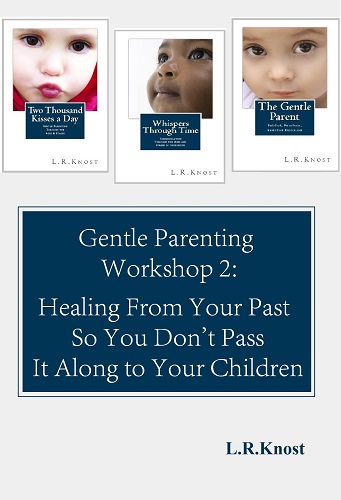 Gentle Parenting Workshop 2: Healing from Your Past so You Don’t Pass it Along to Your Children will help you work through the steps of recovery from a painful past, leading you on a journey of healing and forgiveness, of unloading negative emotional baggage into the past where it belongs instead of unloading it onto your children and passing it along to the next generation, and of renewal to open the pathway to a more peaceful and gentle approach to parenting.
Gentle Parenting Workshop 2: Healing from Your Past so You Don’t Pass it Along to Your Children will help you work through the steps of recovery from a painful past, leading you on a journey of healing and forgiveness, of unloading negative emotional baggage into the past where it belongs instead of unloading it onto your children and passing it along to the next generation, and of renewal to open the pathway to a more peaceful and gentle approach to parenting.
“The key to freedom is forgiveness. Forgiveness drains the past of its power to drain the present of its peace. Keep in mind, though, that it’s a journey, an ongoing life-process, a day-by-day decision, not a destination.
Forgiving someone doesn’t mean telling them that hurting us was okay. It means telling ourselves that it’s okay to stop hurting. It doesn’t mean we have to trust them again. It means we can learn to trust ourselves again because we deserve it. It doesn’t mean we have to give them a free pass back into our lives. It means we are free to take our lives back again. Forgiving is letting the hurts of the past go so that we can move freely into the future.”
The Gentle Parenting Workshop 2 walks you through five stages of healing and emotional freedom, including multiple action steps for you to take along the way from making the decision to change to identifying your triggers to forgiving your own mistakes of the past to coping when life hits hard.
“When a tragedy strikes in the form of a death or a life-changing illness or an accident, or when our lives are suddenly turned upside-down due to a divorce or other major life event, we need to grieve the loss of our old lives, our old ‘normal,’ our younger, more carefree, and unwounded selves, so that we can embrace our new normal and learn to live fully and joyfully again. Just as if a person had hurt us, we are hurting humans and we need to take the time and make the investment in self-care to work through the hurt and emerge a wiser, more mature, and more compassionate human.”
Remember, it’s easier to grow heart-whole children than it is to repair broken-hearted adults. Continuing to pass pain from one generation to the next is costly, but giving your children the gift of a happy childhood is truly priceless.
Gentle Parenting Workshop 2: Healing from Your Past so You Don’t Pass it Along to Your Children ~ .99 cents on Amazon for Kindle, to download onto your computer, iPhone or other smart phone, or iPad
Other gentle parenting resources you may find helpful:
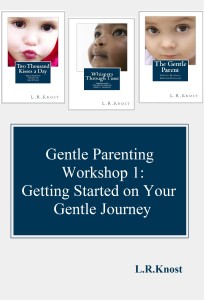 Gentle Parenting Workshop 1: Getting Started on Your Gentle Journey
Gentle Parenting Workshop 1: Getting Started on Your Gentle Journey
The Gentle Parenting Workshop series from award-winning author, L.R.Knost, is a companion series to her best-selling parenting books, ‘Two Thousand Kisses a Day,’ ‘Whispers Through Time,’ and the newest release, ‘The Gentle Parent.’ This first workshop in the series, ‘Gentle Parenting Workshop 1: Getting Started on Your Gentle Journey,’ will help you set your gentle parenting goals, identify specific parenting problems, and target practical solutions to help you along on your journey to gentle parenting.
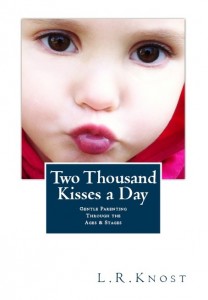 Two Thousand Kisses a Day: Gentle Parenting Through the Ages and Stages
Two Thousand Kisses a Day: Gentle Parenting Through the Ages and Stages
Calm, Reassuring, Likable ~ Written in L.R.Knost’s signature easy-to-read and conversational style, ‘Two Thousand Kisses a Day’ offers an overview of gentle parenting from birth through young adulthood along with concrete suggestions and insights into how to implement gentle parenting in each stage of childhood. Her seasoned and practical approach based on extensive child development research and years of parent mentoring as well as over twenty-five years of parenting her six children is as likable as it is reassuring. Parents with children of any age will find this information-packed book with its bite-sized chapters and practical approach to parenting a helpful and encouraging addition to their home library, as well as a welcome gift for new or struggling parents. ~The Parenting Review
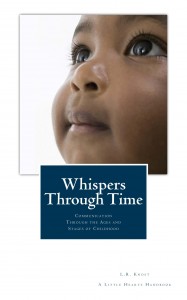 Whispers Through Time: Communication Through the Ages and Stages of Childhood
Whispers Through Time: Communication Through the Ages and Stages of Childhood
Sweet, Funny, Insightful ~ Award-winning ‘Whispers Through Time’ by L.R. Knost is destined to be a dog-eared favorite, passed down from generation to generation. L.R. Knost shows parents how to find their own answers for their own children and their own families in this guidebook as she challenges conventional thinking with a wisdom born of experience and a healthy dose of research to back it up. Written with the same unique blend of sweetness and humor, grit and honesty, reassurance and insight that made L.R. Knost’s first book, ‘Two Thousand Kisses a Day: Gentle Parenting Through the Ages and Stages,’ a best-seller, ‘Whispers Through Time’ has become a runaway hit in its own right. ~The Parenting Review
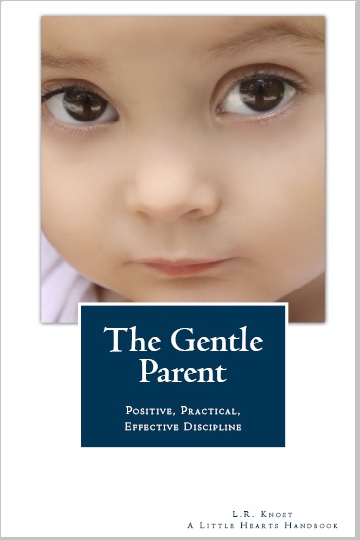 The Gentle Parent: Positive, Practical, Effective Discipline
The Gentle Parent: Positive, Practical, Effective Discipline
Relaxed, Reassuring, Practical ~ Written by L.R.Knost, best-selling, award-winning author of ‘Two Thousand Kisses a Day’ and ‘Whispers Through Time,’ ‘The Gentle Parent: Positive, Practical, Effective Discipline’ shares the simple secrets of a peaceful, happy home in the Three C’s of gentle discipline–Connection, Communication, and Cooperation. In her signature relaxed and poetic style, L.R.Knost gently guides parents through the steps of applying the Three C’s in real-life scenarios from tantrums to defiance to parenting a strong-willed child to healing a broken parent/child relationship. Practical and proven, this newest installment in the Little Hearts Handbook parenting series will be tucked into diaper bags, kept handy on nightstands, and shared with good friends for its research-backed, experience-based, and humor-rich insights, ideas, and inspiration. ~The Parenting Review
February 7, 2014 | Categories: anxiety, attachment parenting, bullying, childhood, Christian parenting, communication, fatherhood, gentle discipline, gentle parenting, grace-based discipline, hitting, lashing out, life, loss, love, motherhood, parenting guide, positive discipline, positive parenting, PPD, pregnancy loss, stillbirth, stress, wise council | Tags: books, discipline, fatherhood, forgiveness, gentle parenting, healing, motherhood, parenting, parenting guide, past, workshops | 7 Comments »  Award-winnning author, L.R.Knost, is the founder and director of the children's rights advocacy and family consulting group, Little Hearts/Gentle Parenting Resources, and Editor-in-Chief of Holistic Parenting Magazine. Books by L.R.Knost include Whispers Through Time: Communication Through the Ages and Stages of Childhood ; Two Thousand Kisses a Day: Gentle Parenting Through the Ages and Stages ; The Gentle Parent: Positive, Practical, Effective Discipline ; and Jesus, the Gentle Parent: Gentle Christian Parenting the first four books in the Little Hearts Handbook gentle parenting series, and children’s picture books Petey’s Listening Ears and the soon-to-be-released Grumpykins series.
Award-winnning author, L.R.Knost, is the founder and director of the children's rights advocacy and family consulting group, Little Hearts/Gentle Parenting Resources, and Editor-in-Chief of Holistic Parenting Magazine. Books by L.R.Knost include Whispers Through Time: Communication Through the Ages and Stages of Childhood ; Two Thousand Kisses a Day: Gentle Parenting Through the Ages and Stages ; The Gentle Parent: Positive, Practical, Effective Discipline ; and Jesus, the Gentle Parent: Gentle Christian Parenting the first four books in the Little Hearts Handbook gentle parenting series, and children’s picture books Petey’s Listening Ears and the soon-to-be-released Grumpykins series.
Two Thousand Connection Points a Day: Attachment Parenting Beyond Infancy
[Reprinted from Two Thousand Kisses a Day: Gentle Parenting Through the Ages and Stages by L.R.Knost. Whispers Through Time: Communication Through the Ages and Stages of Childhood and The Gentle Parent: Positive, Practical, Effective Discipline also now available on Amazon and through other major retailers.]
~~~~~~~~~~~~~~~~~~~~~
 From kicking and rolling and stretching to being lulled to sleep by the rhythmic cadence of a mama’s heartbeat, little ones spend the first months of their existence wrapped in a warm, dark, gently swaying cocoon, a life-giving embrace, the ultimate hug, readying themselves for their grand entrance to the world.
From kicking and rolling and stretching to being lulled to sleep by the rhythmic cadence of a mama’s heartbeat, little ones spend the first months of their existence wrapped in a warm, dark, gently swaying cocoon, a life-giving embrace, the ultimate hug, readying themselves for their grand entrance to the world.
Then, in those first moments of life beyond the womb, when the muffled sounds of the outside world become clear and the muted lights become glaringly bright, a warm chest with the scent of life-sustaining milk and the sweet sound of a familiar heartbeat welcome the little one to the comfort and safety of a mama’s arms.
In the days, weeks, and months following, little fingers and toes are counted and kissed again and again and again. Soft cheeks are snuzzled and a fuzzy little head is nuzzled, and two thousand kisses a day seems a reasonable number to a mama’s heart overflowing with tenderness for this tiny new member of the family.
Then comes the rolling and sitting and crawling and walking, and soon the two thousand kisses dwindle to brief morning cuddles before a toddler is off to explore the world, healing kisses on boo-boos, and goodnight snuggles with a bedtime book.
Time passes and the little one grows in independence, getting up and dressed and ready on their own, grabbing their own band-aid for a scrape, and reading themselves to sleep. Gone are the snuzzles and nuzzles of infancy, and the two thousand kisses a day are simply sweet memories.
Growing independence, though, doesn’t have to mean growing separation. Humans were created to be relational beings. We may outgrow our dependency, but we never outgrow the need for community, interaction, appreciation, reassurance, and support.
Infants, children, and adults alike all share this life-long need for connection. While over time that need will also be met through friendships, business engagements, social interactions, and the like, family relationships are the steady and sure bedrock of secure connection and belonging that ground us and assure us that our needs will not go unmet even in the darkest of times.
Attachment parenting is often misconstrued to be simply about breastfeeding, babywearing, cosleeping, etc. But, while those are possible choices for creating and maintaining a secure parent/child connection in the early years, they are just a small sampling of the relationship-building choices that parents can make throughout their children’s lives.
As little ones outgrow the ‘two thousand kisses a day’ stage, parents can begin consciously creating ‘two thousand connection points a day’ to replace those tender expressions of love with age-appropriate expressions of appreciation and approval, love and support.
From responding empathetically to a preschooler’s whine, to paying attention to a seven-year-old when they tell their endless stories, to listening ‘between the lines’ to the angst of a teen, maintaining a secure parent/child connection beyond infancy is simply about meeting emotional needs consistently, intentionally, and relationally.
Creating two thousand connection points a day isn’t about quality time, and it isn’t even about the quantity of time spent with our children. It is, instead, about being there in the small moments, the moments that matter to our children, and consciously meeting with them right where they are. It is about…
- Simply smiling and letting our eyes light up with welcome when our children walk in the room
- Maintaining eye contact when our children talk to us instead of letting our eyes constantly stray back to our laptop/iPhone
- Voicing our sincere appreciation for their latest ‘masterpiece’ or victory or achievement
- Expressing our affection physically in whatever way our children are comfortable with, whether it’s a wrestling match, a knuckle pound, or a hug
- Giving our children our undivided, wholehearted attention when they share their latest treasure or sing a never-ending song they make up as they go or just want to sit and be close for awhile
- Listening to what our children need to say without the threat of repercussion
- Inferring what they aren’t able to express verbally
- Welcoming our children into our daily lives, whether we are discussing politics or cooking dinner or fixing the toilet
- Allowing our children to express their emotions, even when they aren’t pretty
- Validating their anger, hurt, frustration, or embarrassment instead of minimizing or dismissing their feelings
- Helping them to process those emotions by listening and reflecting back what we hear
- Guiding them toward understanding of their own feelings and empathetically equipping them with coping mechanisms for the future
- Sharing our own hurts, disappointments, and mistakes in age-appropriate terms so they’ll know it’s okay to be human
- Honoring our children’s intense need to avoid embarrassment by offering guidance privately and respectfully, even if their behavior issue is public and/or disrespectful
- Sharing their interests even if the life-cycle of a snail wouldn’t be our first choice of dinner conversation
- Offering choices so they can grow in independence and confidence
- Supporting them even when their choices lead to disappointment or failure
- Being gently and kindly and completely honest about our own disappointment or hurt when their behavior negatively affects us so they’ll know they can trust us to be truthful, even in the hard things
- Helping them whenever and wherever they express a need for assistance so they’ll know they never have to go life alone
These connection points are all about maintaining and enriching a strong parent/child relationship through all of the ages and stages of childhood so that, through a foundation of trust and mutual respect, parenting takes the form of guiding instead of punishing, encouraging natural growth instead of forcing independence, and creating a strong, intimate, interwoven family fabric that will stand the test of time.
December 26, 2013 | Categories: adolescence, attachment parenting, babywearing, books, breastfeeding, childhood, children, communication, cosleeping, family, gentle parenting, middle childhood, motherhood, natural parenting, positive parenting, soothing, teens, toddler, Uncategorized | Tags: adolescents, attachment parenting, discipline, gentle parenting, motherhood, parenting, preschoolers, teens, toddlers | 4 Comments »  Award-winnning author, L.R.Knost, is the founder and director of the children's rights advocacy and family consulting group, Little Hearts/Gentle Parenting Resources, and Editor-in-Chief of Holistic Parenting Magazine. Books by L.R.Knost include Whispers Through Time: Communication Through the Ages and Stages of Childhood ; Two Thousand Kisses a Day: Gentle Parenting Through the Ages and Stages ; The Gentle Parent: Positive, Practical, Effective Discipline ; and Jesus, the Gentle Parent: Gentle Christian Parenting the first four books in the Little Hearts Handbook gentle parenting series, and children’s picture books Petey’s Listening Ears and the soon-to-be-released Grumpykins series.
Award-winnning author, L.R.Knost, is the founder and director of the children's rights advocacy and family consulting group, Little Hearts/Gentle Parenting Resources, and Editor-in-Chief of Holistic Parenting Magazine. Books by L.R.Knost include Whispers Through Time: Communication Through the Ages and Stages of Childhood ; Two Thousand Kisses a Day: Gentle Parenting Through the Ages and Stages ; The Gentle Parent: Positive, Practical, Effective Discipline ; and Jesus, the Gentle Parent: Gentle Christian Parenting the first four books in the Little Hearts Handbook gentle parenting series, and children’s picture books Petey’s Listening Ears and the soon-to-be-released Grumpykins series.
Are You a Parent ‘Reject’?
[Reprinted from Two Thousand Kisses a Day: Gentle Parenting Through the Ages and Stages by L.R.Knost. Whispers Through Time: Communication Through the Ages and Stages of Childhood and The Gentle Parent: Positive, Practical, Effective Discipline also now available on Amazon and through other major retailers.]
~~~~~~~~~~~~~~~~~~~~~
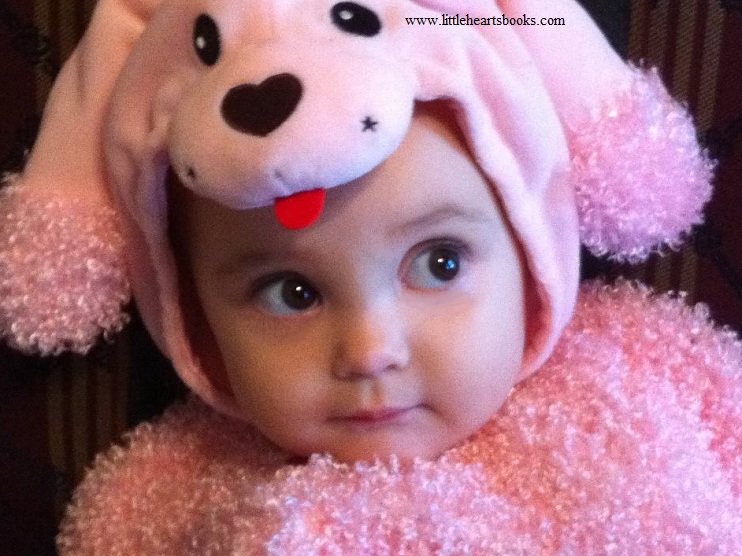 Capri points at the front door every morning and says, “Daddy, go!” Her daddy feels a bit rejected, especially on the weekends when he doesn’t have to go to work and his little girl cries because he won’t leave!
Capri points at the front door every morning and says, “Daddy, go!” Her daddy feels a bit rejected, especially on the weekends when he doesn’t have to go to work and his little girl cries because he won’t leave!
When Daddy and Luca play tickle monsters after bathtime, Mommy tries to join in, but Luca grabs Mommy’s hand and drags her back to her computer chair. Her mommy feels like she’s just the parent workhorse while Daddy gets to be the playmate.
Micah cries and yells, “No-no, Daddy!” when Daddy tries to help with bedtime. Daddy feels like he’s missing out on some of the most important memory-making parts of his little guy’s childhood.
While these parents’ feelings are, of course, valid, the rejection they are feeling is actually a misinterpretation of their children’s actions. Small children are creatures of habit. They’ve only recently arrived in this world and everything is strange and new and big and loud and confusing, so it makes sense that they find comfort and security in repetition and routine. That’s the reason they ask us to read the same book to them over and over and…well, you get the idea.
As they begin to learn and grow, they categorize things in order to understand them. That’s why right at first every animal is a ‘kitty’ and every drink is ‘juice.’ This same process of learning through categorization applies to relationships, as well. Children are constantly observing and studying their parents and the roles each of them play, and then using that information to construct a mental ‘schematic’ of their world.
If a child is accustomed to one parent doing the bedtime routine while the other is busy cleaning up after dinner, a sudden change in that routine may disrupt the little one’s schematic, and they will often resist or have a meltdown.
Understanding that it is the break in routine, the unexpected happening when a small child has settled in their mind what the ‘expected’ is, that is at the root of the issue can help a parent to overcome their feelings of rejection and focus on working toward a solution in a way that meets their child’s security needs.
Here are five ideas to try if you or your partner are a parent ‘reject’:
1.) When you know a routine is going to change, talk about it with your child ahead of time to prepare them. For instance, if your little one is used to Daddy going to work and you have a day off coming up, you can say, “Daddy gets to stay home and play tomorrow!” the evening before and then in the morning, “This is the day I get to stay home and play! What should we do first?”
2.) If you’d like to share the diapering duties, but your little one is used to just one parent doing the changes, start by having the non-diapering parent assist for a few changes, then switch roles, but continue to do it together until your baby is comfortable with the new routine.
3.) The same ideas apply to bedtime or bathtime routines, dropping off or picking up your little one from preschool, or any other routine your child is used to. If you need to change the routine, talk about it ahead of time to prepare them and then try to walk through the routine a few times together before switching roles or sharing the routine.
4.) If one parent has a special play time with your little one, instead of trying to join in, why not choose a separate time for the three of you to play together? That will allow them to have a special bonding time for just the two of them while providing an opportunity at another time for you all to bond as a family.
5.) Keep in mind that, especially for very young babies, their survival instinct may make them quite partial to their mommy for the first few months to a year old or even a bit beyond. That is a natural, normal, and healthy design inbuilt to ensure that they stay attached to their source of food and comfort. If a securely attached baby is having trouble bonding with anyone other than mommy, instead of trying to detach baby, try building your bond while baby is happy and content in mommy’s arms. Play peek-a-boo, make fishy-faces, read picture books, and just chat with baby. That will help your little one to begin to associate you with the same safety and comfort they feel in mommy’s embrace while building your own secure bond with them.
Related posts:
The Terrible Trouble with Toothbrushing: A Toddler’s Perspective
The Thoughtful Parent’s Guide to Positive Parenting Guides
The Taming of the Tantrum: A Toddler’s Perspective
Practical, Gentle, Effective Discipline
10 Ways to Play with your Children when Play is the Last Thing on your Mind
200 Ways to Bless Your Children with a Happy Childhood
November 8, 2013 | Categories: aggression, anxiety, attachment parenting, communication, family, gentle parenting, love, meltdown, motherhood, positive parenting, preschooler, tantrum, toddler | Tags: fatherhood, meltdown, motherhood, parenting, preschooler, tantrum, toddler | Leave A Comment »  Award-winnning author, L.R.Knost, is the founder and director of the children's rights advocacy and family consulting group, Little Hearts/Gentle Parenting Resources, and Editor-in-Chief of Holistic Parenting Magazine. Books by L.R.Knost include Whispers Through Time: Communication Through the Ages and Stages of Childhood ; Two Thousand Kisses a Day: Gentle Parenting Through the Ages and Stages ; The Gentle Parent: Positive, Practical, Effective Discipline ; and Jesus, the Gentle Parent: Gentle Christian Parenting the first four books in the Little Hearts Handbook gentle parenting series, and children’s picture books Petey’s Listening Ears and the soon-to-be-released Grumpykins series.
Award-winnning author, L.R.Knost, is the founder and director of the children's rights advocacy and family consulting group, Little Hearts/Gentle Parenting Resources, and Editor-in-Chief of Holistic Parenting Magazine. Books by L.R.Knost include Whispers Through Time: Communication Through the Ages and Stages of Childhood ; Two Thousand Kisses a Day: Gentle Parenting Through the Ages and Stages ; The Gentle Parent: Positive, Practical, Effective Discipline ; and Jesus, the Gentle Parent: Gentle Christian Parenting the first four books in the Little Hearts Handbook gentle parenting series, and children’s picture books Petey’s Listening Ears and the soon-to-be-released Grumpykins series.
Toddler Fighting Sleep? 20 Peaceful Sleepy-Time Tips
[By L.R.Knost, author of Two Thousand Kisses a Day: Gentle Parenting Through the Ages and Stages, Whispers Through Time: Communication Through the Ages and Stages of Childhood, and The Gentle Parent: Positive, Practical, Effective Discipline available on Amazon and through other major retailers.]
 Toddlers are infinitely curious little dynamos that may seem like clones of the Energizer Bunny…they keep going and going and going and…well, you get the idea! Even little ones who were supposedly ‘good’ sleepers in infancy often seem to lose the ability and/or the desire to sleep once they reach toddlerhood. Add a baby sibling (or one on the way!) to the mix, and you can find yourself right back to that zombie-mama state you thought you’d left behind after those first few exhausting newborn months. So what’s a zombie-mama to do? Here are a few tips to try and recapture some precious zzz’s for both yourself and your little one(s) and to turn those dreaded bedtime battles into peaceful bedtime snuggles:
Toddlers are infinitely curious little dynamos that may seem like clones of the Energizer Bunny…they keep going and going and going and…well, you get the idea! Even little ones who were supposedly ‘good’ sleepers in infancy often seem to lose the ability and/or the desire to sleep once they reach toddlerhood. Add a baby sibling (or one on the way!) to the mix, and you can find yourself right back to that zombie-mama state you thought you’d left behind after those first few exhausting newborn months. So what’s a zombie-mama to do? Here are a few tips to try and recapture some precious zzz’s for both yourself and your little one(s) and to turn those dreaded bedtime battles into peaceful bedtime snuggles:
- Stop stressing. Sometimes we get so focused on the latest study or research that tells us that the average child needs ‘x’ amount of sleep for optimal brain development, or how many naps the average child needs, or what time the average child should go to bed or wake up that we forget we aren’t growing an ‘average’ child. We’re growing a unique individual who may need more sleep or less sleep, or may be an early bird or a night owl, or may naturally sleep in long stretches or may sleep in shorter spurts. There is a wide range of normal, so try to stop focusing on the latest research and start focusing on discovering the normal sleep rhythms and needs of your own perfect little person!
- Speaking of sleep rhythms, start keeping a log of your little one’s sleep patterns. You may be surprised to find that they are getting more sleep than you think they are! For two weeks, write down what time your child falls asleep for naps and bedtimes, what time your child gets up, what activities precede nap and bedtimes (play, tv, bathtimes, books, etc.), how long before falling asleep those activities take place, how long the bedtime routine takes each night, how long it takes your child to fall asleep, etc. Keep in mind, the more detailed you make the log, the more information you’ll have to work with in addressing any sleep issues you’re having.
- Once you have a good idea of where you are, you can decide where you want to go. If your sleep log reveals that your little one is getting enough sleep (which, believe it or not, is normally the case since children are typically quite adept at knowing what they need and following their body’s cues!), you can relax and go with their own unique flow. Sometimes, though, when you have other children or need your child’s sleep patterns to fit your work schedule better or if your little one has adopted some sleep habits that are making life a bit difficult, you might want to tweak your little one’s sleep rhythms to fit more easily into your lifestyle. If that is the case, remember that tiny changes make for an easier transition than big ones.
- If you do need to tweak you little one’s sleep patterns, start by making a list of priorities. Do you want them to go to sleep earlier? Do you want them to sleep for longer stretches? Do you want to shift their naps to a different time of day? Write down the changes you want to make in order of importance, then write a specific plan to work with your child’s rhythms and personality to try to implement those changes.
- If your little one is taking forever to fall asleep at night, look at your sleep log and see if there is anything that could be contributing to the problem. For instance, if they’re watching tv in the evenings it may seem like they’re settling down in preparation for going to bed, but in actuality all that stillness combined with the stimulation of the lights and sounds are building up a kinetic energy in their little body that’s likely to come out in a burst of activity just when you’re ready for them to go to sleep! Other things that may be contributing to bedtime battles are hunger, a too-short or too-stimulating bedtime routine, a too-late nap, over-tiredness, or even just not being tired that early in the evening.
- To eliminate hunger as a contributor to bedtime battles, and also to help your toddler sleep for longer stretches, try adding a late snack with sleep-inducing foods rich in tryptophan and calming magnesium such as almonds, sunflower seeds, milk, yogurt, bananas, apples and peanut butter.
- A consistent bedtime routine isn’t just about performing the same rituals in the same order every night. It’s far more about starting bedtime consistently at around the same time each evening. Look at the log you created to find clues as to whether you’ve got a night owl or an early bird on your hands, and take your little one’s natural rhythms into consideration along with your own needs (i.e. getting up early for work, needing time with your spouse, etc.) when establishing their routine.
- A slow nighttime routine is always better than a speedy one, and toddlers tend to respond better when they have some semblance of control over their lives, so slow down in the evenings and give your toddler some control over their bedtime by cutting out colorful pictures of each element of the routine and pasting them on magnets or ping-pong balls, then let your toddler arrange the magnets in the order they want to do bedtime or pick the ping-pong balls out of a jar for a fun element of surprise.
- If there’s a particular element of the bedtime routine that your toddler resists, such as tooth-brushing, move that element entirely out of the routine so your toddler doesn’t relate it with bedtime. Try some of these toddler tooth-brushing tips and brush your little one’s teeth at least half an hour before starting your bedtime routine.
- Too little outside time and not enough rough-and-tumble play is a big contributor to sleep issues, so make sure that your little one is getting a daily dose of sunshine along with plenty of free play time to run and climb and jump and explore. Don’t forget to join them with some tickles and giggles to get those delightful belly laughs going and to fill their little lungs with healthy doses of oxygen and their little hearts with healthy doses of love.
- Another thing your sleep log may reveal is that your toddler just isn’t tired at the time you are trying to get them to sleep. If your log shows a consistent, quiet bedtime routine that your toddler enjoys and participates in, but they still don’t fall asleep within 15 to 20 minutes of laying down, try shifting bedtime later in 15 minute increments to see if that helps.
- If naptime is a problem, first check your daily routine to see if it’s just too busy for your little one to have enough time to relax and go to sleep easily. Remember that, while we may be able to work with our little ones to help their sleep patterns to fit our lifestyles a bit better, we can’t expect these tiny people who are so new to the world and have so many needs that may conflict with our plans to be the ones to do all the compromising!
- To shift the timing of your toddler’s nap, first look at your log and see if it’s reasonable to expect them to go to sleep earlier or later based on their current bedtime and wake time. It may be that you need to gradually shift their bedtime and/or wake time before you begin to try to shift their naptime. Any changes you want to make should be done in no more than 15 minute increments, and you should wait a several days between each shift for your child time to adjust.
- If you are making adjustments to your child’s sleep routine and they start resisting, slow down. You may even need to take a step or two back and wait a bit before moving forward again. Remember, the objective is to work with your child’s natural sleep rhythms and personality. If they resist, they are communicating their needs to you, and, as the adult, it’s up to you to ‘read’ your little one’s behavior and respond to the needs they don’t know how to articulate any other way so that you can make sleeping a peaceful part of each day instead of a daily battleground.
- Don’t discount the value of darkness to lull little ones to sleep and white noise to block out ambient noises. Also, make sure to use dim reddish or orangish lights for nightlights. Blue lights have been shown to suppress the release of the sleep-inducing hormone, melatonin.
- If you have an infant whose sleep rhythms you’re juggling as well as a toddler with sleep issues, start by creating a log for each of them. Follow the same suggestions above for your toddler as needed while letting your spouse have some one-on-one time with your infant. If you don’t have help, try wearing your baby in a wrap while going through your nighttime routine with your toddler or putting your baby to sleep before your toddler’s bedtime, if possible.
- If you have issues with getting your infant to sleep because of your toddler’s noisy interruptions, try putting together a basket of quiet time toys that only comes out when it’s your baby’s bedtime to keep their novelty value for your toddler.
- Remember, often what parents interpret as a toddler (or an infant) fighting sleep is actually them fighting separation from their primary attachment figures. Nighttime can be a dark and scary time for a little person, and being forcibly separated from the people they count on all day to take care of their needs and comfort them when they’re afraid merely compounds the issue. Laying down with your little one and softly humming or telling a quiet story or simply being near can allay those fears and help them to drift off to sleep more quickly and peacefully.
- If you’ve been cosleeping and are ready to transition your toddler to their own space, try these gentle transitioning tips.
- Last, but certainly not least, keep in mind that these early days of childhood will pass quickly and your little one will mature in their sleep rhythms as surely as they will grow in stature and independence, and soon they won’t need the same time-intensive parenting they need now, though they’ll always need the same intense love, just in different ways.
Related posts:
25 Tips to Prepare Children for a New Sibling
Love in the Time of Cosleeping
Transitioning from Cosleeping: A Toddler’s Own Space
Babywearing Basics Resource Guide
The Terrible Trouble with Toothbrushing: A Toddler’s Perspective
The Thoughtful Parent’s Guide to Positive Parenting Guides
The Taming of the Tantrum: A Toddler’s Perspective
Practical, Gentle, Effective Discipline
10 Ways to Play with your Children when Play is the Last Thing on your Mind
200 Ways to Bless Your Children with a Happy Childhood
September 7, 2013 | Categories: attachment parenting, babywearing, cosleeping, sleep issues, soothing, toddler | Tags: cosleeping, parenting, sleep issues, soothing, toddlers | 6 Comments »  Award-winnning author, L.R.Knost, is the founder and director of the children's rights advocacy and family consulting group, Little Hearts/Gentle Parenting Resources, and Editor-in-Chief of Holistic Parenting Magazine. Books by L.R.Knost include Whispers Through Time: Communication Through the Ages and Stages of Childhood ; Two Thousand Kisses a Day: Gentle Parenting Through the Ages and Stages ; The Gentle Parent: Positive, Practical, Effective Discipline ; and Jesus, the Gentle Parent: Gentle Christian Parenting the first four books in the Little Hearts Handbook gentle parenting series, and children’s picture books Petey’s Listening Ears and the soon-to-be-released Grumpykins series.
Award-winnning author, L.R.Knost, is the founder and director of the children's rights advocacy and family consulting group, Little Hearts/Gentle Parenting Resources, and Editor-in-Chief of Holistic Parenting Magazine. Books by L.R.Knost include Whispers Through Time: Communication Through the Ages and Stages of Childhood ; Two Thousand Kisses a Day: Gentle Parenting Through the Ages and Stages ; The Gentle Parent: Positive, Practical, Effective Discipline ; and Jesus, the Gentle Parent: Gentle Christian Parenting the first four books in the Little Hearts Handbook gentle parenting series, and children’s picture books Petey’s Listening Ears and the soon-to-be-released Grumpykins series.
Baby on the Way! 25 Tips to Prepare Children for a New Sibling
[By L.R.Knost, author of Two Thousand Kisses a Day: Gentle Parenting Through the Ages and Stages, Whispers Through Time: Communication Through the Ages and Stages of Childhood, and The Gentle Parent: Positive, Practical, Effective Discipline available on Amazon and through other major retailers.]
~~~~~~~~~~~~~~~~~~~~~
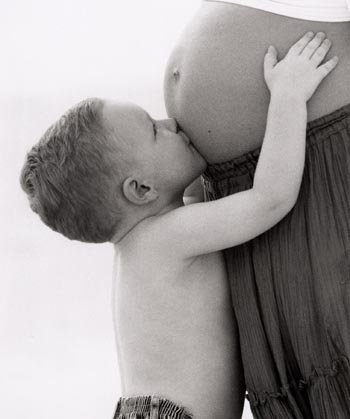 Pregnancy is a time of introspection, excitement, and, often, anxiety for most new mamas. When those new mamas also have other small children at home, that anxiety can become overwhelming as they worry about how they’ll cope with more than one child and how the current little loves of their life will cope with a new sibling. While these are very valid concerns, there are steps you can take to prepare your child for a new sibling and help them to adjust when the new baby arrives that will also help you to cope with life as a mama of more than one little blessing.
Pregnancy is a time of introspection, excitement, and, often, anxiety for most new mamas. When those new mamas also have other small children at home, that anxiety can become overwhelming as they worry about how they’ll cope with more than one child and how the current little loves of their life will cope with a new sibling. While these are very valid concerns, there are steps you can take to prepare your child for a new sibling and help them to adjust when the new baby arrives that will also help you to cope with life as a mama of more than one little blessing.
Once you discover you’re expecting, you’ve got months and months to prepare your child for the arrival of a new sibling, so here are 25 tips for during your pregnancy and after the new baby arrives to make the new baby transition a smoother and sweeter journey for everyone:
- Help your older child make their own ‘sister/brother on the way’ announcements so they feel like they are part of the transition from the beginning.
- Bring them along to sonograms, doctor’s appointments, shopping for baby things, etc.
- Reassure them that parents’ love multiplies instead of divides and that they will always be loved and important. Point out other families with more than one child so they can see that truth for themselves. If they’re old enough to understand, try a simple illustration such as letting them put different colors of water beads, one for each family member including the baby-on-the-war, into a glass of water. Tell them the water is like love, and it grows the beads into a rainbow of beautiful colors just like love grows our hearts bigger and bigger so there’s plenty of love for everyone.
- Present the new baby-on-the-way as ‘theirs,’ a special gift sent just for them so they will have a best friend for life. Talk about their friends who have siblings and how they always have someone to play with and someone to help them when they need it.
- Find children’s books about welcoming a new sibling, taking care of a new baby, when mommy breastfeeds, etc. to read to them before the birth. Here is a great list to get you started.
- Let them help decorate the nursery, put together the stroller, pack up the hospital bag (or prepare for your homebirth), buckle in the car seat, etc.
- Ask the person giving your baby shower to let your child ‘co-host’ and help with the party planning, set-up, serving snacks, and playing games.
- Help them make a special ‘welcome’ gift for the new baby and wrap it in paper they’ve decorated with stamps or finger paint.
- Buy them a special ‘welcome’ gift that you give them when they visit their new sibling for the first time. One idea is to buy them a child-sized baby carrier along with a doll, some diapers, wipes, mini baby blankets, etc. so they can take care of their baby while you take care of yours.
- Help them make their own family scrapbook with places to put the new baby’s pictures and pictures of them with their new little sibling when the new baby comes.
- Tell them stories about when they were born and show them pictures of their homecoming and first weeks of life.
- Let them help you work on updating their baby book.
- Take them to pick out a baby book for the new baby.
- Begin an open-ended conversation about how they’re feeling about having a new baby in the family to allow them to express their natural worries about how their role in the family might change, if they will still be able to play with their own toys, if the baby will cry a lot, etc. Continue this conversation throughout your pregnancy and after the new baby arrives to keep the communication lines open and your connection intact.
- Take them to visit the hospital and stop at the gift shop to buy a baby gift and a little treat for them to build excitement.
- Have lunch at the hospital cafeteria two or three times leading up to your birth to help them get used to the environment.
- Work on building other attached relationships with significant adults in your child’s life (spouse, grandparents, aunts, uncles, etc.) so that your little one is used to having their needs attended to by someone other than mama at times and so they can play and get one-on-one time with another caregiver while mama is busy with the new baby.
- On their first visit with their new sibling, let them sit in bed with you and hold their new little sibling. Have a ‘big sister/brother’ t-shirt for them to wear and take lots of pictures of both of them together and with other family members. Ask whoever you have caring for your older child to stop on the way home to print out a few of the pictures and then help them put the pictures in the scrapbook they created with you at home.
- When the new baby arrives continue to present the baby as ‘theirs’ to love and enjoy and care for. Include them in helping with diaper changes, snuggling on your other side with storybooks for you to read while nursing/feeding the new baby, singing the baby to sleep, etc. Make sure you invite them to participate instead of insisting because they may need some time to adjust to the newness of everything before they’re ready.
- Keep your expectations in line with your child’s developmental stage and make accommodations whenever possible. For instance, expecting a toddler to willingly give up their crib to a new baby is probably unrealistic. Moving your toddler to a new bed early in your pregnancy and then involving them in getting the crib ready for the new baby later on, after they’ve adjusted to their new bed, might be more successful.
- If your older child is a toddler or preschooler, you can expect some regression into babyish behavior as they work to adjust to their new role and find their place in the new family dynamic. Don’t respond with punishment, shaming, or pressure to ‘be a big boy or girl.’ Instead allow them the space and time they need to explore how it feels to be a baby again while at the same time drawing their attention to the benefits of being the older sibling (i.e. “Look how you can walk on your strong legs wherever you want to go! Your baby sister can’t walk yet, can she?” or “Wow, you can pick out your own shoes and even put them on yourself! Your baby brother can’t do that yet, can he?” or “Look at all the yummy foods you get to eat. It’s nice being bigger so you don’t have to just have milk, isn’t it?”)
- Be specific about how your child should treat the new baby. Instead of “Be nice!” try “Can you use a kind voice with your brother?” and instead of “Don’t be so rough!” try “Can you give your sister a gentle hug?”
- Make sure your child’s boundaries are clear and consistent. If you let them hop around the baby’s bouncer to make the new baby laugh one day, you can be sure they’ll try bouncing around the baby’s bouncer again and again and again. If you think that’s dangerous, set a clear boundary, explain the reason for the boundary, and give them an alternative (i.e. “Hopping next to the baby is dangerous. You might fall on the baby and hurt him! That would make you sad, and the baby would be sad, too. If you need to hop, you can hop like a bunny over here next to me.”)
- Keeping a consistent, familiar routine for your older child will help them to feel less out-of-control as they adjust to all of the other changes going on in their life. Make sure you’re flexible and in-tune with your child’s changing needs, though. They will most likely communicate their natural anxiety at this big transition in the family with some acting out behaviors, clinginess, whining, and/or resistance to bedtime and other normal routines. For instance, they may have been fine with one story and a hug at bedtime before the new baby arrived, but after their new sibling comes home they may need extra cuddles, time, and the reassurance of your love and ongoing commitment to their wellbeing before they’re able to go to sleep.
- Talk, talk, talk to your little ones throughout each and every day. Your hands may be busy more often than not, but you can still maintain that all-important connection through communication!
Keep in mind that nothing will completely eliminate the possibility of some jealousy, regression, or acting out when a new baby arrives because it’s a huge transition and it will take time for everyone in the family to adjustment, but these suggestions will go a long way toward setting the stage for the smoothest transition possible.
 Related posts:
Related posts:
Ten Steps to Surviving the First Three Months with a Newborn
Love in the Time of Cosleeping
300+ Nicknames for Your Babykins…Doodlebug…Snugglebunny…
Babywearing Basics Resource Guide
Breastfeeding, Babywearing, and Bouncing Back into Shape after Baby
The Thoughtful Parent’s Guide to Positive Parenting Guides
The Taming of the Tantrum: A Toddler’s Perspective
Practical, Gentle, Effective Discipline
10 Ways to Play with your Children when Play is the Last Thing on your Mind
200 Ways to Bless Your Children with a Happy Childhood
August 26, 2013 | Categories: anxiety, attachment parenting, babywearing, birth, breastfeeding, children's books, communication, cosleeping, family, gentle parenting, motherhood, newborn, positive parenting, pregnancy, preschooler, toddler, Uncategorized | Tags: breastfeeding, new baby, newborns, nursing, parenting, pregnancy, preschoolers, siblings, toddlers | 5 Comments »  Award-winnning author, L.R.Knost, is the founder and director of the children's rights advocacy and family consulting group, Little Hearts/Gentle Parenting Resources, and Editor-in-Chief of Holistic Parenting Magazine. Books by L.R.Knost include Whispers Through Time: Communication Through the Ages and Stages of Childhood ; Two Thousand Kisses a Day: Gentle Parenting Through the Ages and Stages ; The Gentle Parent: Positive, Practical, Effective Discipline ; and Jesus, the Gentle Parent: Gentle Christian Parenting the first four books in the Little Hearts Handbook gentle parenting series, and children’s picture books Petey’s Listening Ears and the soon-to-be-released Grumpykins series.
Award-winnning author, L.R.Knost, is the founder and director of the children's rights advocacy and family consulting group, Little Hearts/Gentle Parenting Resources, and Editor-in-Chief of Holistic Parenting Magazine. Books by L.R.Knost include Whispers Through Time: Communication Through the Ages and Stages of Childhood ; Two Thousand Kisses a Day: Gentle Parenting Through the Ages and Stages ; The Gentle Parent: Positive, Practical, Effective Discipline ; and Jesus, the Gentle Parent: Gentle Christian Parenting the first four books in the Little Hearts Handbook gentle parenting series, and children’s picture books Petey’s Listening Ears and the soon-to-be-released Grumpykins series.
The Thoughtful Parent’s Guide to Positive Parenting Guides
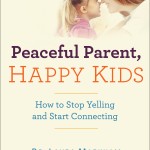
Whether you are an expectant parent, a new parent, or a seasoned parent, looking for a parenting book that resonates with your beliefs can be almost as overwhelming as parenting itself. The choices are practically endless when it comes to mainstream (read: punitive) parenting guides. In fact, if you go to the library or browse the shelves at Barnes & Noble or check out Amazon’s best-sellers in the parenting genre, you will find a predominance of popular, punishment-based, obedience-focused parenting guides. But when it comes to parenting guides with positive, practical, effective alternatives to punitive parenting, the choices are a bit more limited and can be harder to find. Here are more than a dozen positive parenting books for you that have beat the odds and worked their way through the maze of mainstream punitive parenting guides to become best-sellers:
 Two Thousand Kisses a Day: Gentle Parenting Through the Ages and Stages by L.R.Knost
Two Thousand Kisses a Day: Gentle Parenting Through the Ages and Stages by L.R.Knost
Calm, Reassuring, Likable ~ Written in L.R.Knost’s signature easy-to-read and conversational style, ‘Two Thousand Kisses a Day’ offers an overview of gentle parenting from birth through young adulthood along with concrete suggestions and insights into how to implement gentle parenting in each stage of childhood. Her seasoned and practical approach based on extensive child development research and years of parent mentoring as well as over twenty-five years of parenting her six children is as likable as it is reassuring. Parents with children of any age will find this information-packed book with its bite-sized chapters and practical approach to parenting a helpful and encouraging addition to their home library, as well as a welcome gift for new or struggling parents. ~The Parenting Review
 Whispers Through Time: Communication Through the Ages and Stages of Childhood by L.R.Knost
Whispers Through Time: Communication Through the Ages and Stages of Childhood by L.R.Knost
Sweet, Funny, Insightful ~ Award-winning ‘Whispers Through Time’ by L.R. Knost is destined to be a dog-eared favorite, passed down from generation to generation. L.R. Knost shows parents how to find their own answers for their own children and their own families in this guidebook as she challenges conventional thinking with a wisdom born of experience and a healthy dose of research to back it up. Written with the same unique blend of sweetness and humor, grit and honesty, reassurance and insight that made L.R. Knost’s first book, ‘Two Thousand Kisses a Day: Gentle Parenting Through the Ages and Stages,’ a best-seller, ‘Whispers Through Time’ has become a runaway hit in its own right. ~The Parenting Review
 The Gentle Parent: Positive, Practical, Effective Discipline by L.R.Knost
The Gentle Parent: Positive, Practical, Effective Discipline by L.R.Knost
Relaxed, Reassuring, Practical ~ Written by L.R.Knost, best-selling, award-winning author of ‘Two Thousand Kisses a Day’ and ‘Whispers Through Time,’ ‘The Gentle Parent: Positive, Practical, Effective Discipline’ shares the simple secrets of a peaceful, happy home in the Three C’s of gentle discipline–Connection, Communication, and Cooperation. In her signature relaxed and poetic style, L.R.Knost gently guides parents through the steps of applying the Three C’s in real-life scenarios from tantrums to defiance to parenting a strong-willed child to healing a broken parent/child relationship. Practical and
proven, this newest installment in the Little Hearts Handbook parenting series will be tucked into diaper bags, kept handy on nightstands, and shared with good friends for its research-backed, experience-based, and humor-rich insights, ideas, and inspiration. ~The Parenting Review
Jesus, the Gentle Parent: Gentle Christian Parenting by L.R.Knost
Intelligent, Well-Researched, Compassionate ~ L.R.Knost has done it again. With her compassionate tone, relational style, and intelligent, well-researched writing, Jesus, the Gentle Parent is like a refreshing, peaceful walk through the scriptures with a friendly and knowledgeable tour guide. This book differs from Two Thousand Kisses a Day, Whispers Through Time, and The Gentle Parent: Positive, Practical, Effective Discipline in that it takes a Christian approach to parenting as L.R. takes on big names in the Christian child-training sect such as Dr. James Dobson, Tedd Tripp, Gary Ezzo, and Michael Pearl, breaking down their doctrine and reexamining such issues as spanking, instant obedience, submission, free will, and more in light of the original Hebrew and Greek texts of the scriptures. As always, L.R. offers gentle parenting alternatives along with real-life examples of their applications, but in Jesus, the Gentle Parent she goes even further and shares parenting insights based on the life of Jesus that will turn the mainstream Christian world on its head. This is truly a grace-based parenting book which shows parents how to be “their children’s first taste of God” by following in the gentle, wise, grace-filled footsteps of Jesus. ~ The Parenting Review
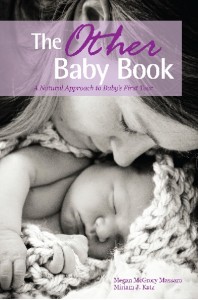 The Other Baby Book: A Natural Approach to Baby’s First Year by Megan McGrory Massaro and Miriam J. Katz
The Other Baby Book: A Natural Approach to Baby’s First Year by Megan McGrory Massaro and Miriam J. Katz
Massaro and Katz are helping mothers reclaim a simpler, more connected first year with their babies. Readers will find eight fun-to-read chapters filled with baby-friendly practices, along with stories from moms in-the-know. In a soothing yet sassy voice, the authors present compelling research on topics like birth, holding your baby, breastfeeding, infant sleep, pottying babies (yes, really!), sign language, baby-led solids, and self-care for moms. The book also features contributions from leading practitioners in baby care: Dr. James McKenna, Dr. Janet Zand, Naomi Aldort, Gill Rapley, Nancy Mohrbacher, and more.
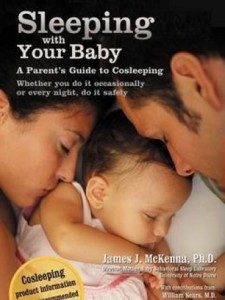 Sleeping with Your Baby: A Parent’s Guide to Cosleeping by James J. McKenna
Sleeping with Your Baby: A Parent’s Guide to Cosleeping by James J. McKenna
Intelligent, respectful, and informative, ‘Sleeping With Your Baby: A Parent’s Guide’ is your guide to understanding how to make night-times with your baby safe, fun and relaxing! Written by the world’s foremost authority on co-sleeping, James J. McKenna, Ph.D. Professor of Biological Anthropology, Director, Mother-Baby Sleep Laboratory, University of Notre.
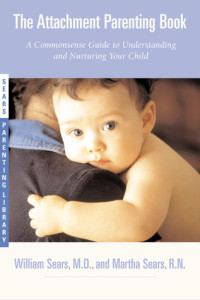 The Attachment Parenting Book : A Commonsense Guide to Understanding and Nurturing Your Baby by William Sears and Martha Sears
The Attachment Parenting Book : A Commonsense Guide to Understanding and Nurturing Your Baby by William Sears and Martha Sears
Might you and your baby both sleep better if you shared a bed? How old is too old for breastfeeding? What is a father’s role in nurturing a newborn? How does early attachment foster a child’s eventual independence? Dr. Bill and Martha Sears — the doctor-and-nurse, husband-and-wife team who coined the term “attachment parenting” — answer these and many more questions in this practical, inspiring guide. Attachment parenting is a style of parenting that encourages a strong early attachment, and advocates parental responsiveness to babies’ dependency needs. “The Attachment Parenting Book” clearly explains the six “Baby B’s” that form the basis of this increasingly popular parenting style: Bonding, Breastfeeding, Babywearing, Bedding close to baby, Belief in the language value of baby’s cry, Beware of baby trainers. Here’s all the information you need to achieve your most important goals as a new parent: to know your child, to help your child feel right, and to enjoy parenting.
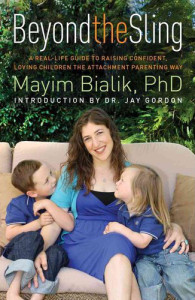 Beyond the Sling by Mayim Bialik
Beyond the Sling by Mayim Bialik
Attachment parenting rests on one revolutionary principle: you already know the majority of what you need to know to be an incredible parent. Popularized by physicians like Dr. William Sears and Dr. Jay Gordon, attachment parenting directly contradicts the two hundred years of Western culture that has convinced us that we need a lot of help: help giving birth; help “teaching” our baby to sleep; help just being a parent. ‘Beyond the Sling’ is not that kind of parenting book.
Mayim Bialik shows us that by understanding the basic theories of attachment and infant development—and incorporating age-old childrearing methods like breastfeeding, baby wearing, gentle discipline, and co-sleeping—we can truly be the parents that nature intends us to be. With a PhD in neuroscience and a specialization in the hormones of attachment, Bialik is uniquely qualified to explain the science behind the method and how it’s your evolutionary right to tap into your intuition and enjoy every stage of parenthood. A mother of two young boys, she also offers a firsthand account of how she came to follow the tenets of attachment parenting, plus a down-to-earth guide to making this lifestyle work for every kind of family.
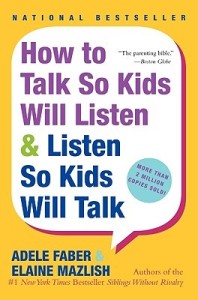 How To Talk So Kids Will Listen & Listen So Kids Will Talk by Adele Faber and Elaine Mazlish
How To Talk So Kids Will Listen & Listen So Kids Will Talk by Adele Faber and Elaine Mazlish
This bestselling classic includes fresh insights and suggestions as well as the author’s time-tested methods to solve common problems and build foundations for lasting relationships, including innovative ways to:
-Cope with your child’s negative feelings, such as frustration, anger, and disappointment
-Express your strong feelings without being hurtful
-Engage your child’s willing cooperation
-Set firm limits and maintain goodwill
-Use alternatives to punishment that promote self-discipline
-Understand the difference between helpful and unhelpful praise
-Resolve family conflicts peacefully
Enthusiastically praised by parents and professionals around the world, the down-to-earth, respectful approach of Faber and Mazlish makes relationships with children of all ages less stressful and more rewarding.
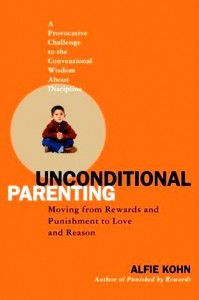 Unconditional Parenting: Moving from Rewards and Punishments to Love and Reason by Alfie Kohn
Unconditional Parenting: Moving from Rewards and Punishments to Love and Reason by Alfie Kohn
In this truly groundbreaking book, nationally respected educator Alfie Kohn begins instead by asking, “What do kids need — and how can we meet those needs?” What follows from that question are ideas for working with children rather than doing things to them.
One basic need all children have, Kohn argues, is to be loved unconditionally, to know that they will be accepted even if they screw up or fall short. Yet conventional approaches to parenting such as punishments (including “time-outs”), rewards (including positive reinforcement), and other forms of control teach children that they are loved only when they please us or impress us. Kohn cites a body of powerful, and largely unknown, research detailing the damage caused by leading children to believe they must earn our approval. That’s precisely the message children derive from common discipline techniques, even though it’s not the message most parents intend to send.
More than just another book about discipline, though, Unconditional Parenting addresses the ways parents think about, feel about, and act with their children. It invites them to question their most basic assumptions about raising kids while offering a wealth of practical strategies for shifting from “doing to” to “working with” parenting — including how to replace praise with the unconditional support that children need to grow into healthy, caring, responsible people. This is an eye-opening, paradigm-shattering book that will reconnect readers to their own best instincts and inspire them to become better parents.
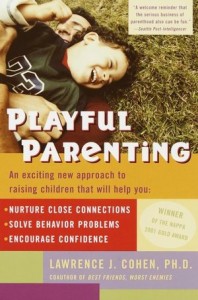 Playful Parenting by Lawrence J. Cohen
Playful Parenting by Lawrence J. Cohen
Have you ever stepped back to watch what really goes on when your children play? As psychologist Lawrence J. Cohen points out, play is children’s way of exploring the world, communicating deep feelings, getting close to those they care about, working through stressful situations, and simply blowing off steam. That’s why “playful parenting” is so important and so successful in building strong, close bonds between parents and children. Through play we join our kids in their world–and help them to:
-Express and understand complex emotions
-Break through shyness, anger, and fear
-Empower themselves and respect diversity
-Play their way through sibling rivalry
-Cooperate without power struggles
From eliciting a giggle during baby’s first game of peekaboo to cracking jokes with a teenager while hanging out at the mall, Playful Parenting is a complete guide to using play to raise confident children. Written with love and humor, brimming with good advice and revealing anecdotes, and grounded in the latest research, this book will make you laugh even as it makes you wise in the ways of being an effective, enthusiastic parent.
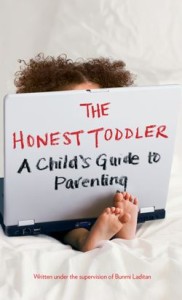 The Honest Toddler: A Child’s Guide to Parenting by Bunmi Laditan
The Honest Toddler: A Child’s Guide to Parenting by Bunmi Laditan
The Honest Toddler provides an indispensable manual to parenting that places the toddler’s happiness front and center. Outrageously confident and sweetly indignant, the Honest Toddler tackles everything from preferred toddler foods (unbroken crackers and undiluted juice), sleep- and potty-training methods (none), playdate etiquette (mi casa es not su casa), and the proper response to random aggression at the playground (Embrace it. Park justice is messy but swift).
The result is a parenting book like no other, one that will leave moms and dads laughing, and maybe crying, as they recognize their own child in the ongoing shenanigans of one bravely honest toddler. Lighthearted and tongue-in-cheek, this toddler’s eye-view is a real eye-opener for parents, giving valuable insight into the inner workings of the toddler mind.
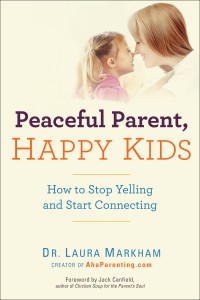 Peaceful Parent, Happy Kids: How to Stop Yelling and Start Connecting by Laura Markham
Peaceful Parent, Happy Kids: How to Stop Yelling and Start Connecting by Laura Markham
A groundbreaking guide to raising responsible, capable, happy kids…Based on the latest research on brain development and extensive clinical experience with parents, Dr. Laura Markham’s approach is as simple as it is effective. Her message: Fostering emotional connection with your child creates real and lasting change. When you have that vital connection, you don’t need to threaten, nag, plead, bribe—or even punish.
This remarkable guide will help parents better understand their own emotions—and get them in check—so they can parent with healthy limits, empathy, and clear communication to raise a self-disciplined child. Step-by-step examples give solutions and kid-tested phrasing for parents of toddlers right through the elementary years.
If you’re tired of power struggles, tantrums, and searching for the right “consequence,” look no further. You’re about to discover the practical tools you need to transform your parenting in a positive, proven way.
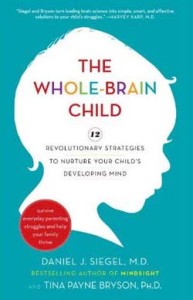 The Whole-Brain Child: 12 Revolutionary Strategies to Nurture Your Child’s Developing Mind by Daniel J. Siegel and Tina Payne Bryson
The Whole-Brain Child: 12 Revolutionary Strategies to Nurture Your Child’s Developing Mind by Daniel J. Siegel and Tina Payne Bryson
In this pioneering, practical book, Daniel J. Siegel, neuropsychiatrist and author of the bestselling Mindsight, and parenting expert Tina Payne Bryson offer a revolutionary approach to child rearing with twelve key strategies that foster healthy brain development, leading to calmer, happier children. The authors explain—and make accessible—the new science of how a child’s brain is wired and how it matures. The “upstairs brain,” which makes decisions and balances emotions, is under construction until the mid-twenties. And especially in young children, the right brain and its emotions tend to rule over the logic of the left brain. No wonder kids throw tantrums, fight, or sulk in silence. By applying these discoveries to everyday parenting, you can turn any outburst, argument, or fear into a chance to integrate your child’s brain and foster vital growth.
Complete with age-appropriate strategies for dealing with day-to-day struggles and illustrations that will help you explain these concepts to your child, The Whole-Brain Child shows you how to cultivate healthy emotional and intellectual development so that your children can lead balanced, meaningful, and connected lives.
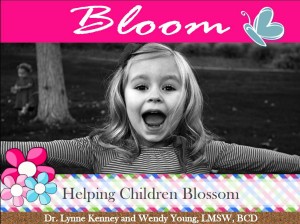 Bloom: Helping Children Blossom by Lynne Kenney and Wendy Young
Bloom: Helping Children Blossom by Lynne Kenney and Wendy Young
A Lovely Listopia of Practical Approaches to Behavioral Issues ~ From Pediatric Psychologist Dr. Lynne Kenney and Behavioral Specialist Wendy Young, ‘Bloom: Helping Children Blossom’ is an excellent resource for parents, teachers, and caregivers. ‘Bloom’ provides insights into the emotional development of children, offers specific ‘scripts’ for how to communicate effectively when dealing with behavioral issues, challenges parents to examine their own emotional responses, and provides detailed professional resources for parents who feel their children may need therapeutic assistance and support. Down to earth and practical, ‘Bloom’ is refreshingly written in an approachable, conversational style that makes its resources as accessible as they are invaluable.
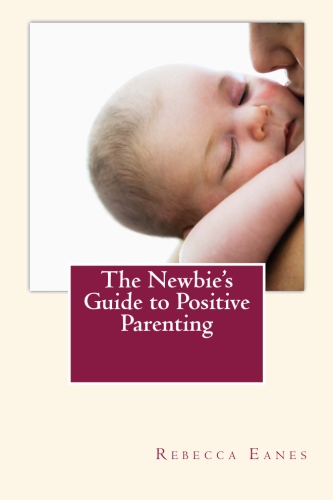 The Newbie’s Guide to Positive Parenting by Rebecca Eanes
The Newbie’s Guide to Positive Parenting by Rebecca Eanes
Do you want to create a more positive and peaceful home? Are you tired of parenting formulas and techniques that just don’t work and leave you feeling at odds with your child? Learn the 5 principles of positive parenting and discover how to bring connection and peace back into your relationship with your child. You’ll learn a new way in which to relate to your child, one which fosters connection rather than disconnection, respect rather than rebellion, and cultivates a healthy relationship which you can enjoy throughout the years.
Written by best-selling author, blogger, and the founder of Positive-parents.org whose Facebook community is more than 40,000 strong, Rebecca Eanes is not a typical parenting ‘expert’ but writes parent to parent with the inspiring message of creating peaceful homes through positive parenting.
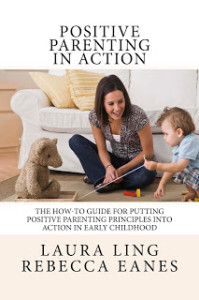 Positive Parenting in Action: The How-To Guide for Putting Positive Parenting Principles into Action in Early Childhood by Laura Ling and Rebecca Eanes
Positive Parenting in Action: The How-To Guide for Putting Positive Parenting Principles into Action in Early Childhood by Laura Ling and Rebecca Eanes
Parenthood is a beautiful journey. We don’t have to become adversaries with our children; doing so is very unnatural to our humanity. We are all wired for connection, for closeness, and for love. Positive parenting frees us to move from the traditional parenting roles which create friction and rebellion and allows us instead to move into a more natural role which creates cooperation and peace. The inevitable conflicts that arise in a relationship no longer define the relationship, but serve as stepping-stones to greater understanding and connection.
There is an abundance of resources available which tell parents why traditional parenting practices are not optimal, but few help parents learn what to do in place of traditional practices. In this book, we’ll discuss the principles of positive parenting, and then we will go through more than 40 scenarios to show you what it looks like when these principles are put into action.
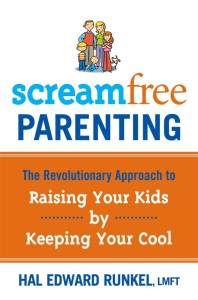 Screamfree Parenting: The Revolutionary Approach to Raising Your Kids by Keeping Your Cool by Hal Edward Runkel
Screamfree Parenting: The Revolutionary Approach to Raising Your Kids by Keeping Your Cool by Hal Edward Runkel
ScreamFree Parenting is not just about lowering your voice. It’s about learning to calm your emotional reactions and learning to focus on your own behavior more than your kids’ behavior . . . for their benefit. Our biggest enemy as parents is not the TV, the Internet, or even drugs. Our biggest enemy is our own emotional reactivity. When we say we “lost it” with our kids, the “it” in that sentence is our own adulthood. And then we wonder why our kids have so little respect for us, why our kids seem to have all the power in the family. It’s time to do it differently. And you can. You can start to create and enjoy the types of calm, mutually respectful, and loving relationships with your kids that you’ve always craved. You can begin to revolutionize your family, starting tonight.
Parenting is not about kids, it’s about parents. If you’re not in control, then you cannot be in charge. What every kid really needs are parents who are able to keep their cool no matter what. Easier said than done? Not anymore, thanks to ‘ScreamFree Parenting’ the principle-based approach that’s inspiring parents everywhere to truly revolutionize their family dynamics. Moving beyond the child-centered, technique-based approaches that ultimately fail, the ScreamFree way compels you to:
Focus on yourself ~ Calm yourself down ~ Grow yourself up
By staying calm and connected with your kids, you begin to operate less out of your deepest fears and more out of your highest principles, revolutionizing your relationships in the process.
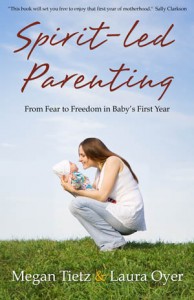 Spirit-Led Parenting: From Fear to Freedom in Baby’s First Year by Megan Tietz and Laura Oyer
Spirit-Led Parenting: From Fear to Freedom in Baby’s First Year by Megan Tietz and Laura Oyer
Over the years, a mainstream approach to Christian parenting has emerged, and it’s one that promotes sleep training and feeding schedules for infants, warns that spoiled children and marital discord are certain by-products of homes where newborns are over-indulged, and promotes these methods as the Biblical way to care for a new baby. Unfortunately, the message of mainstream parenting advice preys on the universal fear of new parents everywhere: the fear that if they stray from the program, their babies and their marriages will suffer.
In Spirit-Led Parenting: From Fear to Freedom in Baby’s First Year, two mothers share their stories. They tell of a journey that began in fear-soaked, tear-stained days marked by an overwhelming fear of failure that eventually found redemption in discovering the freedom to ignore the wisdom of man and follow the direction of the Spirit.
Sharing from their unique experiences as well as their shared philosophy, Megan and Laura play the role of big sisters, wrapping their arms around the shoulder of the new mother trying to navigate the confusing world of life with a baby and answering those important questions: “What if the ‘right’ way doesn’t feel ‘right’?” and “Could there be more than one way to honor God as I care for my baby?”
There is another way. That’s what they wish they had been told as new mothers. And it’s the message they are passionate about sharing with new parents everywhere.
 Attached at the Heart: Eight Proven Parenting Principles for Raising Connected and Compassionate Children by Barbara Nicholson and Lysa Parker
Attached at the Heart: Eight Proven Parenting Principles for Raising Connected and Compassionate Children by Barbara Nicholson and Lysa Parker
Practical parenting advice for the modern age…In its most basic form, “attachment parenting” is instinctive. A crying baby is comforted and kept close to parents for protection. If hungry, he or she is breastfed. And while it is understood that there is no such thing as perfect parenting, research suggests that there is a strong correlation between a heightened sense of respect, empathy, and affection in those children raised the “attachment parenting” way.
Using the Eight Principles of Parenting, readers will learn:
- How to prepare for baby before birth
- Why breastfeeding is a must for busy moms
- When to start feeding solid food
- How to respond to temper tantrums
- Sleeping safety guidelines and the benefits of cosleeping
- Tips for short separation
- How to practice positive discipline and its rewards
- Tips for finding and maintaining balance
- The benefits of using a baby sling and implementing infant massage
- Tips on dealing with criticism from those opposed or unfamiliar with AP style
- The dangers surrounding traditional discipline styles of parenting
Contrary to popular belief, “attachment parenting” has been practiced in one form or another since recorded history. Over the years, it had been slowly replaced by a more detached parenting style—a style that is now believed by experts to be a lead contributing factor to suicide, depression, and violence. The concept of “attachment parenting”—a term originally coined by parenting experts William and Martha Sears—has increasingly been validated by research in many fields of study, such as child development, psychology, and neuroscience. Also known as “conscious parenting,” “natural parenting,” “compassionate parenting,” or “empathic parenting,” its goal is to stimulate optimal child development. While many attachment-parenting recommendations likely counter popular societal
beliefs, authors Barbara Nicholson and Lysa Parker are quick to point out that the benefits outweigh the backlash of criticism that advocates of detached parenting may impose.
 Thy Rod and Thy Staff, They Comfort Me: Christians and the Spanking Controversy by Samuel S. Martin
Thy Rod and Thy Staff, They Comfort Me: Christians and the Spanking Controversy by Samuel S. Martin
Thorough, well-referenced, grounded in solid information, unquestionably scholarly, yet pleasurably readable, obviously written by a man with the deepest reverence for God’s Word and the responsibility of handling it accurately. This isn’t the work of a secular author who is trying to twist religious arguments to back himself up. It is the work of a brother in Christ who fully accepts the authority of Scripture. Honestly, I can’t imagine any serious student of the Bible reading this and still believing that spanking is Biblically endorsed. ~ Dulce de Leche
July 15, 2013 | Categories: attachment parenting, books, Christian parenting, gentle discipline, gentle parenting, grace-based discipline, motherhood, natural parenting, parenting guide, positive discipline, positive parenting | Tags: books, children, discipline, fatherhood, motherhood, parenting, parenting guides, positive parenting, preschoolers, teens, toddlers | 10 Comments »  Award-winnning author, L.R.Knost, is the founder and director of the children's rights advocacy and family consulting group, Little Hearts/Gentle Parenting Resources, and Editor-in-Chief of Holistic Parenting Magazine. Books by L.R.Knost include Whispers Through Time: Communication Through the Ages and Stages of Childhood ; Two Thousand Kisses a Day: Gentle Parenting Through the Ages and Stages ; The Gentle Parent: Positive, Practical, Effective Discipline ; and Jesus, the Gentle Parent: Gentle Christian Parenting the first four books in the Little Hearts Handbook gentle parenting series, and children’s picture books Petey’s Listening Ears and the soon-to-be-released Grumpykins series.
Award-winnning author, L.R.Knost, is the founder and director of the children's rights advocacy and family consulting group, Little Hearts/Gentle Parenting Resources, and Editor-in-Chief of Holistic Parenting Magazine. Books by L.R.Knost include Whispers Through Time: Communication Through the Ages and Stages of Childhood ; Two Thousand Kisses a Day: Gentle Parenting Through the Ages and Stages ; The Gentle Parent: Positive, Practical, Effective Discipline ; and Jesus, the Gentle Parent: Gentle Christian Parenting the first four books in the Little Hearts Handbook gentle parenting series, and children’s picture books Petey’s Listening Ears and the soon-to-be-released Grumpykins series.
Celebrating One MILLION Pageviews!!!
 I am humbled and amazed (but clearly not speechless! 😉 ) to know that the articles I write here on Little Hearts have been read one MILLION times. A MILLION! That’s 1,000,000! Wow! And that’s not all. My site stats have logged readers from 123 countries spanning the globe reading my site in the last two weeks alone! They’re not just accidentally landing here and clicking away, either. They typically stay for 10, 20, sometimes 30 or more minutes at a time and read post after post after post. People visit from Hong Kong, Singapore, China, Germany, Bosnia, Australia, Vietnam, Romania, Malaysia, Russia, Brazil, Mexico, Haiti, Pakistan, Egypt, Israel, Iceland, Slovenia, Qatar, and the list goes on and on and on.
I am humbled and amazed (but clearly not speechless! 😉 ) to know that the articles I write here on Little Hearts have been read one MILLION times. A MILLION! That’s 1,000,000! Wow! And that’s not all. My site stats have logged readers from 123 countries spanning the globe reading my site in the last two weeks alone! They’re not just accidentally landing here and clicking away, either. They typically stay for 10, 20, sometimes 30 or more minutes at a time and read post after post after post. People visit from Hong Kong, Singapore, China, Germany, Bosnia, Australia, Vietnam, Romania, Malaysia, Russia, Brazil, Mexico, Haiti, Pakistan, Egypt, Israel, Iceland, Slovenia, Qatar, and the list goes on and on and on.
To know that the nights spent typing away on my little laptop while my children sleep nearby (or typing one-handed while nursing!) are not wasted, to feel that I’ve touched hearts to make a real difference in the lives of children, to see that what I write resonates literally around the world is deeply humbling and incredibly validating for me. It gives me hope that true, lasting change is possible for a globe that is suffering from violence and power-mongering.
 If we as parents stop using violence and intimidation to control our children and instead work together with them through connection and communication, the adults we send into the world when they are grown will be world changers.
If we as parents stop using violence and intimidation to control our children and instead work together with them through connection and communication, the adults we send into the world when they are grown will be world changers.
It’s not our job to toughen up our children to face a cruel and heartless world. It’s our job to raise children who will make the world a little less cruel and heartless. If I can help make that happen in even a small way, then the many sleepless nights and the one-handed typing while nursing and the neglected laundry will be well, well worth it!
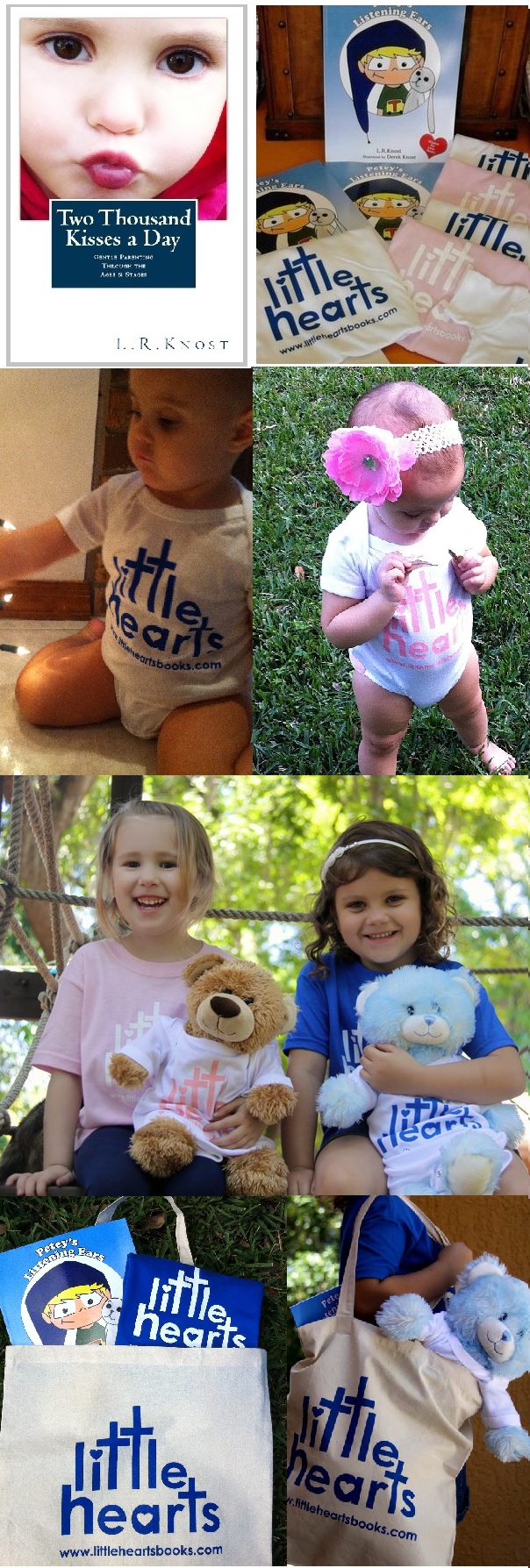 As a ‘thank you’ to all who have read and shared my articles and bought my books and shared their thoughts and encouragement, I’m hosting a Facebook Party! today, March 20th 2013, from 2 pm to midnight EST. Join me for giveaways every hour and fun Q & A’s and word games so we can get to know each other better!
As a ‘thank you’ to all who have read and shared my articles and bought my books and shared their thoughts and encouragement, I’m hosting a Facebook Party! today, March 20th 2013, from 2 pm to midnight EST. Join me for giveaways every hour and fun Q & A’s and word games so we can get to know each other better!
Check out some of the awesome Little Hearts products that I’ll be giving away–>
At midnight there will be a Grand Prize package, too, so don’t miss it!
See you there!
You might also be interested in:
Two Thousand Kisses a Day: Gentle Parenting Through the Ages and Stages ~ Book Launch Tour
Practical, Gentle, Effective Discipline
200 Ways to Bless Your Children with a Happy Childhood
12 Tips for Gently Parenting Your Adult Children (Hint: It starts when they’re newborns!)
Tots to Teens~Communication Through the Ages and Stages
The Bookshelf: To Read or Not To Read
March 20, 2013 | Categories: attachment parenting, communication, gentle discipline, gentle parenting, parenting guide, Uncategorized | Tags: attachment parenting book, gentle parenting book, giveaway, parenting | 1 Comment »  Award-winnning author, L.R.Knost, is the founder and director of the children's rights advocacy and family consulting group, Little Hearts/Gentle Parenting Resources, and Editor-in-Chief of Holistic Parenting Magazine. Books by L.R.Knost include Whispers Through Time: Communication Through the Ages and Stages of Childhood ; Two Thousand Kisses a Day: Gentle Parenting Through the Ages and Stages ; The Gentle Parent: Positive, Practical, Effective Discipline ; and Jesus, the Gentle Parent: Gentle Christian Parenting the first four books in the Little Hearts Handbook gentle parenting series, and children’s picture books Petey’s Listening Ears and the soon-to-be-released Grumpykins series.
Award-winnning author, L.R.Knost, is the founder and director of the children's rights advocacy and family consulting group, Little Hearts/Gentle Parenting Resources, and Editor-in-Chief of Holistic Parenting Magazine. Books by L.R.Knost include Whispers Through Time: Communication Through the Ages and Stages of Childhood ; Two Thousand Kisses a Day: Gentle Parenting Through the Ages and Stages ; The Gentle Parent: Positive, Practical, Effective Discipline ; and Jesus, the Gentle Parent: Gentle Christian Parenting the first four books in the Little Hearts Handbook gentle parenting series, and children’s picture books Petey’s Listening Ears and the soon-to-be-released Grumpykins series.
Two Thousand Kisses a Day~Book Reviews & Author Interviews
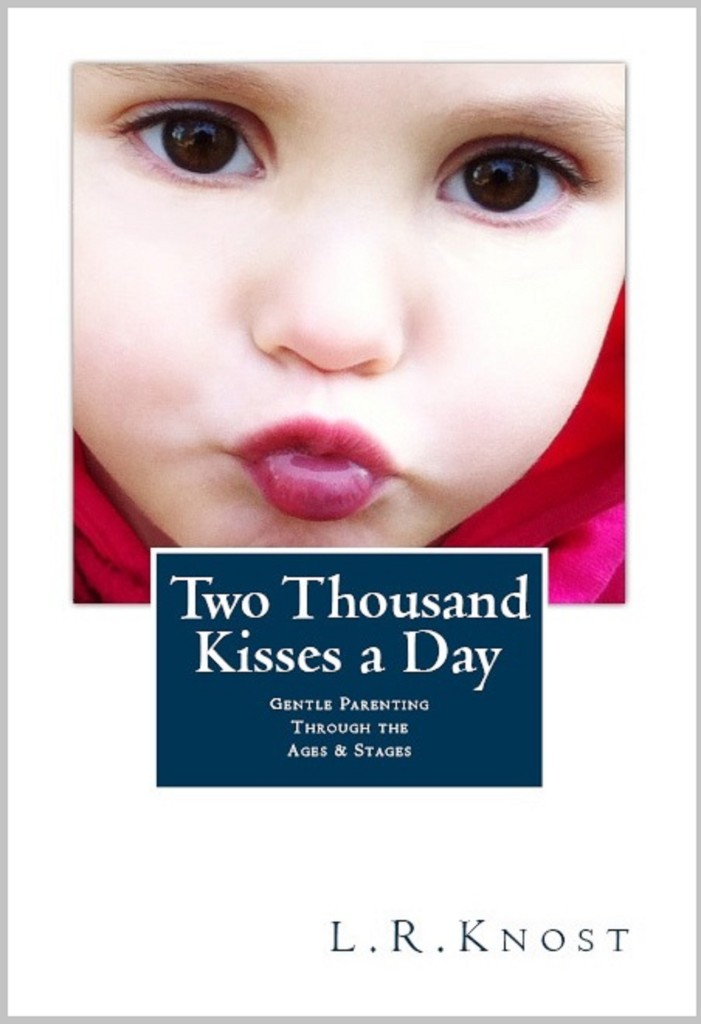 Book Reviews, Author Interviews, and Chapter Breakdown:
Book Reviews, Author Interviews, and Chapter Breakdown:
The Natural Parent Magazine ‘The Birth Story of a Book’
Two Thousand Kisses a Day: Gentle Parenting Through the Ages and Stages is an introduction to the ideas behind gentle parenting and provides practical examples of its application in each of the developmental stages of childhood such as the transition from diapers to potty, problems with sharing, coping with picky eaters, guiding children gently through behavioral issues, and more…
L. R. Knost’s ‘Two Thousand Kisses a Day: Gentle Parenting Through The Ages & Stages’ is a gentle nudge from a fellow momma who’s been there, done that; and who happens to also be a parenting author and child development researcher. A mother six times over, it quickly becomes clear that her point of view is based not only on biology and sound evidence – these practices have actually enriched her own family life and her latest book is a letter to other parents detailing how we too can strengthen our family’s connection as well, when applied with practicality.
Our Muddy Boots ~ Changing the World, One Little Heart at a Time
“Of my six children, two are what most would call high-needs or strong-willed. Gentle parenting is particularly effective with challenging children. Strong will equals strong need and focusing on those needs defuses rather than escalates behavioral issues. My objective is always first and foremost to meet their needs, which typically involve reconnection and being heard, then to work with my child on equipping them with coping skills to handle their overwhelming emotions, and finally to address the behaviors themselves when my child is calm and open and ready to cooperate.”
Gentle Christian Mothers ~ Book Review and Author Interview
L. R. Knost’s ‘Two Thousand Kisses a Day: Gentle Parenting Through The Ages & Stages’ gently presents a strong case for gentle parenting and shares helpful, practical wisdom, presenting gentle parenting in a way that makes it doable. She speaks with a calm, reassuring voice, encouraging parents to live what they want their children to learn, to build strong and healthy connections with their children, and to enjoy their children, plus, importantly, she shares ways to help make these things happen. One highlight of the book is her chapter on The Problem with Punishment (which can be read online). Two Thousand Kisses is a wonderful introduction to gentle parenting.
I loved this book. More than just the content, which was excellent, I loved what this book did in me as I was reading it. I have read books by punitive authors such as Ezzo, the Pearls, Tripp and others who left me feeling at war with my children. I would find myself being less patient, quick to anger and assigning evil intent to their motives. In contrast, when I read Two Thousand Kisses a Day, I felt so light and loving. Little love waves kept splashing on my family the whole day, and we all experienced more peace, joy, patience, kindness and self control.
L. R. Knost’s ‘Two Thousand Kisses a Day: Gentle Parenting Through The Ages & Stages’ reads like gentle suggestions from a good friend. The author is an independent child development researcher and mom of six (6!) children ranging in age from toddlerhood to young adult. Although Two Thousand Kisses a Day covers a broad ranges of ages and stages, the chapters are short and easy to read. The author provides understandable scenarios to illustrate her points and often gives easy to follow suggestions for every-day difficulties, such as doing chores in the house or feeding a picky eater, from a gentle parenting point of view.
Smooth Parenting ~ Book Review
The Path Less Taken ~ Book Review
Two Thousand Kisses a Day is truly a breath of fresh air amongst all the harsh traditional parenting books advocating for punishments, rewards, and control. It takes you back to what parenting should be: a respectful partnership. A dance between parent and child, where everyone’s voices are heard, and everyone’s needs are met.
And while it speaks beautifully to the wonderful parts of parenting, it doesn’t gloss over the hard parts either. The author also speaks with great candor about a few difficult moments she had with her children, as well as how she handled them as a gentle parent, and what she learned from the process. It is honest, and it is enlightening.
Littles Rule the Roost ~ Book Review
Two Thousand Kisses is based on guiding your child from infancy to adulthood using connection and encouragement through the ups and downs of life rather than punishment and control.
L.R.Knost is certainly gifted in her emotional intelligence and in her ability to view life from a child’s perspective. It is this gift that makes her an excellent adult voice for children and babies, and in a tone that comes across strongly and compassionately throughout the book. (As one of many examples of her ability to view life through the eyes of a child, I found her discussion on how children learn about sharing to be quite helpful.)
Two Thousand Kisses a Day: Gentle Parenting Through the Ages and Stages by parenting and children’s book author, L.R.Knost, has been described as “a book you’ll devour in one sitting and then keep close at hand for easy reference as your children grow” and “like sitting down for a cuppa with a good friend.” Other reviewers have said it has “an easy, conversational, parent-to-parent tone” which “refreshingly does exactly what it promises: it shows you how to parent gently, with kindness, compassion, and connection, always keeping that
strong and healthy relationship with your child at the forefront of your journey.”
The Guggie Daily ~ Book Review and Author Interview
A mother to six children, L.R.Knost has been parenting for 25 years. She’s not just excited about gentle parenting, she’s lived gentle parenting from pregnancy all the way through every stage with their own joys and struggles. And she shares with you concrete ideas for every age and stage in an understanding, reasonable way.
Table of Contents:
Chapter 1 Two Thousand Kisses a Day to Two Thousand Connection Points a Day gives an overview of gentle parenting.
Chapter 2 Surviving the First Three Months with a Newborn shares ten steps to ease the transition when a new baby joins the family.
Chapter 3 Co-sleeping Like a Baby covers co-sleeping options from room-sharing to bed-sharing.
Chapter 4 Breastfeeding: The Healthiest Start shares some startling information about the health and economic costs of low breastfeeding rates and offers insight into some of the most common reasons new mothers struggle to breastfeed. (Note: The author also struggled with breastfeeding her first two babies and makes no judgments about formula feeding.)
Chapter 5 Babywearing, aka Making Your Life Easier covers the many conveniences of babywearing along with offering helpful resources to find what works for you.
Chapter 6 To a Toddler Sharing is a Four Letter Word: MINE gives insight into a toddler’s perception of sharing and offers tips about how to encourage sharing through role-playing and modeling.
Chapter 7 Three Simple Steps from Diapers to Potty shares the author’s experiences in simply letting her children transition naturally from diapers to potty without training.
Chapter 8 Gentle Weaning offers tips for gently helping little ones through weaning from breastfeeding.
Chapter 9 Picky Eater? Here’s Help! shares tips from simple menu ideas to the psychology behind mealtime battles.
Chapter 10 Are You a Parent Reject? covers the rejection parents often feel when little ones seem to prefer one parent over another.
Chapter 11 Gently Setting Limits shares ideas for setting boundaries with empathy, creativity, and flexibility.
Chapter 12 My Little Caboose and the Very Bad, No Good…Month shares some of the author’s own struggles with parenting and the gentle connections she used to work through them with her children.
Chapter 13 The Problem with Punishment offers insight on the punishment versus discipline debate.
Chapter 14 Age of Fear: Helping Children Cope with Anxiety shares simple, creative ideas to help children cope with fear and anxiety.
Chapter 15 Bucket List for a Happy Childhood offers two hundred ideas for connecting with your children and building happy memories.
Chapter 16 Mommy Guilt: The Human Factor covers the guilt-trap parents often fall into and help in working toward a more healthy perspective.
Chapter 17 A Place to Rest: Becoming Our Children’s Safe Harbor offers insight into the need for unconditional acceptance and love in childhood.
Chapter 18 Death of a Butterfly: Helping Children Cope with Loss shares simple steps to walk through loss with children.
Chapter 19 Chores Sh’mores offers alternatives to the chore battle to build more cooperative teamwork.
Chapter 20 Live What You Want Them to Learn shares insight into the importance of walking out the character traits you want to grow in your children.
Chapter 21 Is Your Child an Introvert or an Extrovert? offers checklists to help you determine whether your child has introvert or extrovert tendencies and how to adjust your parenting to meet their unique needs.
Chapter 22 Into the Looking Glass: Teens and Self-Esteem shares insights into the intense self-consciousness that often characterizes the teen years and offers ideas for helping your adolescent to cope.
Chapter 23 Gently Parenting Teens gives an overview of the value of gentle and connected parenting in the teen years.
Chapter 24 Talking to Teens offers practical tips for communicating with your teen.
Chapter 25 Dealing with the Hard Stuff shares insight into communicating with adolescents about difficult issues such as sex, politics, religion, etc.
Chapter 26 Too Late for Teens? offers practical steps to work toward a more gentle parenting style and connected relationship for parents who are just now discovering gentle parenting.
Chapter 27 Twelve Tips for Gently Parenting Your Adult Children shares ideas for growing and maintaining a healthy, connected relationship with your adult children.
Chapter 28 Twelve Steps to Gentle Parenting offers a twelve month, step-by-step approach to work toward a more gentle style of parenting.
Sample chapters:
Ten Steps to Surviving the first three months with a newborn!
200 Ways to Bless your Children with a Happy Childhood
If you’d like to know more about Two Thousand Kisses a Day: Gentle Parenting Through the Ages and Stages, just click the link to read more editorial and consumer reviews.
March 9, 2013 | Categories: attachment parenting, books, communication, discipline, gentle discipline, gentle parenting, middle childhood, parenting guide, positive discipline, positive parenting, preschooler, teens, toddler | Tags: communication, discipline, parenting guide | 27 Comments »  Award-winnning author, L.R.Knost, is the founder and director of the children's rights advocacy and family consulting group, Little Hearts/Gentle Parenting Resources, and Editor-in-Chief of Holistic Parenting Magazine. Books by L.R.Knost include Whispers Through Time: Communication Through the Ages and Stages of Childhood ; Two Thousand Kisses a Day: Gentle Parenting Through the Ages and Stages ; The Gentle Parent: Positive, Practical, Effective Discipline ; and Jesus, the Gentle Parent: Gentle Christian Parenting the first four books in the Little Hearts Handbook gentle parenting series, and children’s picture books Petey’s Listening Ears and the soon-to-be-released Grumpykins series.
Award-winnning author, L.R.Knost, is the founder and director of the children's rights advocacy and family consulting group, Little Hearts/Gentle Parenting Resources, and Editor-in-Chief of Holistic Parenting Magazine. Books by L.R.Knost include Whispers Through Time: Communication Through the Ages and Stages of Childhood ; Two Thousand Kisses a Day: Gentle Parenting Through the Ages and Stages ; The Gentle Parent: Positive, Practical, Effective Discipline ; and Jesus, the Gentle Parent: Gentle Christian Parenting the first four books in the Little Hearts Handbook gentle parenting series, and children’s picture books Petey’s Listening Ears and the soon-to-be-released Grumpykins series.
11 Reasons Breastfeeding my Toddler ROCKS!
[Portions reprinted from Two Thousand Kisses a Day: Gentle Parenting Through the Ages and Stages by L.R.Knost available on Amazon and other major retailers. Whispers Through Time: Communication Through the Ages and Stages of Childhood and The Gentle Parent: Positive, Practical, Effective Discipline now also available.]
~~~~~~~~~~~~~~~~~~~~~
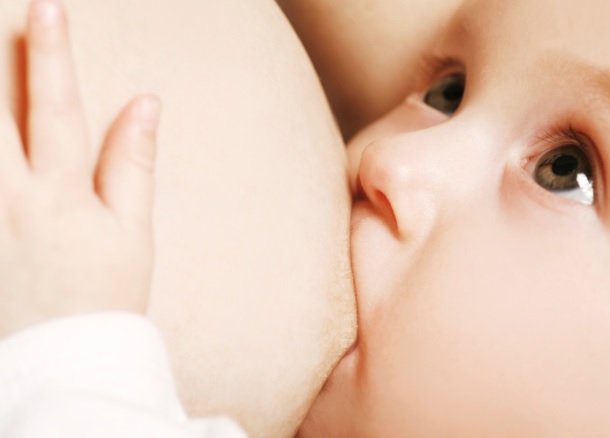 As a mother of six, I’ve been breastfeeding babies and toddlers for a cumulative 10+ years of my adult life (and counting!). That’s more than 3,650 days and nights I’ve spent nursing! For someone to spend that much of their lives committed to something, clearly they must believe it is worth the time, effort, and personal sacrifices involved. I do, and it is!
As a mother of six, I’ve been breastfeeding babies and toddlers for a cumulative 10+ years of my adult life (and counting!). That’s more than 3,650 days and nights I’ve spent nursing! For someone to spend that much of their lives committed to something, clearly they must believe it is worth the time, effort, and personal sacrifices involved. I do, and it is!
Here are just some of the reasons I’m still happily and willingly breastfeeding my toddler:
1) Breastmilk doesn’t suddenly ‘expire’ when a baby reaches 12 months. In fact, studies show that breastmilk actually changes composition to meet a child’s changing needs as they grow!
2) We all know how picky toddlers can be, so knowing that my toddler is getting a super-charged, nutrition-packed, power-snack several times a day sets my mind at ease and eliminates meal-time battles.
3) The all-important immune system enhancement that breastmilk gives our little ones keeps right on providing protection into the toddler years.
4) Not only does breastfeeding offer health benefits while a child is actively being nursed, but studies show that it also provides long-term health benefits such as reduced chances of asthma, childhood leukemia, diabetes, gastroenteritis, otitis media (ear infections), LRTIs (pneumonia, bronchitis, etc), necrotizing enterocolitis, obesity, and other potentially life-altering or fatal conditions.
5) Nursing gives me a chance to slow down several times a day and focus on my toddler. While I play with her fingers, nuzzle her little head, and smile into her big, brown eyes, I’m savoring these moments that I know will be gone all too soon.
6) Research shows that breastfeeding enhances brain development and may help little ones to reach their full intellectual potential.
7) The health benefits of breastfeeding aren’t just for children, either. For breastfeeding mothers the benefits include a statistically significant decrease in the risk of diseases such as breast cancer, ovarian cancer, diabetes, and heart disease to name just a few!
8) As a source of comfort and connection, nursing my toddler is a miracle ‘cure’ for all sorts of boo-boos, frustrations, sleeping issues, and potential meltdowns. In fact, it’s one of the best tools I’ve got in my parenting toolbox during the toddler years!
9) When faced with a serious illness recently, breastfeeding for comfort was credited for keeping my toddler out of the hospital because it kept her from getting dehydrated when she was too sick to eat or drink anything else.
10) Breastfeeding a toddler can burn from 300 to 700 calories, depending on how often they are nursing. Dieting without even trying…win!
11) Economically and environmentally speaking, I don’t have to buy bottles and formula during the infant years; I don’t buy sugary juiceboxes or plastic water bottles to bring to the park and add more trash to the landfills; I don’t have to let my little one drink from germ-ridden water fountains; and I always, day or night, anytime, anywhere, have a healthy, environmentally friendly source of hydration and nutrition for my toddler.
To check out the studies mentioned here or to find a supportive community for your breastfeeding journey, visit KellyMom.com
Related posts:
Love in the Time of Cosleeping
And Baby Makes Three~Surviving the first three months with a newborn!
Breastfeeding, Babywearing, and Bouncing Back into Shape after Baby
A Boy, A Girl, and A Baby~Journey to Gentle Parenting
Babywearing Basics Resource Guide
Practical Gentle Discipline Guide
March 8, 2013 | Categories: attachment parenting, baby led weaning, breastfeeding, soothing, toddler | Tags: breastfeeding, toddler | Leave A Comment »  Award-winnning author, L.R.Knost, is the founder and director of the children's rights advocacy and family consulting group, Little Hearts/Gentle Parenting Resources, and Editor-in-Chief of Holistic Parenting Magazine. Books by L.R.Knost include Whispers Through Time: Communication Through the Ages and Stages of Childhood ; Two Thousand Kisses a Day: Gentle Parenting Through the Ages and Stages ; The Gentle Parent: Positive, Practical, Effective Discipline ; and Jesus, the Gentle Parent: Gentle Christian Parenting the first four books in the Little Hearts Handbook gentle parenting series, and children’s picture books Petey’s Listening Ears and the soon-to-be-released Grumpykins series.
Award-winnning author, L.R.Knost, is the founder and director of the children's rights advocacy and family consulting group, Little Hearts/Gentle Parenting Resources, and Editor-in-Chief of Holistic Parenting Magazine. Books by L.R.Knost include Whispers Through Time: Communication Through the Ages and Stages of Childhood ; Two Thousand Kisses a Day: Gentle Parenting Through the Ages and Stages ; The Gentle Parent: Positive, Practical, Effective Discipline ; and Jesus, the Gentle Parent: Gentle Christian Parenting the first four books in the Little Hearts Handbook gentle parenting series, and children’s picture books Petey’s Listening Ears and the soon-to-be-released Grumpykins series.
Two Thousand Kisses a Day: Gentle Parenting Through the Ages and Stages
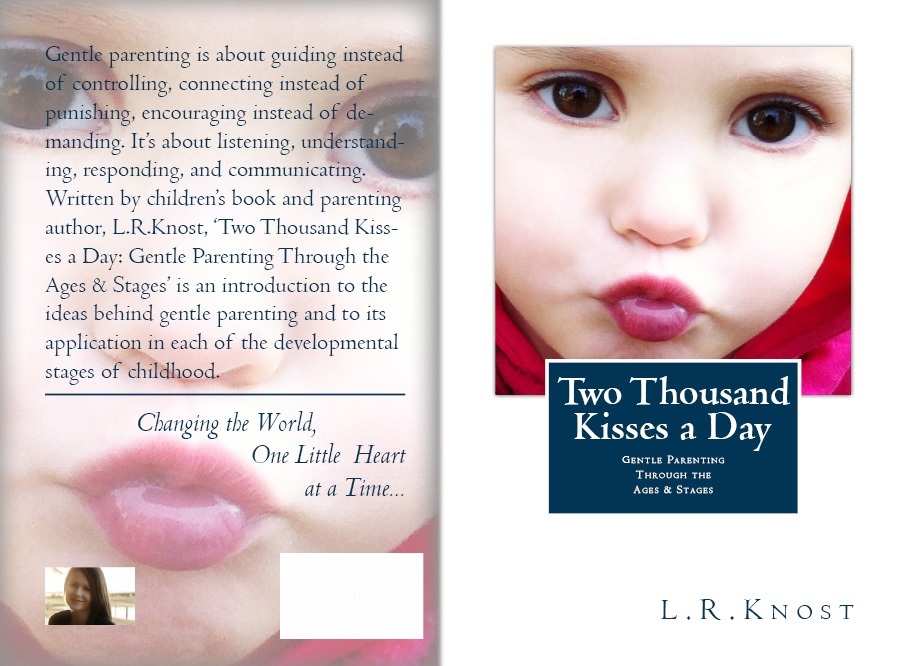 Two Thousand Kisses a Day: Gentle Parenting Through the Ages and Stages now available on Amazon:
Two Thousand Kisses a Day: Gentle Parenting Through the Ages and Stages now available on Amazon:
~The birth story of a book~
A mother is born…
Many years ago (26 to be exact!), a small, scared, pregnant, teenage girl walked down the aisle to her tall, scared, clueless, young man and they said their “I do’s.”
But what were they going to do? No earthly idea! They didn’t have the internet to surf for blogs about parenting and marriage, couldn’t afford the few paltry magazines available on those subjects at the time, and weren’t convinced that the way their parents had raised them was exactly how they wanted to raise their unexpected little blessing. So, they simply joined hands and hearts and figured it out the old-fashioned way…through trial and error.
The young girl gave birth prematurely and, after a terrifying NICU stay, brought home her barely 5 lb baby boy. Since the young couple were living on one income and were barely able to feed themselves, it made sense to them to breastfeed their little one. Neither one had ever even seen a mother breastfeeding her baby or even heard of a lactation consultant and no one at the hospital had mentioned breastfeeding at all, so the two young people just kept working through the cracked, bleeding nipples, engorgement, over-supply, and other issues until they got it figured out…and then they were breastfeeders!
Neither one of the young couple had ever read a parenting book or had ever even heard the words ‘cry-it-out,’ and the young girl discovered their first night home how much easier it was to clear away all of the pillows and blankets to keep her baby safe and then simply take her little guy into bed with her and breastfeed him when he was hungry…and then they were co-sleepers!
‘Self-soothing’ was another term the two young people had never heard, so the two of them just did what came naturally and picked up their baby when he fussed or grunted or just looked cute and finally found it easier to just snuggle their little preemie into a baby carrier and tote him around with them wherever they went…and then they were babywearers!
As their precious little guy got bigger and began to explore his new world, the young couple delighted in everything he did and simply moved him or distracted him with songs and toys if he got into things. They couldn’t bear the thought of hurting their son, so punitive parenting just wasn’t an option. They decided to treat their little guy like a person instead of a possession and communicate with him instead of punishing him…and then they were gentle discipliners!
Now, this journey might sound like an easy one when summed up this way, but I can assure you it wasn’t. The young couple, my amazing husband and I, encountered strong criticism of our parenting choices through the years:
- We were warned that our marriage would suffer at the very least, and our babies would suffocate at the worst, if we slept with them in our bed instead of putting them in isolation to sleep.
- We were informed that my breasts would look like deflated balloons and reach my knees by my thirties if I breastfed more than a few weeks.
- We were admonished that our children would grow into spoiled brats if we responded to their needs instead of teaching them to ‘deal with it’ and ‘self-soothe’ their own, and would end up as social outcasts or criminals if we encouraged and guided them instead of spanking them.
These challenges to our parenting style were difficult at the time, and they sometimes even resulted in people choosing to de-friend us (not Facebook de-friending, in real life!), but that had the powerful positive effect of making us really examine what our beliefs were and, as a result, strengthening and solidifying our values, our marriage, and our family.
As for the dire warnings listed above:
- Our beautiful, strong, loving marriage is in its 27th year.
- Our children all survived and thrived on co-sleeping (our littlest is still safely and contentedly sleeping in our bed) and have, in their own time, moved happily to their own rooms.
- Except for being a couple of cup sizes larger at the moment since I’m breastfeeding a toddler, lol, my breasts are normal despite the fact that I’ve breastfed little ones for a cumulative 10+ years of my adult life!
- Our children are, in order, a 25-year-old Pastor (our firstborn son mentioned in the story above who is now a husband and father of two!), a 23-year-old Family Therapist, an 18-year-old pre-med university student on scholarship, 13- and 7-year-old beautiful and well-behaved homeschooled girls with lots of friends (soooo not social outcasts!), and a sweet and happy 2-year-old baby girl. Not a spoiled brat or criminal in the bunch!
Our journey to gentle parenting has had another, somewhat unexpected, effect. While we may not agree with others’ parenting choices, we have been on the receiving end of criticism far too long not to have learned this lesson: Gentle parenting is for parents, too! We have learned to respond gently to our friends who don’t agree with us, even when they don’t respond gently to us. Responding with harshness and criticism doesn’t work with adults any better than it does with children! Responding gently to those who disagree with us may or may not affect their parenting choices, but what it does do is model respectful behavior and conflict resolution to our children and, most of the time, preserve dear friendships.
A gentle parenting advocate is born…
This journey also resulted in a passion for children and family harmony that launched me many years ago into the world of parent coaching and child advocacy and later initiated the creation of Little Hearts/Gentle Parenting Resources as a consulting and educational resource for parents, caregivers, and educators. The culmination of this work led to the development of a series of gentle parenting handbooks designed to equip parents with the information and tools they need to gently guide their children from infancy through toddlerhood and the preschool years and on through middle childhood, the teen years, and beyond.
A book is born…
Two Thousand Kisses a Day: Gentle Parenting Through the Ages and Stages is the first in the series. It is an introduction to the ideas behind gentle parenting and provides practical examples of its application in each of the developmental stages of childhood such as the transition from diapers to potty, problems with sharing, coping with picky eaters, guiding children gently through behavioral issues, and more!
*also published in The Natural Parent Magazine
February 20, 2013 | Categories: adolescence, anxiety, attachment parenting, baby led weaning, babywearing, birth, books, breastfeeding, character, childhood, children, communication, cosleeping, discipline, family, fear, gentle discipline, gentle parenting, meltdown, middle childhood, motherhood, natural parenting, newborn, nursing, parenting guide, positive discipline, positive parenting, preschooler, rebellion, sharing, soothing, spanking, tantrum, teens, time-in, time-out, toddler, volunteering, wisdom | Tags: gentle discipline, gentle parenting, parenting book, parenting guide, positive parenting | 3 Comments »  Award-winnning author, L.R.Knost, is the founder and director of the children's rights advocacy and family consulting group, Little Hearts/Gentle Parenting Resources, and Editor-in-Chief of Holistic Parenting Magazine. Books by L.R.Knost include Whispers Through Time: Communication Through the Ages and Stages of Childhood ; Two Thousand Kisses a Day: Gentle Parenting Through the Ages and Stages ; The Gentle Parent: Positive, Practical, Effective Discipline ; and Jesus, the Gentle Parent: Gentle Christian Parenting the first four books in the Little Hearts Handbook gentle parenting series, and children’s picture books Petey’s Listening Ears and the soon-to-be-released Grumpykins series.
Award-winnning author, L.R.Knost, is the founder and director of the children's rights advocacy and family consulting group, Little Hearts/Gentle Parenting Resources, and Editor-in-Chief of Holistic Parenting Magazine. Books by L.R.Knost include Whispers Through Time: Communication Through the Ages and Stages of Childhood ; Two Thousand Kisses a Day: Gentle Parenting Through the Ages and Stages ; The Gentle Parent: Positive, Practical, Effective Discipline ; and Jesus, the Gentle Parent: Gentle Christian Parenting the first four books in the Little Hearts Handbook gentle parenting series, and children’s picture books Petey’s Listening Ears and the soon-to-be-released Grumpykins series.
12 Steps to Gentle Parenting: A Year of Baby Steps to a Happier Family
[Reprinted from Two Thousand Kisses a Day: Gentle Parenting Through the Ages and Stages by L.R.Knost. Whispers Through Time: Communication Through the Ages and Stages of Childhood and The Gentle Parent: Positive, Practical, Effective Discipline also now available on Amazon and through other major retailers.]
~~~~~~~~~~~~~~~~~~~~~
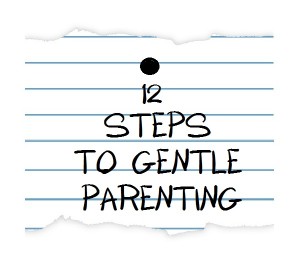 It’s been said that it takes twenty-one days to make or break a habit and that change comes easiest and lasts longest when it’s undertaken in small, bite-sized chunks. Those same principles apply when trying to transform your parenting, as well. Simply resolving on January 1st that, from that day forward, you are going to be a gentle parent and trying to change everything all at once is just setting yourself up for disappointment, frustration, and, more than likely, failure followed by that age-old enemy of peace…mommy guilt.
It’s been said that it takes twenty-one days to make or break a habit and that change comes easiest and lasts longest when it’s undertaken in small, bite-sized chunks. Those same principles apply when trying to transform your parenting, as well. Simply resolving on January 1st that, from that day forward, you are going to be a gentle parent and trying to change everything all at once is just setting yourself up for disappointment, frustration, and, more than likely, failure followed by that age-old enemy of peace…mommy guilt.
Instead, try setting yourself up for success by taking a year of ‘baby steps’ to create real, lasting transformation in your parenting. Here are 12 steps you can start any time of the year, not just on January 1st, that offer practical, effective guidance to help you on your journey to gentle parenting. Keep in mind, though, that failure is a natural, normal part of change, so remember to give yourself grace when you fail. (Also, giving yourself grace is good practice for learning to extend that same grace to your children, which is a hallmark of gentle parenting!)
January (Step 1)
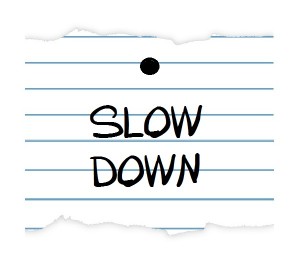 Slow down! ~ Gentle parenting is, at its core, based on a strong, healthy parent/child connection, so intentionally including time in your life to build and maintain that connection is vital. Start the year off by examining your daily and weekly schedule and looking for things to reduce or eliminate. Add up how much time your children spend in school, sleeping, in daycare, with babysitters, at sports practices, in music lessons, etc. and look at how much or little time is left over. Time for your family to connect, time to play, time to simply be, are just as important as those activities, if not more so! Eliminate and reduce what you can, and look for ways to build connection into the things you can’t eliminate. For instance, if your child has homework each night, why not sit down and work through the homework with them? As humans, we learn better through interaction, anyway, so you’ll not only be connecting, you’ll be enriching your child’s education in the process! Another area that might benefit from a connection ‘rehab’ is that morning rush to get ready and out the door. Try getting everyone up a half hour earlier to ease the morning stresses that often lead to conflict and can result in a parent/child disconnect.
Slow down! ~ Gentle parenting is, at its core, based on a strong, healthy parent/child connection, so intentionally including time in your life to build and maintain that connection is vital. Start the year off by examining your daily and weekly schedule and looking for things to reduce or eliminate. Add up how much time your children spend in school, sleeping, in daycare, with babysitters, at sports practices, in music lessons, etc. and look at how much or little time is left over. Time for your family to connect, time to play, time to simply be, are just as important as those activities, if not more so! Eliminate and reduce what you can, and look for ways to build connection into the things you can’t eliminate. For instance, if your child has homework each night, why not sit down and work through the homework with them? As humans, we learn better through interaction, anyway, so you’ll not only be connecting, you’ll be enriching your child’s education in the process! Another area that might benefit from a connection ‘rehab’ is that morning rush to get ready and out the door. Try getting everyone up a half hour earlier to ease the morning stresses that often lead to conflict and can result in a parent/child disconnect.
February (Step 2)
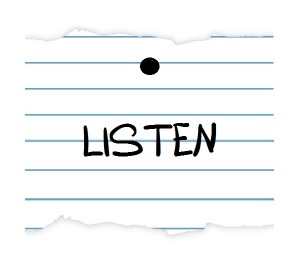 Listen! ~ Once you’ve slowed down enough to breathe, it’s time to stretch yourself and grow as a parent. Like most changes in life, it won’t come easy, but the rewards are well worth it. Fred Rogers said, “Listening is where love begins,” meaning that when we listen, we really get to know someone, learn about what motivates them, and understand their thoughts, hopes, dreams, hurts, disappointments, etc. All behaviors communicate underlying needs, and what we learn about the inner life of our children by listening to them will help us to focus on the needs behind the behaviors instead of simply correcting the ‘symptoms’ (i.e. the behavior).
Listen! ~ Once you’ve slowed down enough to breathe, it’s time to stretch yourself and grow as a parent. Like most changes in life, it won’t come easy, but the rewards are well worth it. Fred Rogers said, “Listening is where love begins,” meaning that when we listen, we really get to know someone, learn about what motivates them, and understand their thoughts, hopes, dreams, hurts, disappointments, etc. All behaviors communicate underlying needs, and what we learn about the inner life of our children by listening to them will help us to focus on the needs behind the behaviors instead of simply correcting the ‘symptoms’ (i.e. the behavior).
As a parent, it may seem instinctive to insist that our children listen to us so that our guidance and/or correction can be heard. In fact, the number one complaint I get from most parents is, “My children just don’t listen!” to which I respond, “Do you?”
The reality is that if a child doesn’t feel they are being heard, then even if they stand silently ‘listening’ while we lecture or rant or even just talk, the child is simply rehearsing in their brain what they want to say rather than actually doing any effective listening. As the only adults in the parent/child relationship, it’s up to the parent to be the first to listen, to really listen, because we are the ones with the maturity and self-control to be able to patiently wait to be heard.
March (Step 3)
 Live what you want them to learn! ~ Ralph Waldo Emerson said, “What you do speaks so loudly that I cannot hear what you say.” Consciously, intentionally, and consistently living out how you want your children to turn out is the most powerful and effective character training there is. If you want your children to be kind, be kind. If you want them to be respectful, respect them. If you want them to learn self-control, model self-control. If you want them to be compassionate, treat them with compassion. If you want them to feel joy, enjoy them. If you want them to feel valuable, treasure them. The bottom line is, your children are always watching and learning, so make sure what they see in you is what you want to see in them!
Live what you want them to learn! ~ Ralph Waldo Emerson said, “What you do speaks so loudly that I cannot hear what you say.” Consciously, intentionally, and consistently living out how you want your children to turn out is the most powerful and effective character training there is. If you want your children to be kind, be kind. If you want them to be respectful, respect them. If you want them to learn self-control, model self-control. If you want them to be compassionate, treat them with compassion. If you want them to feel joy, enjoy them. If you want them to feel valuable, treasure them. The bottom line is, your children are always watching and learning, so make sure what they see in you is what you want to see in them!
April (Step 4)
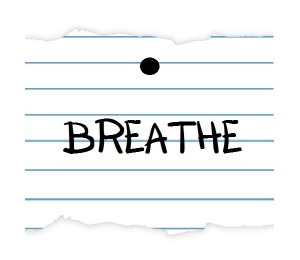 Breathe! ~ We all get overwhelmed by the seemingly endless demands of life at times, so this month remind yourself to relax and consciously focus on enjoying your children. It’s just a fact of human nature that when we enjoy something, we pay more attention to it, value it, and treat it better. Applying that fact to parenting, it makes sense to be intentional about taking time to laugh and hug and simply be with our children. Here’s a ‘bucket list’ full of ideas for simple, memorable fun to share with life’s most precious treasures, your children!
Breathe! ~ We all get overwhelmed by the seemingly endless demands of life at times, so this month remind yourself to relax and consciously focus on enjoying your children. It’s just a fact of human nature that when we enjoy something, we pay more attention to it, value it, and treat it better. Applying that fact to parenting, it makes sense to be intentional about taking time to laugh and hug and simply be with our children. Here’s a ‘bucket list’ full of ideas for simple, memorable fun to share with life’s most precious treasures, your children!
May (Step 5)
 Book it! ~ It’s been said that our treasure lies where our time, attention, and love is invested. While having special family outings and activities is a wonderful way to enjoy our children, it is in the daily routines and busyness of life that the parent/child connection can often suffer the most. One of the best ways to stay connected with our children is to build time into each day to invest in them, and one of the best investments is in a love of reading. A love of reading is born on the lap of a parent, in the soothing cadence of a mother’s voice reading the same beloved story night after night, in the rhythmic sway of a rocking chair, and in the comfortable rustle of well-worn pages being turned one after another after another. A quiet bedtime routine that includes a nighttime story will not only help bedtime to be happier and smoother, but will also incorporate vital time for you to reconnect with your children at the end of every day.
Book it! ~ It’s been said that our treasure lies where our time, attention, and love is invested. While having special family outings and activities is a wonderful way to enjoy our children, it is in the daily routines and busyness of life that the parent/child connection can often suffer the most. One of the best ways to stay connected with our children is to build time into each day to invest in them, and one of the best investments is in a love of reading. A love of reading is born on the lap of a parent, in the soothing cadence of a mother’s voice reading the same beloved story night after night, in the rhythmic sway of a rocking chair, and in the comfortable rustle of well-worn pages being turned one after another after another. A quiet bedtime routine that includes a nighttime story will not only help bedtime to be happier and smoother, but will also incorporate vital time for you to reconnect with your children at the end of every day.
June (Step 6)
 Turn your ‘no’s’ into ‘yes’s’! ~ In any home, like in any civilized society, boundaries are necessary for everyone’s safety and comfort. With gentle parenting, setting limits focuses on connection and empathetic communication rather than control and punitive consequences. This month try setting limits using gentle parenting by turning your ‘no’s’ into ‘yes’s.’ Instead of “No, you can’t have ice cream until after dinner,” try “I know you love ice cream. I do, too! We’re getting ready to eat right now, but what flavor would you like after dinner?” This invites cooperation instead of triggering opposition, another hallmark of gentle parenting!
Turn your ‘no’s’ into ‘yes’s’! ~ In any home, like in any civilized society, boundaries are necessary for everyone’s safety and comfort. With gentle parenting, setting limits focuses on connection and empathetic communication rather than control and punitive consequences. This month try setting limits using gentle parenting by turning your ‘no’s’ into ‘yes’s.’ Instead of “No, you can’t have ice cream until after dinner,” try “I know you love ice cream. I do, too! We’re getting ready to eat right now, but what flavor would you like after dinner?” This invites cooperation instead of triggering opposition, another hallmark of gentle parenting!
July (Step 7)
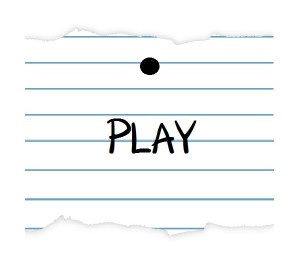 Play!~ They say that the family that plays together, stays together, and there’s great truth to that. Play is the language of childhood, and through play we get to know and connect with our children on their turf, in their native language, and on their terms. It’s a powerful moment in a parent’s life when they suddenly see their sweet little one as a separate, intelligent, worthy human being who can plan, make decisions, snap out orders, and lead other humans on a journey through an imaginary rainforest or on a trip through outer space. This month, try taking on the role of follower in your child’s land of make-believe, and you’ll discover a whole new world in which your child is strong, confident, and capable, and you’ll come away with a deeper connection with and appreciation for the person, not just the child.
Play!~ They say that the family that plays together, stays together, and there’s great truth to that. Play is the language of childhood, and through play we get to know and connect with our children on their turf, in their native language, and on their terms. It’s a powerful moment in a parent’s life when they suddenly see their sweet little one as a separate, intelligent, worthy human being who can plan, make decisions, snap out orders, and lead other humans on a journey through an imaginary rainforest or on a trip through outer space. This month, try taking on the role of follower in your child’s land of make-believe, and you’ll discover a whole new world in which your child is strong, confident, and capable, and you’ll come away with a deeper connection with and appreciation for the person, not just the child.
August (Step 8)
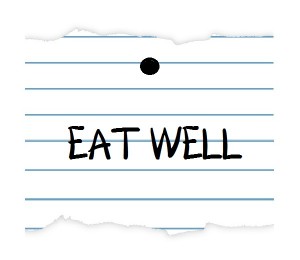 Eat well! ~ Along with all of the exercise you’ll be getting playing with your child, take stock of the kinds of food you’re providing to fuel their little engines and enrich their minds. Good nutrition may not be the first thought that pops into people’s minds when they think of gentle parenting, but studies have shown that many behavior issues and sleep problems have their root in unhealthy eating habits, nutrient-poor diets, and food additives (dyes, preservatives, etc.). Children, especially littler ones, don’t take change well as a general rule, and changes to the foods they eat are on top of the list of changes they’ll resist. As a gentle parent, working with, instead of against, our children will help to make eating healthy a fun family project instead of a food fight. Try letting your children help you make weekly menus and shop for the fresh ingredients you’ll be using, and let them help you cook, too. If they feel like a part of the change instead of a victim of it, they’re far more likely to cooperate. If you have picky eaters, don’t hesitate to serve them the same foods you normally do, just with a few added healthy ingredients slipped in to make them healthier. For ideas on ways to make healthy changes more fun, click here.
Eat well! ~ Along with all of the exercise you’ll be getting playing with your child, take stock of the kinds of food you’re providing to fuel their little engines and enrich their minds. Good nutrition may not be the first thought that pops into people’s minds when they think of gentle parenting, but studies have shown that many behavior issues and sleep problems have their root in unhealthy eating habits, nutrient-poor diets, and food additives (dyes, preservatives, etc.). Children, especially littler ones, don’t take change well as a general rule, and changes to the foods they eat are on top of the list of changes they’ll resist. As a gentle parent, working with, instead of against, our children will help to make eating healthy a fun family project instead of a food fight. Try letting your children help you make weekly menus and shop for the fresh ingredients you’ll be using, and let them help you cook, too. If they feel like a part of the change instead of a victim of it, they’re far more likely to cooperate. If you have picky eaters, don’t hesitate to serve them the same foods you normally do, just with a few added healthy ingredients slipped in to make them healthier. For ideas on ways to make healthy changes more fun, click here.
September (Step 9)
 Don’t forget your funny bone! ~ Often the best parenting advice is simply~Chill out! Relax! Laugh a little, for goodness’ sake! Sometimes as parents we get so caught up in ‘fixing’ our children that all we see are problems. We start focusing so much on preparing our children for their future that we forget to let them live in the present. One of the main problems with that is that children are, by their very nature, creatures of the ‘now,’ living fully immersed in each present moment. G. Mistral said, “Many things we need can wait. The child cannot. Now is the time his bones are formed, his mind developed. To him we cannot say tomorrow, his name is today.” This month, pull out your dusty, old funny-bone, the one that used to keep you in stitches when you were a child, and laugh, on purpose, every day with your child. You’ll be amazed at how a good belly laugh can turn even the worst day into something a little easier to handle and how much a giggle-fest can heal the little rifts that tend to occur in the parent/child connection throughout each day.
Don’t forget your funny bone! ~ Often the best parenting advice is simply~Chill out! Relax! Laugh a little, for goodness’ sake! Sometimes as parents we get so caught up in ‘fixing’ our children that all we see are problems. We start focusing so much on preparing our children for their future that we forget to let them live in the present. One of the main problems with that is that children are, by their very nature, creatures of the ‘now,’ living fully immersed in each present moment. G. Mistral said, “Many things we need can wait. The child cannot. Now is the time his bones are formed, his mind developed. To him we cannot say tomorrow, his name is today.” This month, pull out your dusty, old funny-bone, the one that used to keep you in stitches when you were a child, and laugh, on purpose, every day with your child. You’ll be amazed at how a good belly laugh can turn even the worst day into something a little easier to handle and how much a giggle-fest can heal the little rifts that tend to occur in the parent/child connection throughout each day.
October (Step 10)
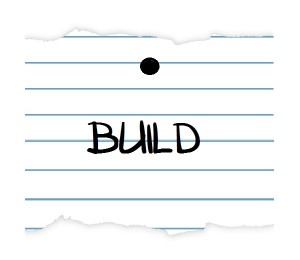 If you build it, they will come! ~ A shared project can offer a real chance to get to know your child on an entirely new level, so this month find something to build together. Choose something they are interested in, whether it’s a model rocket or tree fort, and watch them blossom as they learn and build and grow. Your role is supportive~finding the materials, helping to read the instructions, offering suggestions or help when they struggle, etc. Simply being there through the process will enrich your connection with your child and offer you valuable insights into their interests and learning style, which will provide tools for you to use when helping them with their homework or homeschooling them.
If you build it, they will come! ~ A shared project can offer a real chance to get to know your child on an entirely new level, so this month find something to build together. Choose something they are interested in, whether it’s a model rocket or tree fort, and watch them blossom as they learn and build and grow. Your role is supportive~finding the materials, helping to read the instructions, offering suggestions or help when they struggle, etc. Simply being there through the process will enrich your connection with your child and offer you valuable insights into their interests and learning style, which will provide tools for you to use when helping them with their homework or homeschooling them.
November (Step 11)
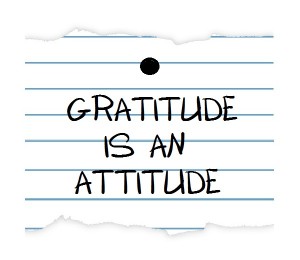 Gratitude is an attitude! ~ Teaching our children to be grateful involves far more than simply instructing them to say, “Thank you.” We all want to be appreciated, and children are no different. Modeling the things we want to see in our children is the single most powerful mode of instruction, so living a life of gratitude ourselves goes a long way toward raising our little ones to be happy, grateful humans. Openly appreciating our children, telling them what we like about them, and thanking them for the things they do is a sure-fire way of inspiring an attitude of gratitude in their little hearts. This month, be intentional in finding things to praise in your children. Don’t be falsely enthusiastic or use “Good job!” as a brush-off to get them to leave you alone. Instead, honestly tell them what you like about them. Tell them ‘thank you’ when they remember to brush their teeth without being told or help their little sister with her block tower. Let them know you think their artwork is beautiful and don’t hesitate to give them a pat on the back for a job well done when they straighten their room. Remember, it is the hungry child, not the satisfied child, who craves food, and, in the same way, it is unmet needs that lead to attention seeking behaviors and unspoken approval that can create ‘praise junkies’ as the unpraised child seeks to fill the very human need we all have for validation.
Gratitude is an attitude! ~ Teaching our children to be grateful involves far more than simply instructing them to say, “Thank you.” We all want to be appreciated, and children are no different. Modeling the things we want to see in our children is the single most powerful mode of instruction, so living a life of gratitude ourselves goes a long way toward raising our little ones to be happy, grateful humans. Openly appreciating our children, telling them what we like about them, and thanking them for the things they do is a sure-fire way of inspiring an attitude of gratitude in their little hearts. This month, be intentional in finding things to praise in your children. Don’t be falsely enthusiastic or use “Good job!” as a brush-off to get them to leave you alone. Instead, honestly tell them what you like about them. Tell them ‘thank you’ when they remember to brush their teeth without being told or help their little sister with her block tower. Let them know you think their artwork is beautiful and don’t hesitate to give them a pat on the back for a job well done when they straighten their room. Remember, it is the hungry child, not the satisfied child, who craves food, and, in the same way, it is unmet needs that lead to attention seeking behaviors and unspoken approval that can create ‘praise junkies’ as the unpraised child seeks to fill the very human need we all have for validation.
December (Step 12)
 Celebrate! ~ Take time this month to give yourself a pat on the back for working toward your goal of becoming a gentle parent. Congratulate yourself for all that you’ve accomplished and take stock of your successes as well as your failures. Don’t focus on your mistakes. Simply learn from them, forgive yourself, and move forward. Look back at where you were as a parent a year ago and compare that to where you are now. Don’t worry if you haven’t come as far as you’d like. Life is for living and learning and growing, and another year is about to start with a chance to move forward into a new beginning. Everything you’ve invested in your children in the last year has been worthwhile, and everything you’ll invest in the coming years will build on the foundation you’ve begun. So take this month to celebrate you and to enjoy the return on your investment!
Celebrate! ~ Take time this month to give yourself a pat on the back for working toward your goal of becoming a gentle parent. Congratulate yourself for all that you’ve accomplished and take stock of your successes as well as your failures. Don’t focus on your mistakes. Simply learn from them, forgive yourself, and move forward. Look back at where you were as a parent a year ago and compare that to where you are now. Don’t worry if you haven’t come as far as you’d like. Life is for living and learning and growing, and another year is about to start with a chance to move forward into a new beginning. Everything you’ve invested in your children in the last year has been worthwhile, and everything you’ll invest in the coming years will build on the foundation you’ve begun. So take this month to celebrate you and to enjoy the return on your investment!
~~~~~~~~~~~~
Do you see a theme throughout this gentle parenting ’12-step program’? Getting to know and enjoy your children as individuals, intentionally focusing on building and maintaining a strong and healthy parent/child connection, and living what you want your children to learn are the bedrocks of gentle parenting. Walking through these steps, revisiting them when you find yourself struggling, and appreciating the incredible, miraculous gifts that each individual child brings into the world will keep you growing as a gentle parent day after day, month after month, year after year. Live. Laugh. Love. Enjoy!
Two Thousand Kisses a Day: Gentle Parenting Through the Ages and Stages by L.R.Knost now available on Amazon
*Also published in The Natural Parent Magazine
Related posts:
Practical, Gentle, Effective Discipline
200 Ways to Bless Your Children with a Happy Childhood
The Bookshelf~To Read or Not to Read
The Seven Wonders of the World of Childhood
Testing the Boundaries~What’s a Parent to Do?
100 Ways to Tell the Difference Between a Child and a Weed (in case you were wondering)
It’s Okay to Praise your Child
25 Reasons NOT to Keep your Children Busy
January 1, 2013 | Categories: attachment parenting, communication, gentle parenting, Uncategorized | 49 Comments »  Award-winnning author, L.R.Knost, is the founder and director of the children's rights advocacy and family consulting group, Little Hearts/Gentle Parenting Resources, and Editor-in-Chief of Holistic Parenting Magazine. Books by L.R.Knost include Whispers Through Time: Communication Through the Ages and Stages of Childhood ; Two Thousand Kisses a Day: Gentle Parenting Through the Ages and Stages ; The Gentle Parent: Positive, Practical, Effective Discipline ; and Jesus, the Gentle Parent: Gentle Christian Parenting the first four books in the Little Hearts Handbook gentle parenting series, and children’s picture books Petey’s Listening Ears and the soon-to-be-released Grumpykins series.
Award-winnning author, L.R.Knost, is the founder and director of the children's rights advocacy and family consulting group, Little Hearts/Gentle Parenting Resources, and Editor-in-Chief of Holistic Parenting Magazine. Books by L.R.Knost include Whispers Through Time: Communication Through the Ages and Stages of Childhood ; Two Thousand Kisses a Day: Gentle Parenting Through the Ages and Stages ; The Gentle Parent: Positive, Practical, Effective Discipline ; and Jesus, the Gentle Parent: Gentle Christian Parenting the first four books in the Little Hearts Handbook gentle parenting series, and children’s picture books Petey’s Listening Ears and the soon-to-be-released Grumpykins series.
Peaceful Parent, Happy Kids~An Interview with Dr. Laura Markham
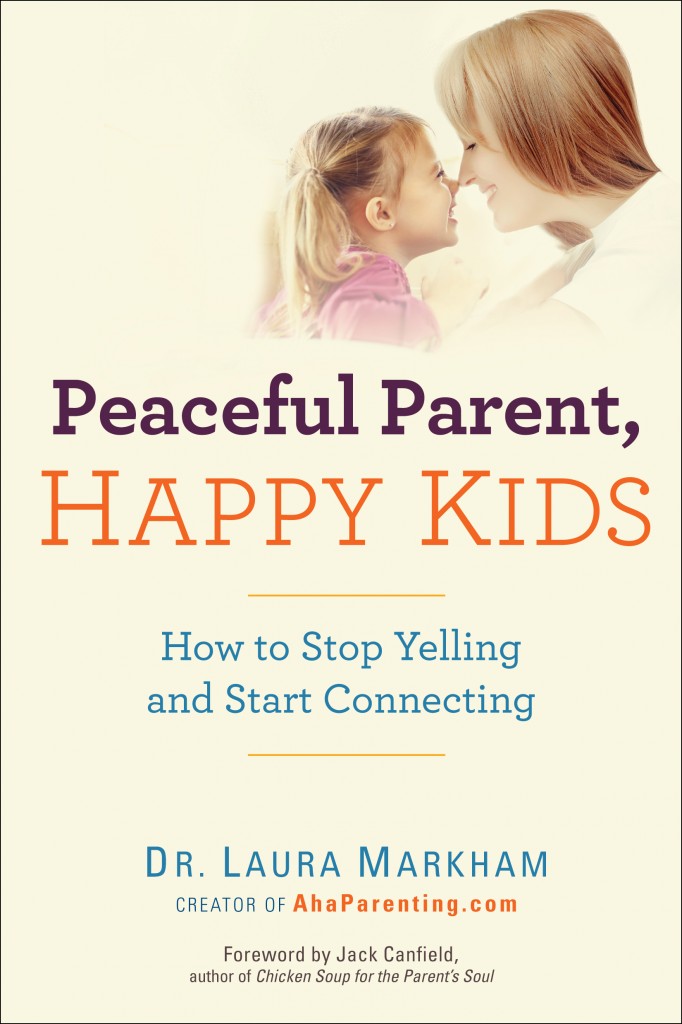 Dr. Laura Markham’s website, AhaParenting.com, is one of my favorite go-to resources to share with parents. With sound advice based on clinical and personal experience and supported by research, Dr. Markham offers excellent guidance for parents looking for help in their gentle parenting journeys.
Dr. Laura Markham’s website, AhaParenting.com, is one of my favorite go-to resources to share with parents. With sound advice based on clinical and personal experience and supported by research, Dr. Markham offers excellent guidance for parents looking for help in their gentle parenting journeys.
Now, there’s a new resource from Dr. Markham that I’m delighted to share with you: her new parenting guide, Peaceful Parent, Happy Kids: How to Stop Yelling and Start Connecting! With a personable approach, clear explanations, and anecdotal illustrations, you’ll find Peaceful Parents, Happy Kids: How to Stop Yelling and Start Connecting an easy-to-read, helpful resource to keep on hand and to share with other parents in need of a little guidance. (Check back here on Monday for a chance to win a copy for free!)
Dr. Markham honored Little Hearts/Gentle Parenting Resources with the opportunity to be a part of her virtual book tour to launch her new book by engaging in an online interview with me. Here is the transcript from our surprisingly candid and insightful interview:
Welcome, Dr. Markham! Will you share your background/experience/education with my readers?
I’m trained as a clinical psychologist. When I got my PhD at Columbia University, my mentor was Dr. Larry Aber, an attachment theorist who ran the Barnard Toddler Center.
I was fascinated by the longitudinal studies that followed children over time and found that securely attached children are easier to raise, do better in school, are better liked by teachers and peers, are more professionally successful, are happier, are healthier, have better romantic relationships and marriages, enjoy parenting more, and are more likely to themselves raise securely attached children.
Unfortunately, only about 60% of children in the US (this varies a bit across cultures) are estimated to be securely attached, leaving the other 40% to struggle emotionally for their entire lives. And yet, this is something we can change – by working with parents! We can accurately project whether a child will be securely attached by interviewing the mom before the child is even born, and we can work with the parents to help them resolve their own attachment issues to raise a securely attached child. Every parent deserves that opportunity. That’s why I specialize in parenting.
So you advocate Attachment Parenting?
I’m an Attachment Theorist, but Attachment Parenting is not quite the same as Attachment Theory.
Attachment Parenting is a set of practices – for instance, wearing your baby, breastfeeding and co-sleeping – that are thought to promote a secure attachment. As an Attachment Theorist, I think it’s important to point out that while these practices may facilitate more responsive parenting—which does indeed contribute to a secure attachment—they are not the actual cause of ‘secure attachment.’
What creates a secure attachment is a parent who is warmly responsive to the needs of her unique child and able to accept the full range of his emotions. That means, for instance, that as a parent it’s important that we’re able to tolerate our child being angry at us, or clingy, or crying. To do that, we have to be able to stay calm and regulate our own feelings, and nurture our child through his emotions. That’s what creates attachment security.
Do you recommend babywearing, breastfeeding, and cosleeping?
I lived those practices with my own children, and they made my life easier and my babies happier. I personally believe they help us to be more responsive as parents, and research is emerging to back that up. So yes, I recommend them. But my point is that if it doesn’t work for you to use one or more of these practices, for whatever reason, it doesn’t mean you can’t be a responsive parent with a securely attached child.
How has your own parenting journey contributed to your work and to your new book?
When my son was born 21 years ago, my midwife told me before I left the hospital that I should begin right away to let my son cry at night so he would sleep better. My instincts, and my training, told me that was wrong. The more suggestions I heard, the more I realized that most parenting advice we take for granted in our culture was inherited from previous generations who did not have access to the longitudinal and brain research that we have now.
For instance, we now know that the advice during the last century to “Leave your baby to cry and he’ll learn to self-soothe” simply isn’t true – babies’ brains develop the wiring to soothe themselves by being soothed by their parents. Babies who are left to cry may stop crying because they’ve learned that no one comes, but their cortisol levels are still measurably high, indicating that they’re still stressed. That stress and fear has to come out somewhere, in the baby’s cranky moods or clingy behavior.
Another example is the pervasive practice of time-outs. Children act out because they’re in the grip of strong emotions, just as adults do. Sending them off alone to calm down gives them the message that having emotions is a bad thing, and that they’re all alone to learn to manage their overwhelming, scary feelings. And punishment actually hinders moral development—it doesn’t help the child behave better.
When my son was born, I saw so many parents around me struggling. Parenting is the hardest work we do, as I learned first hand, and parents don’t get the support we need and deserve. But I also saw parents unknowingly creating problems with their children by following well-intentioned, but misinformed, advice. These were wonderful people who loved their children without reservation and only wanted what was best for their children. They would have been horrified to learn that their own actions were making their kids act out more. So I wanted to support parents and help them get a better start with their children.
What influence did your own childhood experiences have on your parenting philosophy?
My parents both loved me, but they were divorced and had their own challenges. They couldn’t handle their own emotions, much less mine. I remember vividly how fast I had to grow up, how lonely I felt, how I was looking in all the wrong places for someone to love me as a teenager.
Now, I couldn’t have explained to you, even as a 16-year-old, what was wrong. But having that experience, I can say with total certainty that every child who is acting out is sending us an SOS for understanding, connection, and help with their emotions—no matter how incomprehensible their behavior may be to us.
How is it that you came out of those experiences okay?
Parents often ask me that when they hear about my childhood. I spent years in therapy and years meditating. I still have to work at taking care of myself; it doesn’t come naturally because I wasn’t taken care of. And I’m just lucky that I didn’t have additional risk factors – like ADHD, or a vulnerability to addiction – or I might not have made it to adulthood.
But there are two positive takeaways here:
1. No matter what your childhood was like, you can heal it and be the parent your child needs.
2. No parent is perfect, because we’re human. Luckily, children are pretty resilient. What we do right is more important in creating the solid foundation for our kids than those times we mess up.
What has most impacted your parenting philosophy?
My understanding of children includes my training in child development, especially Attachment theory, which I’ve already mentioned. What I see parents struggling with is always emotions – their own, and their child’s. We all need a loving “witness” so we can heal our emotional hurts, which I first learned from Virginia Axline and Carl Rogers, and then saw Aletha Solter put into practice with babies.
Of course, recent neurological findings have helped me flesh out and evolve my approach, so I’m a fan of Dan Siegel and Allan Schore. Finally, my specialty is practical solutions to the issues of everyday family life, so I’ve learned from countless leaders in the field –Adele Faber, Magda Gerber, Patty Wipfler, Larry Cohen, Jane Nelsen, and so many more.
How does the style of parenting you advocate build trust to set the stage for a peaceful, mutually respectful parent/child relationship throughout the childhood and adolescent years?
Every time we listen to our crying baby, tantruming toddler, or whining preschooler and respond to her needs, we build our child’s trust that we’re on her side, looking out for her best interests.
Every time we resist our impulse to lash out with punishment, and instead help our child with the feelings that are driving her behavior, we help her gain the emotional skills to manage her behavior.
Every time we seek first to connect, and only then to guide, we help our child want to follow our guidance.
That slow accretion of respectful interactions is what builds the strong relationship we all want with our children. Our children learn that’s how to live in relationship, so they’re naturally respectful, compassionate and considerate. They treasure their relationship with us, and would no more damage that relationship — by lying to us, or defying us — than they would set fire to the house, and for the same reasons.
I now have a 21-year-old and a 17-year-old. We never had the rocky teen years that scare parents. I think that tough teen stage is completely unnecessary; it’s created by a parenting style that doesn’t meet kids’ needs.
If you had to sum up your parenting philosophy in a single sentence, what would it be?
Choose love.
Or more specifically:
Manage your own emotions so that you can listen, empathize and stay connected with your child as you guide him. When you get upset, breathe through it and don’t take action until you’re centered again so you have access to your deeper wisdom.
Dr. Markham, thank you so much for including ‘Little Hearts/Gentle Parenting Resources’ in your virtual book tour, and good luck with the launch of ‘Peaceful Parent, Happy Kids: How To Stop Yelling and Start Connecting’!
~~~~~~~~~~~~~~
 Dr. Laura Markham trained as a clinical psychologist, but she’s also a mother, so she understands parents as well as kids. Her new book is Peaceful Parent, Happy Kids: How to Stop Yelling and Start Connecting. You can get Dr. Laura’s free daily or weekly emails online at AhaParenting.com, the home of Aha! Moments for parents of babies through teens.
Dr. Laura Markham trained as a clinical psychologist, but she’s also a mother, so she understands parents as well as kids. Her new book is Peaceful Parent, Happy Kids: How to Stop Yelling and Start Connecting. You can get Dr. Laura’s free daily or weekly emails online at AhaParenting.com, the home of Aha! Moments for parents of babies through teens.
November 29, 2012 | Categories: attachment parenting, babywearing, books, breastfeeding, cosleeping, parenting guide, positive discipline, positive parenting | Tags: babywearing, emotional intelligence, parenting, positive discipline, positive parenting, time-out | 4 Comments »  Award-winnning author, L.R.Knost, is the founder and director of the children's rights advocacy and family consulting group, Little Hearts/Gentle Parenting Resources, and Editor-in-Chief of Holistic Parenting Magazine. Books by L.R.Knost include Whispers Through Time: Communication Through the Ages and Stages of Childhood ; Two Thousand Kisses a Day: Gentle Parenting Through the Ages and Stages ; The Gentle Parent: Positive, Practical, Effective Discipline ; and Jesus, the Gentle Parent: Gentle Christian Parenting the first four books in the Little Hearts Handbook gentle parenting series, and children’s picture books Petey’s Listening Ears and the soon-to-be-released Grumpykins series.
Award-winnning author, L.R.Knost, is the founder and director of the children's rights advocacy and family consulting group, Little Hearts/Gentle Parenting Resources, and Editor-in-Chief of Holistic Parenting Magazine. Books by L.R.Knost include Whispers Through Time: Communication Through the Ages and Stages of Childhood ; Two Thousand Kisses a Day: Gentle Parenting Through the Ages and Stages ; The Gentle Parent: Positive, Practical, Effective Discipline ; and Jesus, the Gentle Parent: Gentle Christian Parenting the first four books in the Little Hearts Handbook gentle parenting series, and children’s picture books Petey’s Listening Ears and the soon-to-be-released Grumpykins series.
Love, Play, Learn!
“Since we can’t know what knowledge will be most needed in the future, it is senseless to try to teach it in advance. Instead, we should try to turn out people who love learning so much and learn so well that they will be able to learn whatever needs to be learned.” ~John Holt
 A love of learning begins in the home with the establishment of a secure foundation of trust from which children can explore their world freely and joyfully. Fred Rogers said, “Play is the work of childhood.” In other words, play is not a waste of time, something to be dispensed with in pursuit of ‘more important’ activities, classes, sports, etc. Play is the vehicle through which children process the adult-sized world they live in and the big emotions and overwhelming sensory input that comes with it. Play involves imagination, creativity, and unrestricted activity. Those qualities flourish in the context of a secure attachment to a parent, a sure knowledge that a safe haven, gentle guidance, and unfailing support are no more than a stone’s throw away.
A love of learning begins in the home with the establishment of a secure foundation of trust from which children can explore their world freely and joyfully. Fred Rogers said, “Play is the work of childhood.” In other words, play is not a waste of time, something to be dispensed with in pursuit of ‘more important’ activities, classes, sports, etc. Play is the vehicle through which children process the adult-sized world they live in and the big emotions and overwhelming sensory input that comes with it. Play involves imagination, creativity, and unrestricted activity. Those qualities flourish in the context of a secure attachment to a parent, a sure knowledge that a safe haven, gentle guidance, and unfailing support are no more than a stone’s throw away.
Parenting choices strongly impact the level and type of attachment a child develops and, by extension, the development of a love of learning. A love of learning grows when it isn’t stifled by fear or stress or regimented by over-structuring or a focus on achievement or competition. Parents fostering a healthy attachment are thus also fostering a life-long love of learning in their children. The four characteristics of healthy attachment (i.e. evidences of a healthy attachment) according to the originator of Attachment Theory, John Bowlby, are:
- Proximity Maintenance – A child’s desire to be near the parent
- Safe Haven – A child seeking the parent for comfort and safety when afraid
- Secure Base – The parent as a base of security from which a child can explore and experiment
- Separation Distress – A child’s anxiety in the absence of the parent
These characteristics of healthy attachment are developed through parenting choices such as promptly responding to needs, positive guidance, healthy interaction, and modeling of desired behaviors. When a parent intentionally builds a trust relationship from the beginning of a child’s life, it forms the secure basis from which a child can explore and create and interact. And that is where a love of learning is fostered, in the joy of exploring texture by mashing lunch through tiny fingers instead of eating it, in the fascination of creating towers of blocks and knocking them down repeatedly, and in the comforting cadence of a parent’s voice reading the same Dr. Seuss book night after night after peaceful night.
~~~~~~~~~~
 I like nonsense, it wakes up the brain cells. Fantasy is a necessary ingredient in living, it’s a way of looking at life through the wrong end of a telescope. Which is what I do, and that enables you to laugh at life’s realities.~Dr. Seuss
I like nonsense, it wakes up the brain cells. Fantasy is a necessary ingredient in living, it’s a way of looking at life through the wrong end of a telescope. Which is what I do, and that enables you to laugh at life’s realities.~Dr. Seuss
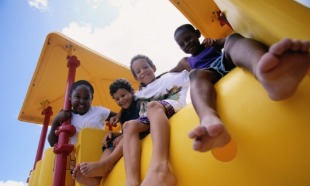
Play is imagination with feet~L.R.Knost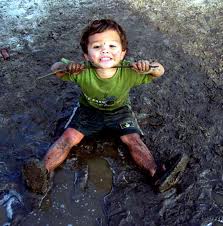


 A love of learning is born on the playground, in a fort made of sofa cushions, and in the pages of a picturebook. ~L.R.Knost
A love of learning is born on the playground, in a fort made of sofa cushions, and in the pages of a picturebook. ~L.R.Knost
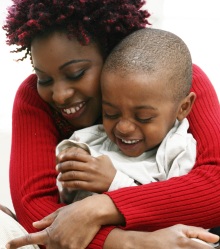
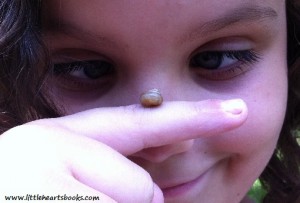 The most effective kind of education is that a child should play amongst lovely things. ~Plato
The most effective kind of education is that a child should play amongst lovely things. ~Plato

Without imagination there may as well be no God, no Heaven, for we could not discern them, much less desire them, if we only saw with our eyes and not with our hearts.~L.R.Knost
Related posts:
In the world of a child wonders are as simple as sticks and sheets, leaves and books, boxes and giggles, and the promise in a rainy day. The Seven Wonders of the World of Childhood
There is such a rush these days to get children sleeping through the night, weaned off the breast, eating solid foods, potty trained, reading independently, and on and on, that we seem to have lost the ability to simply enjoy life as it happens and let our children do the same. A Return to Childhood
On a Winnie the Pooh style ‘long explore’ my little Pooh Bear discovered the world in ways only a toddler can in…The Many Adventures of My Little Pooh Bear
Children who love to read…READ! Engaging children’s hearts in the wonder of reading instead of just training their minds in its mechanics. Raising Bookworms
The evolution of children’s communication proceeds at a steady and relatively predictable pace, though the timing is influenced by factors such as individual personality, cognitive development, home environment, etc. Here’s what to expect through the ages and stages…Tots to Teens~Communication through the Ages and Stages
From hitting to defiance to tantrums to testing the boundaries and more, here are gentle parenting tools, tips, and techniques…Practical Gentle Discipline
August 12, 2012 | Categories: attachment parenting | 7 Comments »  Award-winnning author, L.R.Knost, is the founder and director of the children's rights advocacy and family consulting group, Little Hearts/Gentle Parenting Resources, and Editor-in-Chief of Holistic Parenting Magazine. Books by L.R.Knost include Whispers Through Time: Communication Through the Ages and Stages of Childhood ; Two Thousand Kisses a Day: Gentle Parenting Through the Ages and Stages ; The Gentle Parent: Positive, Practical, Effective Discipline ; and Jesus, the Gentle Parent: Gentle Christian Parenting the first four books in the Little Hearts Handbook gentle parenting series, and children’s picture books Petey’s Listening Ears and the soon-to-be-released Grumpykins series.
Award-winnning author, L.R.Knost, is the founder and director of the children's rights advocacy and family consulting group, Little Hearts/Gentle Parenting Resources, and Editor-in-Chief of Holistic Parenting Magazine. Books by L.R.Knost include Whispers Through Time: Communication Through the Ages and Stages of Childhood ; Two Thousand Kisses a Day: Gentle Parenting Through the Ages and Stages ; The Gentle Parent: Positive, Practical, Effective Discipline ; and Jesus, the Gentle Parent: Gentle Christian Parenting the first four books in the Little Hearts Handbook gentle parenting series, and children’s picture books Petey’s Listening Ears and the soon-to-be-released Grumpykins series.
Breastfeeding, Babywearing & Bouncing Back into Shape after Baby
[By L.R.Knost, author of Two Thousand Kisses a Day: Gentle Parenting Through the Ages and Stages, Whispers Through Time: Communication Through the Ages and Stages of Childhood, and The Gentle Parent: Positive, Practical, Effective Discipline available on Amazon and through other major retailers.]
~~~~~~~~~~~~~~~~~~~~~
 There is no such thing as a ‘miracle’ weight-loss plan, but living a healthy, active life and eating nutritious meals doesn’t have to be all about sweat, sacrifice, and self-discipline, either. It can be about having fun, eating foods you love, and, best of all, it can fit right in with your lifestyle! By following a few basic nutritional guidelines and finding ways to fit exercise into your daily life, you can create your own ‘life plan’ and start moving toward your weight-loss and health goals.
There is no such thing as a ‘miracle’ weight-loss plan, but living a healthy, active life and eating nutritious meals doesn’t have to be all about sweat, sacrifice, and self-discipline, either. It can be about having fun, eating foods you love, and, best of all, it can fit right in with your lifestyle! By following a few basic nutritional guidelines and finding ways to fit exercise into your daily life, you can create your own ‘life plan’ and start moving toward your weight-loss and health goals.
1.) Practice the 3 B’s
Breastfeeding~Did you know that one of the best ways to lose weight after giving birth is to breastfeed? Breastfeeding uses about 300-500 of the calories you eat each day. That means if you eat the full amount of daily recommended calories for your weight, you’re actually dieting! I don’t recommend calorie-counting as a means of weight loss, but that’s a pretty cool fact, anyway! And when you add the fact that breastfeeding significantly reduces your risk of breast cancer and is super healthy for baby…win-win-win!
Babywearing ~Did you know that in addition to all of the amazing benefits to your baby, babywearing also offers you an excellent opportunity for a daily workout? Wearing your baby works your core and glutes specifically and gives you a full body workout, as well! Who needs a gym when housecleaning, walks on the beach, strolls through the mall, and just daily life in general are an excellent workout, all while keeping baby next to your heart and close enough for kisses?!?
Bouncing~Did you know that kegels can actually do more harm than good? Shallow knee bends like the ones mommies use instinctively when they bounce to soothe a fussy baby are the preferred method of improving the pelvic girdle! So say goodbye to the sneezing/laughing ‘leakies’ and hello to buns and thighs of steel!
2.) Healthy Eating, It Does a Body Good
Did you know that a low fat diet can actually make you fat? A diet of full-fat milk, real butter, real cane sugar, extra virgin olive oil, coconut oil, fat-marbled meat, eggs, nuts of all kinds, cheeses, fruits, veggies, and whole grain pastas and breads is far more likely to help you lose weight and maintain a healthy weight for life.
Along with enjoying these yummy foods, you’ll lose weight faster and be overall healthier by avoiding High Fructose Corn Syrup (HFCS – it’s in practically everything…breads, juices, jellies, etc…so you’ll have to read labels carefully!) and other corn-derived syrups and sugars, along with food dyes, margarine, vegetable/canola/safflower oils, and artificial sweeteners.
If you’ve got a sweet-tooth, denying yourself a treat can lead to overeating as you try to satisfy that urge with other foods. One way to combat that is to indulge in a small amount of ice cream (without HFCS or other corn syrups!) or dark chocolate, preferably in the evening because raising your blood sugar earlier in the day tends to increase your appetite for the rest of the day.
Keep in mind, letting yourself become hungry is one of the surest paths to overeating! It’s far better to eat multiple, small, snack-type meals throughout the day than to wait for meals when you’ll be hungrier and more likely to eat too much. Other benefits to ‘snacking’ instead of eating three full-on meals are 1.) Maintaining a consistent blood sugar, which aids in appetite control and helps your body escape the ‘survival’ instinct to store fat; 2.) Reducing your appetite naturally by eating smaller amounts at a time which helps your stomach to shrink; and 3.) Increasing your metabolism by consistently keeping your digestive system heated up in ‘burn mode.’
Sample meal plan:
1st Breakfast~
¼ cup almonds & ¼ cup raisins
2nd Breakfast~
1 whole egg (Yes, eat the yolk, too! That’s where most of the healthy nutrients are.)
1 Whole wheat English muffin with real butter and ¼ cup natural fruit preserves
8 oz. cottage cheese
Elevensees~
½ cup pretzels & 2 oz. whole-fat cheese
Lunch~
Spinach salad with ¼ cup shredded carrots, ¼ cup dried apricots or cranberries, 2 oz. whole-fat shredded cheese, 4 oz. shredded pork, 2 tbs. minced almonds or sunflower seeds , and 2-4 tbs. Balsamic Vinaigrette (Read the label and watch out for HFCS!)
Tea~
8 oz. yogurt & ¼ cup granola & ¼ cup berries
Supper~
Fettucini Alfredo, Meatball Sub, Pizza, whatever you want! Just fill up your plate as you normally would, then put back half. After you eat, wait 20 minutes and, if you’re still hungry, eat ¼ of what you put back. (Supper is where most people ‘fail’ because that’s the time most social eating occurs. Rather than denying yourself and setting yourself up for failure, this plan allows you to enjoy the foods and social life you’re accustomed to, while still cutting out ¼ to ½ of the calories you’d normally eat at this meal.)
Dessert~
For those with a sweet tooth, after supper is the best time for a few ounces of dark chocolate or ice cream! Pastries and cakes aren’t good choices for a treat, but if you indulge occasionally, no worries 🙂
Bedtime snack~
¼ cup almonds & ¼ cup dried pomegranates or cranberries
You can take this sample plan and switch out items from the same food group so it fits your tastes. For instance, if you don’t like salads, you could switch out the lunch salad with a baked whole grain pork burrito and top it with lettuce, tomato, cheese, etc. Just try to make sure that for every protein/fruit/veggie/dairy you take out, you put the same amount back in. (Sorry about The Hobbit reference. I couldn’t resist!)
3.) A Grateful Heart is a Healthy Heart
Science has proven that a good outlook on life improves not only the quality of a person’s life, but also the length and health aspects of their life. Taking time to intentionally focus on the good things in your life will improve your health, satisfaction, and overall happiness. Here are some ideas:
A.) Get outdoors! Heading out into the sunshine has been shown to improve a person’s mood as well as their health. There’s something about standing in the midst of towering trees or watching butterflies flutter by in the garden that makes stress just melt away. (And a daily dose of sunshine-induced Vitamin D is good for your bones!)
B.) Walka-Walka-Walka! Walking improves circulation and deepens breathing, both of which will make you feel more alive and ready to take on the world!
C.) Count your blessings! Taking time each day to list and be thankful for the good things in your life helps to create balance, making life feel more manageable when it begins to feel overwhelming.
D.) Volunteer! Reaching out to help your fellow humans in need is a great way to make your life feel a lot more purposeful and to help you get a healthy perspective on the stresses in your life.
E.) Laugh out loud! We all type that little ‘lol’ all the time when we’re online, but did you know that actually doing it, really and truly laughing out loud, releases stress-relieving, feel-good endorphins in our bodies? So watch a comedy routine, catch a funny old sit-com rerun, or just sit and enjoy a child playing for ten minutes, and you’ll be sure to laugh away the blues!
*Obligatory disclaimer: I am not a doctor, nor do I play one on TV. This is a guide (not a diet) that I created to return to my pre-pregnancy (Well, pre-pregnancies, actually, since I have six children!) shape and weight in a healthy and swift fashion and that I continue to follow for weight maintenance and healthy nutrition. This guideline is not designed for special health needs. Be sure to check with your doctor or other health professional if you have any health concerns.
Related posts:
Babywearing Basics Resource Guide
10 Ways to Play with your Children when Play is the Last Thing on your Mind
Parenting, Trickery & The Great Obesity Lie
June 24, 2012 | Categories: attachment parenting, baby led weaning, babywearing, birth, breastfeeding, cosleeping, food, motherhood, natural parenting, newborn, nursing, pregnancy, soothing, toddler, Uncategorized | Tags: attachment parenting, babywearing, breastfeeding, exercise, health, healthy eating, natural parenting, newborn, nursing, nutrition, parenting, pregnancy, toddlers | 7 Comments »  Award-winnning author, L.R.Knost, is the founder and director of the children's rights advocacy and family consulting group, Little Hearts/Gentle Parenting Resources, and Editor-in-Chief of Holistic Parenting Magazine. Books by L.R.Knost include Whispers Through Time: Communication Through the Ages and Stages of Childhood ; Two Thousand Kisses a Day: Gentle Parenting Through the Ages and Stages ; The Gentle Parent: Positive, Practical, Effective Discipline ; and Jesus, the Gentle Parent: Gentle Christian Parenting the first four books in the Little Hearts Handbook gentle parenting series, and children’s picture books Petey’s Listening Ears and the soon-to-be-released Grumpykins series.
Award-winnning author, L.R.Knost, is the founder and director of the children's rights advocacy and family consulting group, Little Hearts/Gentle Parenting Resources, and Editor-in-Chief of Holistic Parenting Magazine. Books by L.R.Knost include Whispers Through Time: Communication Through the Ages and Stages of Childhood ; Two Thousand Kisses a Day: Gentle Parenting Through the Ages and Stages ; The Gentle Parent: Positive, Practical, Effective Discipline ; and Jesus, the Gentle Parent: Gentle Christian Parenting the first four books in the Little Hearts Handbook gentle parenting series, and children’s picture books Petey’s Listening Ears and the soon-to-be-released Grumpykins series.
Babywearing Basics Resource Guide
[Portions reprinted from Two Thousand Kisses a Day: Gentle Parenting Through the Ages and Stages by L.R.Knost. Whispers Through Time: Communication Through the Ages and Stages of Childhood, and The Gentle Parent: Positive, Practical, Effective Discipline by L.R.Knost also available on Amazon and through other major retailers.]

Wearing your baby against your heart is one of the most beautiful and bonding experiences you can have with your little one after giving birth. Studies have even shown that mamas and babies can synchronize their heartbeats with a simple smile! Clearly, wearing your baby within kissing distance, where the slightest tilt of the head brings your smile into focus for your precious new little one, is a wonderful gift of connection that has benefits far, far beyond our understanding!
I have six children, so I can testify to the extreme value of babywearing for being able to continue with a busy life after giving birth to a tiny new person. From attending sports practices to grocery shopping to making dinner to housecleaning, babywearing is a life-saver, not to mention a great source of exercise to get that pre-baby body back!
In addition to the benefits to a busy mama, babywearing can also replace tummy-time for little ones who don’t enjoy being stuck on the floor. While being worn, babies’ core and neck muscles are being strengthened by the motion of a mother’s body while she walks and bends and moves throughout the day.
I’ve been gathering resources for a babywearing post and couldn’t resist using this cute picture to illustrate it even though the little guy isn’t in the best position for hip health. But I just love seeing daddies wearing babies as well as mommies wearing babies. Check out the resources below for information about the different kinds of carriers available, different kinds of positions you can use, health and development benefits, how to make your own no-sew wrap, and more!
 Ask Dr. Sears About Babywearing
Ask Dr. Sears About Babywearing
Informative articles and answers to common babywearing questions from Dr. Sears.
Tons of articles and resources about babywearing from one of my favorite baby carrier providers, Boba.
Lots of excellent babywearing information from an extremely versatile carrier from another favorite of mine, Onya Baby.
Peer reviewed articles, scientific studies and analysis, historical precedent, cultural influence, and more from TheBabyWearer.com
 Baby carriers and accessories~product reviews
Baby carriers and accessories~product reviews
Over one thousand babywearing products reviewed…almost seven thousand reviews!
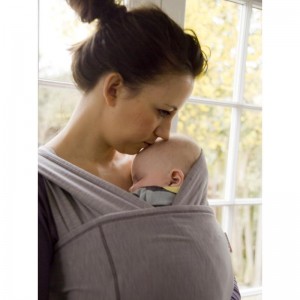 Gentle Responses to Babywearing Negativity
Gentle Responses to Babywearing Negativity
From “Don’t you ever put that poor baby down?” to “My baby did just fine in a buggy”…here are some lovely suggestions for gentle responses to negative comments.
 International Hip Dysplasia Institute
International Hip Dysplasia Institute
Proper baby carrier positioning recommendations from the International Hip Dysplasia Institute.
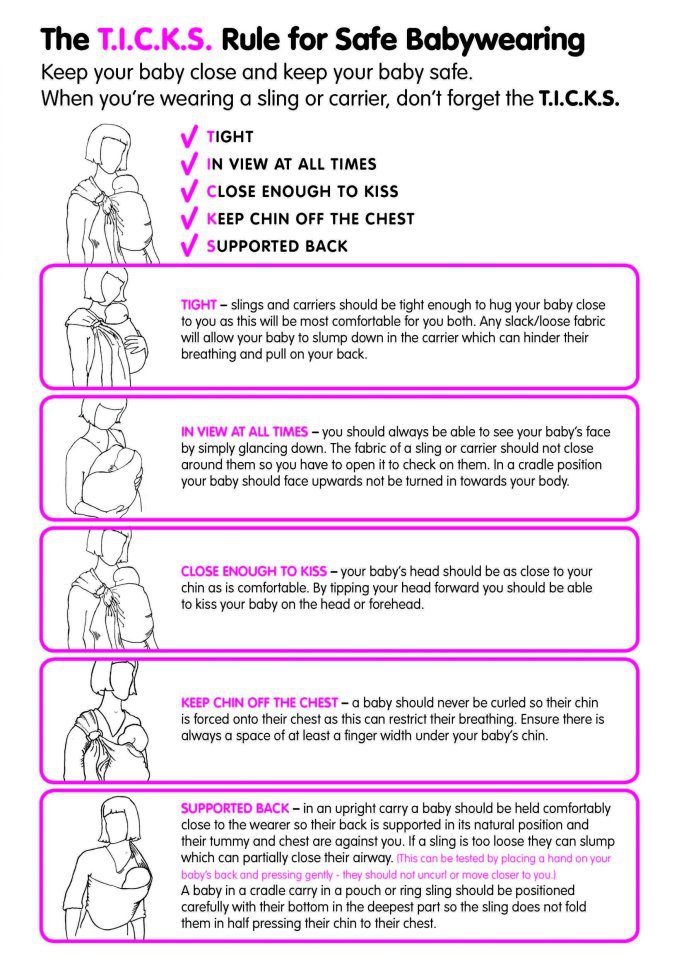
And some YouTube finds…
How to make a no-sew wrap:
A mama of twins demonstrates front and back carries…
Related posts:
Ten Steps to Surviving the First Three Months with a Newborn
Breastfeeding, Babywearing, and Bouncing Back into Shape after Baby
May 14, 2012 | Categories: attachment parenting, babywearing, Uncategorized | Tags: attachment parenting, babywearing | 12 Comments »  Award-winnning author, L.R.Knost, is the founder and director of the children's rights advocacy and family consulting group, Little Hearts/Gentle Parenting Resources, and Editor-in-Chief of Holistic Parenting Magazine. Books by L.R.Knost include Whispers Through Time: Communication Through the Ages and Stages of Childhood ; Two Thousand Kisses a Day: Gentle Parenting Through the Ages and Stages ; The Gentle Parent: Positive, Practical, Effective Discipline ; and Jesus, the Gentle Parent: Gentle Christian Parenting the first four books in the Little Hearts Handbook gentle parenting series, and children’s picture books Petey’s Listening Ears and the soon-to-be-released Grumpykins series.
Award-winnning author, L.R.Knost, is the founder and director of the children's rights advocacy and family consulting group, Little Hearts/Gentle Parenting Resources, and Editor-in-Chief of Holistic Parenting Magazine. Books by L.R.Knost include Whispers Through Time: Communication Through the Ages and Stages of Childhood ; Two Thousand Kisses a Day: Gentle Parenting Through the Ages and Stages ; The Gentle Parent: Positive, Practical, Effective Discipline ; and Jesus, the Gentle Parent: Gentle Christian Parenting the first four books in the Little Hearts Handbook gentle parenting series, and children’s picture books Petey’s Listening Ears and the soon-to-be-released Grumpykins series.
Shared Journeys~Attachment Parenting
Parenting is far more a journey than a destination. As parents we are always learning, always researching, always growing, always adjusting. Sharing our journeys is one way we can support and encourage each other along the way! Here are some really unique ways mamas are sharing their attachment/natural/gentle parenting experiences you might enjoy:
The first is a video by The Single Crunch. Such a beautiful testimony of the love of a mother!
I am a single mom…I breastfeed and practice child-led weaning, babywear, co-sleep, cloth diaper, homebirth, and do whatever else my natural instincts move me to do, regardless of what others may think. I DO NOT “train” my children (using the cry-it-out method to get babies to sleep). I do not spank. I do not vaccinate. I try not to run to modern medicine for every problem I or my children have, opting instead for natural (homeopathic) solutions when possible…I LISTEN to my children. I try to pause before I react and think about life from their point of view. I HAVE NOT ALWAYS LIVED THIS WAY…I’ve had a hard time with many of the ideals of being crunchy, especially as a single mom. It takes time and patience and time. Lots of time. Sometimes I’m not all that patient. I used to spank…I yell…But mainstream parenting never felt right to me. I wanted to meet moms who didn’t think my attachment (and the level of attachment I desired to have) with my children was weird. I found AP because most of the women in my life felt my ideas were silly, unintelligent, impractical, and unnecessary, especially for a mom with no husband. I didn’t care. I knew my children needed more of me. I’ve always felt a strong connection to my children, and I’ve always wanted to parent the way THEY showed me they needed me to, not a way that was convenient for me. I am now working to apply all that I have learned from my other mom friends and the many groups I subscribe to, to make my girls’ lives as safe, healthy, and happy as possible. I want to raise compassionate, secure, intelligent young women who know, understand, and believe that beauty starts within. (Read more at The Single Crunch)
~~~~~~~~~~~~~~
The next is a lovely and honest post from The Mule about the blessings and challenges of breastfeeding on demand:
While I nurse you to sleep…
I...rest. For the first time today, I am still. I am not lifting, carrying, holding, bending, reaching, stretching, scrubbing, wiping, hauling, or lugging. Here in this dark room I lie beside you and allow my body and mind to come to stillness after the chaos of our day. You suck, and tug, you fiddle, and fuss…and slowly come to stillness too, until we both are still, and both are resting…I wait, momentarily, and then, I slowly slide away and leave you sleeping.
While I nurse you to sleep…
I…take stock. I turn over in my mind, the contents of the fridge, the washing on the floor, the money in the bank. I count up the years I’ve had so far and the years I might have left. I work out how old I will be when you are the age I am now – thirty seven – seventy two. I hope I make it. I count the eggs you already have in your body and those I have in mine and I wonder at the people they may become. I think about the person I was before I met you, the life I led, the things I’ve gained and the things I’ve lost, I count them all. I plan the contents of my other daughter’s lunchbox
(Read the rest of this lovely post at While I Nurse You to Sleep…)
~~~~~~~~~~~~~~
This is an excellent and entertaining look at child-led, interest-led learning from Real Child Development.
Trust the child to direct his own learning. For it seems to me a fact that, in our struggle to make sense out of life, the things we most need to learn are the things we most want to learn. To put this another way, curiosity is hardly ever idle. What we want to know, we want to know for a reason. The reason is that there is a hole, a gap, an empty space in our understanding of things, our mental model of the world. We feel that gap like a hole in a tooth and want to fill it up. It makes us ask How? When? Why? While the gap is there, we are in tension, in suspense. Listen to the anxiety in a person’s voice when he says, “This doesn’t make sense!” When the gap in our understanding is filled, we feel pleasure, satisfaction, relief. Things make sense again – or at any rate, they make more sense than they did. When we learn this way, for these reasons, we learn both rapidly and permanently. The person who really needs to know something does not need to be told many times, drilled, tested. Once is enough. The new piece of knowledge fits into the gap ready for it, like a missing piece in a jigsaw puzzle. Once in place, it is held in, it can’t fall out. We don’t forget things that make the world a more reasonable or interesting place for us. (Read the rest of this informative post at Real Child Development)
~~~~~~~~~~~~~~
The next post is from Dulce De Leche‘s ‘Gentle Discipline Toolbox’ series which has an excellent array of topics, ideas, and links!
Redirection and Mutual Solutions
My 19 month old began to love hitting. He wasn’t even angry most of the time. He just got a kick out of the sensation, the noise and the reactions. We tried softly stroking our cheeks with his hands and telling him “Gentle touches”. He giggled and slapped again. My temper and frustration were building, until I recalled something I had read by Dr. Sears. We began teaching him to give us high fives. His face lit up with delight, and he began to repeat it. He still got what he was craving–the game, noise, sensation and excitement–but now it was in a socially acceptable way that didn’t hurt anyone. I would like to say that at least we got a little advance warning as he gleefully squealed, “High fibe!” before striking, but he usually didn’t say it till he was already mid-strike. Still, it was progress… (Read more of this enlightening post at Dulce De Leche)
~~~~~~~~~~~~~~
This last honest and informative article from Positive Parenting: Toddlers and Beyond is a great introduction to positive parenting:
Skeptical About Positive Parenting?
Positive parenting, at the very core of it, isn’t about what you can and can’t do in terms of disciplining, teaching, and guiding your kids. It isn’t even about having the perfect relationship (as there will always be breaks and repairs; such is life). It’s not about techniques or tools, whether or not to use time outs or time ins, consequences or problem-solving. All of those things stem from the practice of what is at the very core of this philosophy, but they are not THE philosophy itself. What it’s really about is the way we view children, their emotions, their needs, their motives. It’s about seeing them as human beings, worthy of respect and unconditional love, delicate, impressionable, who have as much to teach us as we have to teach them… (Read more from Positive Parenting: Toddlers and Beyond)
~~~~~~~~~~~~~~
Related posts:
And Baby Makes Three~Surviving the First Three Months with a Newborn
Bizarre Anti-Cosleeping Ads in Milwaukee a Red Herring?
A Boy, A Girl, and A Baby~Journey to Gentle Parenting
The Measure of Success~Chinese Parents and French Parents Can’t BOTH Be Superior!
Tots to Teens~Communication Through the Ages and Stages
March 25, 2012 | Categories: attachment parenting, baby led weaning, babywearing, Bible, breastfeeding, childhood, children, communication, cosleeping, gentle discipline, gentle parenting, grace-based discipline, homeschooling, natural parenting, nonvaxing, play, positive discipline, positive parenting, preschooler, toddler, Uncategorized | Tags: attachment, attachment parenting, babywearing, breastfeeding, childhood, children, communication, gentle discipline, gentle parenting, homeschooling, natural parenting, play, positive parenting, preschoolers, sacrificial parenting, toddler | 1 Comment »  Award-winnning author, L.R.Knost, is the founder and director of the children's rights advocacy and family consulting group, Little Hearts/Gentle Parenting Resources, and Editor-in-Chief of Holistic Parenting Magazine. Books by L.R.Knost include Whispers Through Time: Communication Through the Ages and Stages of Childhood ; Two Thousand Kisses a Day: Gentle Parenting Through the Ages and Stages ; The Gentle Parent: Positive, Practical, Effective Discipline ; and Jesus, the Gentle Parent: Gentle Christian Parenting the first four books in the Little Hearts Handbook gentle parenting series, and children’s picture books Petey’s Listening Ears and the soon-to-be-released Grumpykins series.
Award-winnning author, L.R.Knost, is the founder and director of the children's rights advocacy and family consulting group, Little Hearts/Gentle Parenting Resources, and Editor-in-Chief of Holistic Parenting Magazine. Books by L.R.Knost include Whispers Through Time: Communication Through the Ages and Stages of Childhood ; Two Thousand Kisses a Day: Gentle Parenting Through the Ages and Stages ; The Gentle Parent: Positive, Practical, Effective Discipline ; and Jesus, the Gentle Parent: Gentle Christian Parenting the first four books in the Little Hearts Handbook gentle parenting series, and children’s picture books Petey’s Listening Ears and the soon-to-be-released Grumpykins series.
A Mile In Their Shoes
Before you judge someone, walk a mile in their shoes. ~Unknown
My mother always taught me to think about things from other people’s perspective before reacting to them, a life lesson that has translated into the empathetic, gentle style of parenting I teach, write about, and follow with my own children. Discerning what other people feel isn’t always easy, of course, and our own experiences, attitudes, and emotions can get in the way. But seeking to not just understand, but to really feel what another person feels is vital to true communication and connection. To that end, I try to always ask myself, whether interacting with my children, my husband, or any other person who crosses my path, “How would I feel if…”
So come, take a walk with me~
 How would I feel if I was suddenly thrust from my safe, familiar world into a startlingly new and uncomfortable world where I couldn’t function on my own, where my very survival depended entirely on beings who I didn’t know, didn’t understand, and who didn’t understand me? Would I learn to feel safe in this new world if they left me for hours on end in dark places with no way to communicate, no way to meet my own needs? Or would I learn to trust these new beings if my needs were met day and night, if they were always available, always responsive, always gentle?
How would I feel if I was suddenly thrust from my safe, familiar world into a startlingly new and uncomfortable world where I couldn’t function on my own, where my very survival depended entirely on beings who I didn’t know, didn’t understand, and who didn’t understand me? Would I learn to feel safe in this new world if they left me for hours on end in dark places with no way to communicate, no way to meet my own needs? Or would I learn to trust these new beings if my needs were met day and night, if they were always available, always responsive, always gentle?
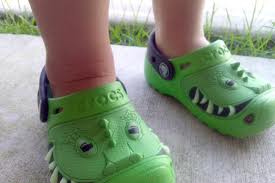 How would I feel if I was a small person in a big world, a world where large beings were constantly jabbering at me in a language I barely understood, a world where everything was a challenge, from climbing out of a chair to learning to control my bodily functions, a world where every day, all day long, I was confronted with new things to taste, new things to explore, new things to discover. If I tried to communicate and no one slowed down to listen, would I learn to listen? If I got overwhelmed by all the new challenges and was punished, would I learn how to cope with my emotions? If I was snatched away from my explorations with no warning, no explanation, would I learn to respect other people’s spaces and paces? Or would I learn to listen if I was heard, cope if I was helped, and respect if I was respected?
How would I feel if I was a small person in a big world, a world where large beings were constantly jabbering at me in a language I barely understood, a world where everything was a challenge, from climbing out of a chair to learning to control my bodily functions, a world where every day, all day long, I was confronted with new things to taste, new things to explore, new things to discover. If I tried to communicate and no one slowed down to listen, would I learn to listen? If I got overwhelmed by all the new challenges and was punished, would I learn how to cope with my emotions? If I was snatched away from my explorations with no warning, no explanation, would I learn to respect other people’s spaces and paces? Or would I learn to listen if I was heard, cope if I was helped, and respect if I was respected?
 How would I feel if I was an adult-sized person, my body flooded with a consistently inconsistent rush of mind-altering hormones, in a world of adults who demanded adult maturity from me, but treated me like a child? Would I learn to cope with the huge life changes taking place if my awkwardness incited conflict instead of compassion? Would I be willing to share my struggles if my still-growing communication skills were taken at face value instead of my heart being heard? Would I desire to make good choices if the most important people in my life didn’t trust me enough to let me make them? Or would I learn confidence by being understood, trust by being truly heard, responsibility by being trusted to be responsible?
How would I feel if I was an adult-sized person, my body flooded with a consistently inconsistent rush of mind-altering hormones, in a world of adults who demanded adult maturity from me, but treated me like a child? Would I learn to cope with the huge life changes taking place if my awkwardness incited conflict instead of compassion? Would I be willing to share my struggles if my still-growing communication skills were taken at face value instead of my heart being heard? Would I desire to make good choices if the most important people in my life didn’t trust me enough to let me make them? Or would I learn confidence by being understood, trust by being truly heard, responsibility by being trusted to be responsible?
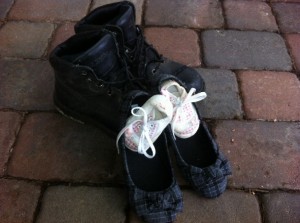 How would I feel if I was a new parent, struggling with exhaustion, overwhelmed by newness, desperate to make the right decisions for my precious new baby, but was surrounded by conflicting advice and head-shakers and nay-sayers? Would I learn to trust my instincts if every choice I made was the subject of commentary and unsolicited advice? Would I grow into my new role if I was pushed and shamed and coerced into following other people’s parenting choices? Would I learn to share my fears and concerns if they were met with negativity, ridicule, and debate? Or would I find my own path in the world of parenting if I was allowed to listen to my heart? Would I discover my parenting niche if I was trusted to make my own choices? Would I be open to new ideas and find support if my struggles were met with reassurance and compassion and acceptance?
How would I feel if I was a new parent, struggling with exhaustion, overwhelmed by newness, desperate to make the right decisions for my precious new baby, but was surrounded by conflicting advice and head-shakers and nay-sayers? Would I learn to trust my instincts if every choice I made was the subject of commentary and unsolicited advice? Would I grow into my new role if I was pushed and shamed and coerced into following other people’s parenting choices? Would I learn to share my fears and concerns if they were met with negativity, ridicule, and debate? Or would I find my own path in the world of parenting if I was allowed to listen to my heart? Would I discover my parenting niche if I was trusted to make my own choices? Would I be open to new ideas and find support if my struggles were met with reassurance and compassion and acceptance?
 How would I feel if I was a strong, wise, gifted person in a body that was beginning to fail me with age? Would I feel valued if others only saw my frailty and not my strength? Would I offer wisdom if my life experiences were ridiculed? Would I share my gifts if no one bothered to slow down and recognize them? Or would I still feel I had life to live, something to give if my stories were heard, if my wisdom was received, if someone, anyone, took the time to sit with me and talk for awhile.
How would I feel if I was a strong, wise, gifted person in a body that was beginning to fail me with age? Would I feel valued if others only saw my frailty and not my strength? Would I offer wisdom if my life experiences were ridiculed? Would I share my gifts if no one bothered to slow down and recognize them? Or would I still feel I had life to live, something to give if my stories were heard, if my wisdom was received, if someone, anyone, took the time to sit with me and talk for awhile.
The Seven Wonders of the World of Childhood
Playground Confessions~Look Who’s Talking!
The Measure of Success~Chinese Parents and French Parents Can’t BOTH Be Superior!
March 10, 2012 | Categories: adolescence, attachment parenting, birth, character, childhood, children, communication, cosleeping, elderly, gentle discipline, gentle parenting, life, meltdown, newborn, play, preschooler, soothing, tantrum, teens, toddler, wisdom | Tags: adolescence, attachment parenting, childhood, children, communication, discipline, gentle discipline, gentle parenting, newborn, parenting, play, tantrum, teens, toddler | 4 Comments »  Award-winnning author, L.R.Knost, is the founder and director of the children's rights advocacy and family consulting group, Little Hearts/Gentle Parenting Resources, and Editor-in-Chief of Holistic Parenting Magazine. Books by L.R.Knost include Whispers Through Time: Communication Through the Ages and Stages of Childhood ; Two Thousand Kisses a Day: Gentle Parenting Through the Ages and Stages ; The Gentle Parent: Positive, Practical, Effective Discipline ; and Jesus, the Gentle Parent: Gentle Christian Parenting the first four books in the Little Hearts Handbook gentle parenting series, and children’s picture books Petey’s Listening Ears and the soon-to-be-released Grumpykins series.
Award-winnning author, L.R.Knost, is the founder and director of the children's rights advocacy and family consulting group, Little Hearts/Gentle Parenting Resources, and Editor-in-Chief of Holistic Parenting Magazine. Books by L.R.Knost include Whispers Through Time: Communication Through the Ages and Stages of Childhood ; Two Thousand Kisses a Day: Gentle Parenting Through the Ages and Stages ; The Gentle Parent: Positive, Practical, Effective Discipline ; and Jesus, the Gentle Parent: Gentle Christian Parenting the first four books in the Little Hearts Handbook gentle parenting series, and children’s picture books Petey’s Listening Ears and the soon-to-be-released Grumpykins series.
The Elves and the Homemaker
You’ve all heard the story of the industrious, magical little elves who went behind the poor, but good-hearted, shoemaker and finished his work for him, saving his shop and rewarding him for his hard work. This is not that story…
 Once upon a time there was a kind, hard-working homemaker named Elvimama. She had five children, Elvin, Elvira, Elvish, Elvis, and Baby Elvie. Elvimama worked hard every day to feed her five children Elftritious foods, teach them their Elfessons, make sure they practiced on their Elviolins, take them to their Elfootball and Elfallet practices while she grabbed an hour at Elfercize (wearing Baby Elvie, of course!), and then rushed back home to put a healthy, home-cooked Elfalicious meal on the table for dinner. Life was busy, but good…except for one thing.
Once upon a time there was a kind, hard-working homemaker named Elvimama. She had five children, Elvin, Elvira, Elvish, Elvis, and Baby Elvie. Elvimama worked hard every day to feed her five children Elftritious foods, teach them their Elfessons, make sure they practiced on their Elviolins, take them to their Elfootball and Elfallet practices while she grabbed an hour at Elfercize (wearing Baby Elvie, of course!), and then rushed back home to put a healthy, home-cooked Elfalicious meal on the table for dinner. Life was busy, but good…except for one thing.
Their Elfhouse was a mess! No matter how hard Elvimama worked, no matter how carefully she organized her day, or how little sleep she got, her Elfhousekeeping ended up looking rather…well, unkept.
She’d start with the bedrooms each morning, straightening and sweeping and organizing, then move on to the kitchen and work her way through the morning dishes and then sweep and mop and take out the trash, before heading to the Elfamily room to polish and vacuum. But she was plagued by a strange phenomenon every single day…as soon as she was finished with one room and had moved on to another, the first room mysteriously returned to it’s former state of disarray! And when she finished the second room and moved on to the third, the second room was also suddenly back to a disheveled mess!
This pattern when on throughout her day, with each bedroom cleaned, then miraculously uncleaned, the kitchen spotless, then instantly a sticky stack of unwashed dishes appearing when she headed for the Elfamily room. And, even there, when she’d polished and vacuumed and straightened, the second she walked out, piles of toys walked right back in!
Day after day, week after week, month after month, year after year, this phenomenon continued, with Elvimama starting every day with a messy house, spending every day cleaning and cleaning and cleaning, only to end every day with a still-messy house!
It was frustrating and exhausting, and sometimes Elvimama would head to the bathroom for a long soak in the tub and a good cry. But, inevitably, little elf-hands would come knocking on the door and little elf-voices would be calling out for Elvimama’s attention. Her long soak always turned into a quick wash, and she’d mop up her tears and emerge with a smile and arms ready to gather her little elf-loves close.
Time passed, and Elvin and Elvira went off to college. Elvish joined the Elf-Corp, and Elvis made the big-time in Nashville. Baby Elvie grew up and opened a little bookstore called The Elf Shelf.
One morning, Elvimama got up and started with the bedrooms, straightening and sweeping and organizing, then moved on to the kitchen and worked her way through the morning dishes and then swept and mopped and took out the trash, before heading to the Elfamily room to polish and vacuum and straighten. When she was finished, she stopped and stared in shocked silence. Everything was…spotless…pristine.
No jumbled piles of clothes had unfolded themselves in the bedrooms. No sticky stack of dishes had reappeared in the kitchen. No toys had marched back into the Elfamily room.
Her house was finally clean, but her heart longed for jelly fingerprints and funny little dirt-smudged elf-faces, muddy footprints and sticky little giggle-grin kisses. Elvimama sighed and headed to the bathroom for a long soak in the tub. Now, no little elf-hands came knocking on the door and no little elf-voices called out for Elvimama’s attention.
And Elvimama had a good cry.
~~~~~~~~~~
A mother’s love is strong enough to hold her children close when they’re young and she longs for rest, and to let them go when they grow up and she longs for the past.
L.R.Knost
Related posts:
Mommies are Mountain Climbers and Sisyphus was a Sissy
The Story of Us~25 Years and Counting!
February 27, 2012 | Categories: attachment parenting, babywearing, bookish, books, childhood, children, family, food, homeschooling, life, love | Tags: attachment parenting, babywearing, childhood, children, family, food, gentle, homeschooling, parenting, sacrifice, sacrificial parenting | 4 Comments »  Award-winnning author, L.R.Knost, is the founder and director of the children's rights advocacy and family consulting group, Little Hearts/Gentle Parenting Resources, and Editor-in-Chief of Holistic Parenting Magazine. Books by L.R.Knost include Whispers Through Time: Communication Through the Ages and Stages of Childhood ; Two Thousand Kisses a Day: Gentle Parenting Through the Ages and Stages ; The Gentle Parent: Positive, Practical, Effective Discipline ; and Jesus, the Gentle Parent: Gentle Christian Parenting the first four books in the Little Hearts Handbook gentle parenting series, and children’s picture books Petey’s Listening Ears and the soon-to-be-released Grumpykins series.
Award-winnning author, L.R.Knost, is the founder and director of the children's rights advocacy and family consulting group, Little Hearts/Gentle Parenting Resources, and Editor-in-Chief of Holistic Parenting Magazine. Books by L.R.Knost include Whispers Through Time: Communication Through the Ages and Stages of Childhood ; Two Thousand Kisses a Day: Gentle Parenting Through the Ages and Stages ; The Gentle Parent: Positive, Practical, Effective Discipline ; and Jesus, the Gentle Parent: Gentle Christian Parenting the first four books in the Little Hearts Handbook gentle parenting series, and children’s picture books Petey’s Listening Ears and the soon-to-be-released Grumpykins series.
A Return to Childhood
[By L.R.Knost, author of Two Thousand Kisses a Day: Gentle Parenting Through the Ages and Stages, Whispers Through Time: Communication Through the Ages and Stages of Childhood, and The Gentle Parent: Positive, Practical, Effective Discipline available on Amazon and through other major retailers.]
 There is such a rush these days to get children sleeping through the night, weaned off the breast, eating solid foods, potty trained, reading independently, and on and on, that we seem to have lost the ability to simply enjoy life as it happens and let our children do the same. Gone are the days of making mud-pies and playing in piles of leaves. They’ve been replaced with flashcards, language immersion (even in the womb!), educational dvd’s, and the like. Preschool has become the new kindergarten, with parents rushing to get on waiting lists for the ‘best of the best’ preschools, often even before their first prenatal appointment!
There is such a rush these days to get children sleeping through the night, weaned off the breast, eating solid foods, potty trained, reading independently, and on and on, that we seem to have lost the ability to simply enjoy life as it happens and let our children do the same. Gone are the days of making mud-pies and playing in piles of leaves. They’ve been replaced with flashcards, language immersion (even in the womb!), educational dvd’s, and the like. Preschool has become the new kindergarten, with parents rushing to get on waiting lists for the ‘best of the best’ preschools, often even before their first prenatal appointment!
Therapists in New York have reported an increase in parents seeking psychiatric services for stress related to the intensely “cutthroat” admissions process for top-rated private preschools and kindergartens. “Parenting is a competitive sport,” says Dr. Lisa Spiegel. And that competition is leading parents to ask if their three-year-old should wear suits to preschool interviews, which designer purses are best to carry on school tours, and even if they should be induced into early delivery so their child “could be considered for kindergarten before the Sept. 1 cutoff date.” (New York Post, see link below)
One would assume, with all of this emphasis on independence and education, that we would be moving forward as a society to a more self-sufficient, competent, and well-educated populace which, by extension, might reasonably be assumed to have less need of welfare programs and prisons. One would assume wrong, unfortunately.
By way of comparison, in 1960, welfare spending in the United States was $48.20 per capita with 1.7% of the population receiving federal assistance. (infoplease.com) By 2010 it had increased to $2256.40 per capita (usgovernmentspending.com) with 8.0% of the population receiving assistance. (wiki.answers.com) In 1960, 0.18% of the US population was imprisoned, whereas in 2010 that number had climbed to 0.74% (businessinsider.com) with drug use, rape, and assault rates skyrocketing.
So what happened? Obviously, there are many contributing factors, but one often overlooked, powerful contributor is how we parent our children. Study after study has confirmed that early childhood experiences have a profound impact on adult behavior, achievement, and satisfaction with life. The modern emphasis on ever-earlier independence and academics seems to inadvertently be sacrificing the very things they are designed to accomplish, and the modern view of parenting as a “competition” is setting the stage for stress, conflict, and failure.
Perhaps it is time for parents to reevaluate their priorities and realize their children are blessings to be cherished and nurtured, not pawns in a cut-throat game of strategy and intrigue. Perhaps it is time for a return to childhood, to simplicity, to running and climbing and laughing in the sunshine, to experiencing happiness instead of being trained for a lifetime of pursuing happiness…perhaps it is time to let children be children again:
1) Let babies be babies~in other words, baby them! Babies are completely and totally helpless in every way. Medical experts agree that it isn’t possible to spoil a newborn, so responding promptly to cries will simply help them learn to trust that their needs will be met. Babies left to cry-it-out often do end up sleeping through the night earlier than babies whose needs are responded to because they have learned to give up on their needs being met. But that gain of sleeping through the night is accomplished at the loss of trust, and the resultant stress and long-term consequences simply aren’t worth it. (Surviving the First Three Months with a Newborn) Stress causes our bodies to release a hormone called cortisol which, when present for prolonged periods, can dramatically undermine brain development in babies and permanently impair brain function for life. Some causes of stress in babies are extended illnesses, detached parenting, and separation from their mothers, which has been linked to long-term anxiety and anti-social behavior. (News, Science and Environment)
2) Let human babies drink human milk~in other words, nurse them! Breastfeeding beyond the typical 6-12 month period has been shown to improve not only overall IQ’s in children, but also improve health and social outcomes. Children who are breastfed for 24+ months are less likely to have allergies and more likely to have healthy immune systems. (kellymom.com) Also, according to the World Health Organization, “a modest increase in breastfeeding rates could prevent up to 10% of all deaths of children under five,” due, in part, to tainted water supplies, but also due to the immunity factors. And, socially, studies have shown repeatedly that, “Meeting a child’s dependency needs is the key to helping that child achieve independence.” (Elizabeth N. Baldwin, Esq. ‘Extended Breastfeeding and the Law.’)
3) Let children know they matter~in other words, listen and respond to them! Strong, healthy attachment in parent/child relationships has been linked to increased success rates in future marriage, greater career satisfaction, and overall stability and emotional health in adulthood. Children raised with detached parents tend to be forced into premature independence through sleep training, rigid discipline, and too early and/or prolonged separation from parents, often resulting in long-term dependency, attachment, and satisfaction issues. “Decades of research, including longitudinal studies, have shown that as securely attached babies get older, they form better relationships with others, have higher self-esteem, are more flexible and resilient under stress, and perform better in every aspect of life, from schoolwork to peer interactions.” (Dr. Laura Markham)
4) Let children see you being ‘good’~in other words, model the behavior you desire! Children are born observers and the first people they observe, with an almost scientific intensity, are their parents. Modeling appropriate and desirable behavior to children such as self-control, compassion, helpfulness, listening, respect, etc is a powerful tool in passing along these qualities to the next generation. “Discipline is everything you put into children that influences how they turn out…Whatever your ultimate objectives, they must be rooted in helping your child develop inner controls that last a lifetime. You want the guidance system that keeps the child in check at age four to keep his behavior on track at age forty, and you want this system to be integrated into the child’s whole personality, a part of him or her.” (Dr. William Sears)
5) Let children play~in other words, don’t rush them into growing up! Study after study has shown that children learn more, retain knowledge better, and maintain their natural curiosity and love of learning when they are allowed to learn through a combination of unstructured and guided play. The trend these days is to start children in academic-centered preschools as early as two years old and then move them into academically rigorous kindergarten programs, often while still four years of age. “While many children do fine in kindergarten and first grade, by the time they reach second grade, ‘they can’t hold it together — they fall apart and really struggle.’” (Colvin) “Newspapers and magazines across the country are reporting that kindergarten is the new first grade—full of pressure and short on play.”(What to Expect in Kindergarten) “As the parent of a child entering kindergarten, you’re sure to be shocked and amazed by what’s changed since your days on the story rug. Kindergarten isn’t what it used to be…many of the changes you observe make kindergarten a more challenging and potentially pressuring stage, it’s all in the name of teaching your child more effectively.”(Kindergarten Assessment) However, effective teaching is a subjective subject. Is teaching effective if it results in children who are capable of rote memorization and passing standardized tests, but lack imagination, curiosity, and a love of reading? Or is teaching more effective if it results in children who are innovative, pioneering, and life-long learners?
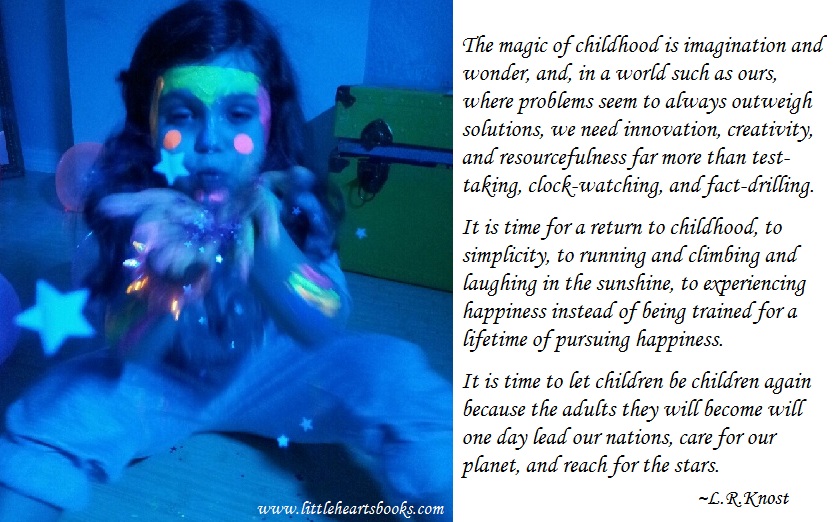
Do you think my little dirt magnet enjoyed her homeschool day?
Related posts:
The Seven Wonders of the World of Childhood
Raising Super Readers~The MARVELous Power of Comic Books!
The Measure of Success~Chinese Parents and French Parents Can’t BOTH Be Superior!
Alphabet Fun~Imagination From A to Z!
Live to Play~Play to Learn~Learn to Live!
One Slippery Sock & Other Silly Tools for your Parenting Toolbox!
February 22, 2012 | Categories: attachment parenting, breastfeeding, childhood, children, communication, gentle parenting, kindergarten, life, literacy, love, marriage, newborn, nursing, play, positive parenting, preschooler, reading, soothing, stress, toddler | Tags: attachment, attachment parenting, breastfeeding, childhood, children, communication, gentle parenting, kindergarten, nature, newborn, outdoors, parenting, park, play, playground, positive parenting, preschoolers | 30 Comments »  Award-winnning author, L.R.Knost, is the founder and director of the children's rights advocacy and family consulting group, Little Hearts/Gentle Parenting Resources, and Editor-in-Chief of Holistic Parenting Magazine. Books by L.R.Knost include Whispers Through Time: Communication Through the Ages and Stages of Childhood ; Two Thousand Kisses a Day: Gentle Parenting Through the Ages and Stages ; The Gentle Parent: Positive, Practical, Effective Discipline ; and Jesus, the Gentle Parent: Gentle Christian Parenting the first four books in the Little Hearts Handbook gentle parenting series, and children’s picture books Petey’s Listening Ears and the soon-to-be-released Grumpykins series.
Award-winnning author, L.R.Knost, is the founder and director of the children's rights advocacy and family consulting group, Little Hearts/Gentle Parenting Resources, and Editor-in-Chief of Holistic Parenting Magazine. Books by L.R.Knost include Whispers Through Time: Communication Through the Ages and Stages of Childhood ; Two Thousand Kisses a Day: Gentle Parenting Through the Ages and Stages ; The Gentle Parent: Positive, Practical, Effective Discipline ; and Jesus, the Gentle Parent: Gentle Christian Parenting the first four books in the Little Hearts Handbook gentle parenting series, and children’s picture books Petey’s Listening Ears and the soon-to-be-released Grumpykins series.

